-
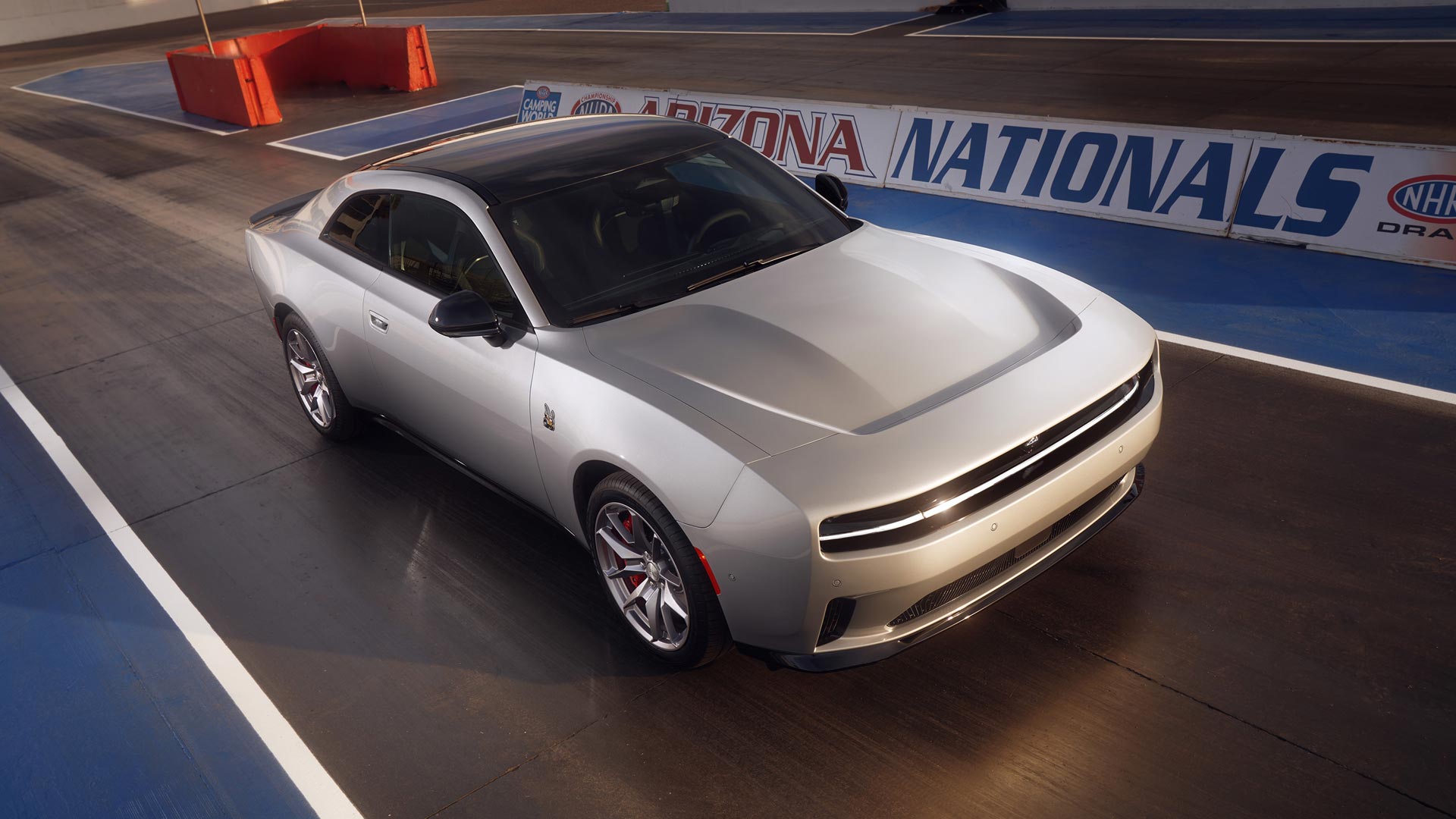
A lot of Dodge history to charge through
© StellantisThe Dodge Charger has changed a lot in almost 60 years. The famous nameplate has appeared in various different guises, evolving to fit the automotive mood of the time.
This includes the brand new 2024 version, which brings electrification to the muscle car party. With the promise of 0-60 mph in 3.3 seconds, the electric Charger Daytona Scat Pack aims to continue the car’s high-performance legacy.
Join us for a detailed look at the highs and lows of the Dodge Charger, all the way to the very latest electric version.
-
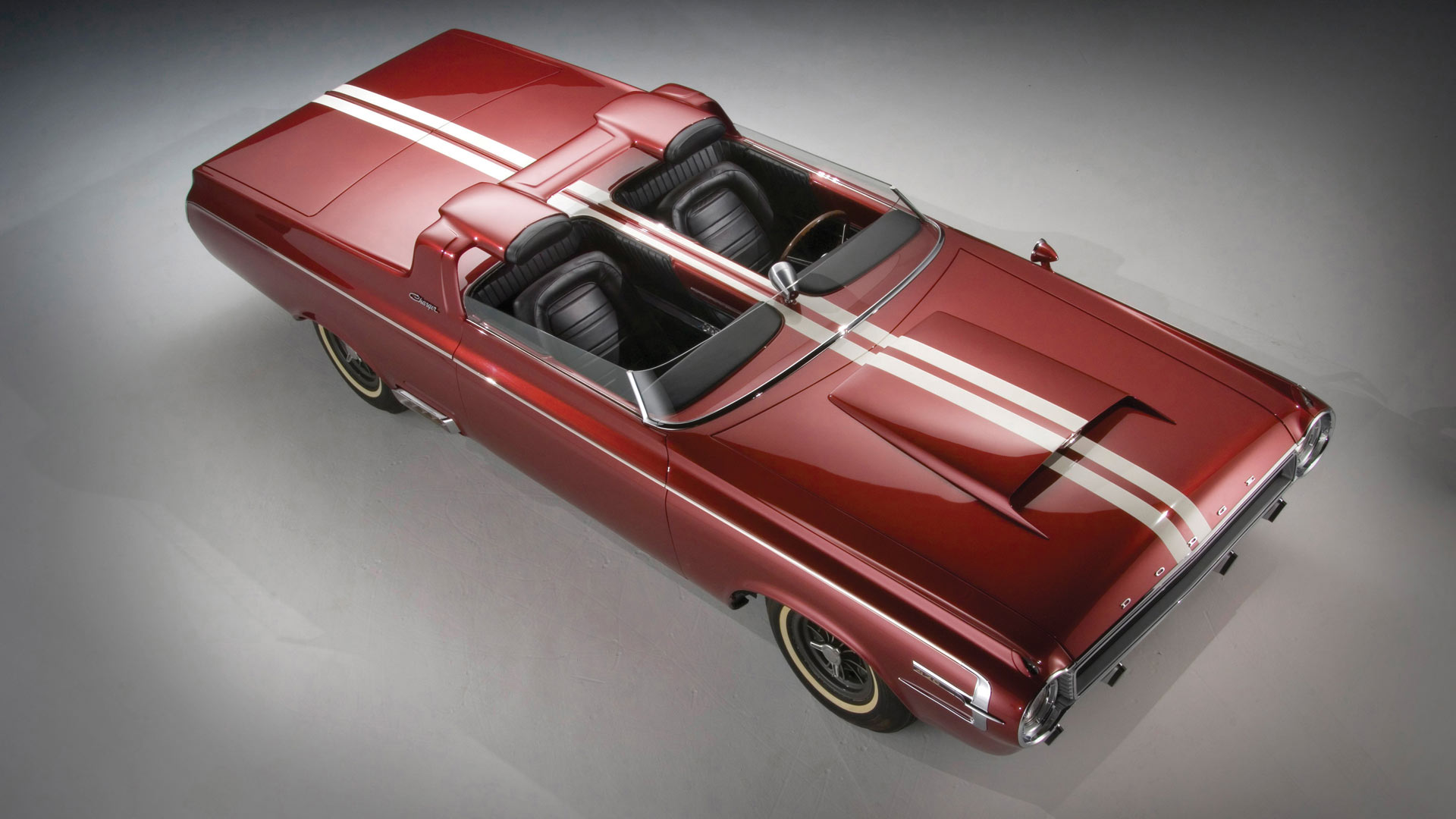
1964 Dodge Hemi Charger Concept
© RM AuctionsWhen the Dodge Charger name first made an appearance on a 1964 concept car, the Hemi engine beneath the hood was the focus of attention. Created from a radically modified Dodge Polara, the Hemi Charger Concept was intended to showcase the 426-cubic inch V-8 engine.
A reaction to the Pontiac GTO muscle car, the Chrysler Corporation hoped the dramatic looks and big power would wow auto show crowds.
Many of the parts were created by hand, including the two-seater cabin and roll bar with integrated headrests. The original concept car has appeared on the auction circuit, being sold for more than $700,000 in 2011.
-
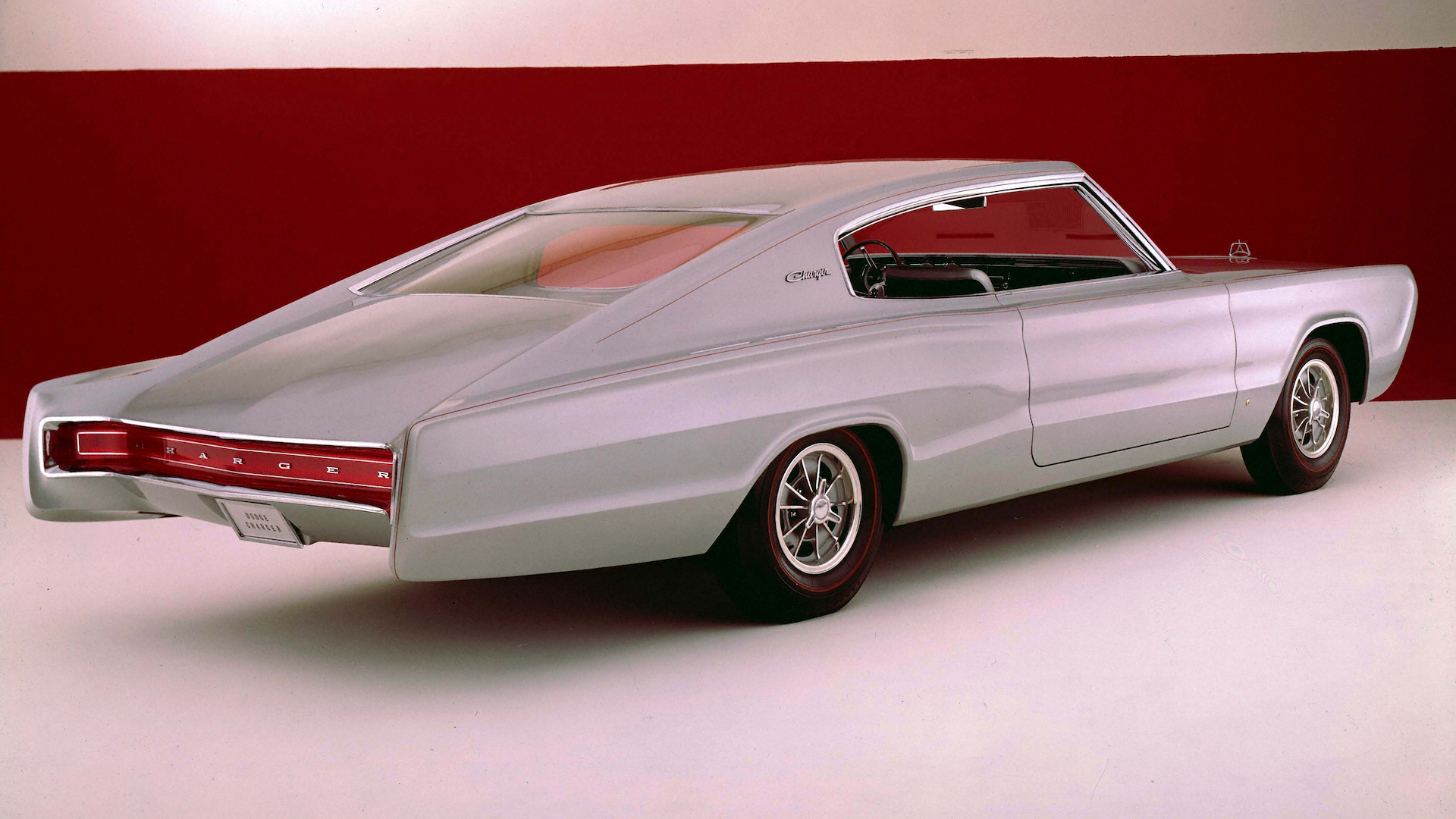
1965 Dodge Charger II Concept
© StellantisThe following year saw the debut of the Charger II Concept, first shown to the public at the 1965 Chicago Auto Show. Unlike the previous roadster, the Charger II was a more conventional fastback design.
A long hood could see the largest Chrysler engines fitted with ease, with the interior featuring four bucket seats. The rear seats could be folded flat, offering the combination of both practicality and performance.
-
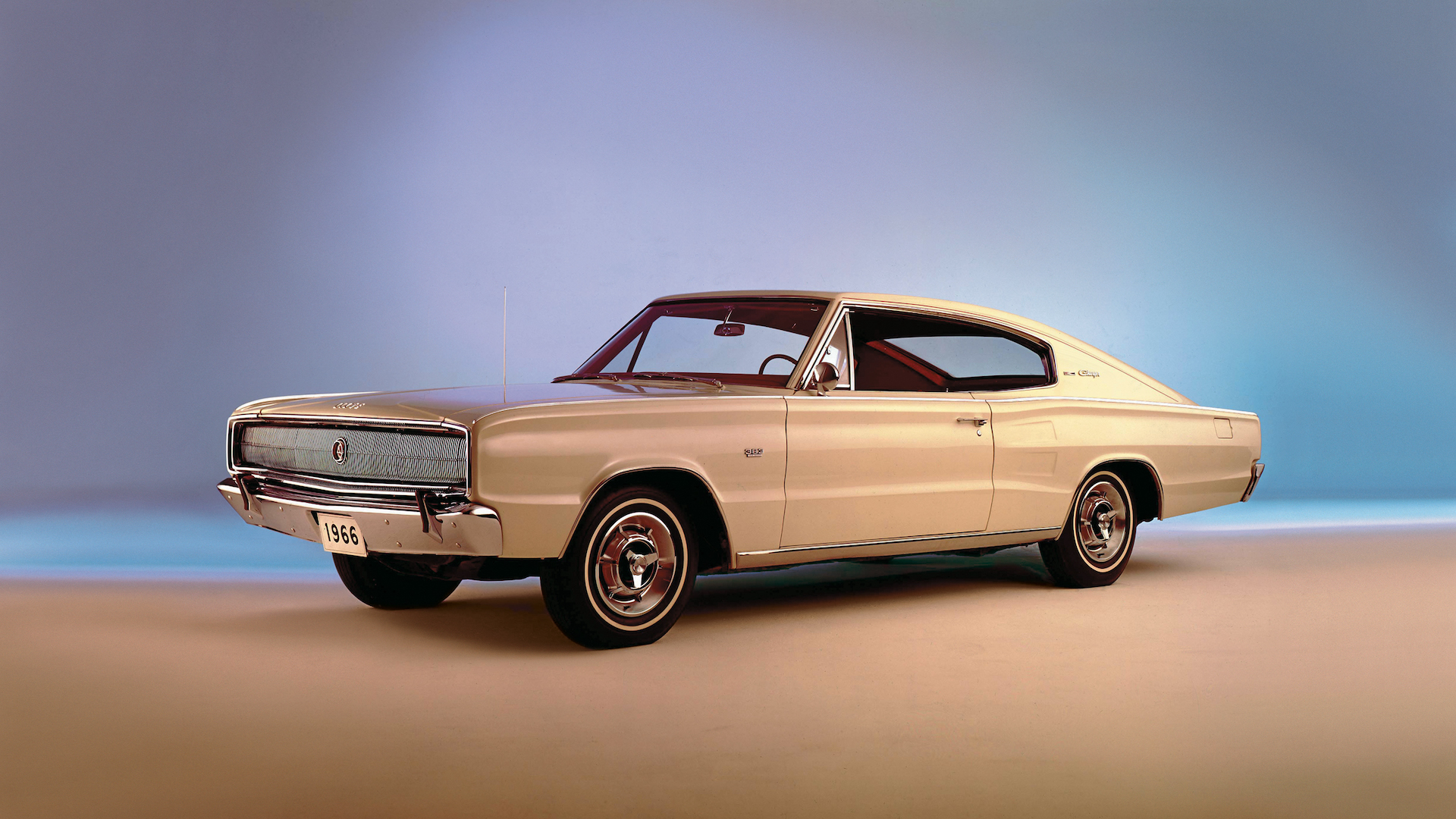
1966 Dodge Charger
© StellantisWhile the Charger II Concept was said to have been used to judge public reaction, Chrysler had already decided that the finished car would go into production for the 1966 model year.
Based upon the Chrysler B-Body, the Charger was a direct relative of the mid-size Dodge Coronet range of cars.
Only minor changes were made from the concept, with hidden headlights and a convex chrome grille the most prominent alterations. A special Charger badge was fitted to the center of the front grille, with Dodge keen for the car to be recognized as a standalone model.
-
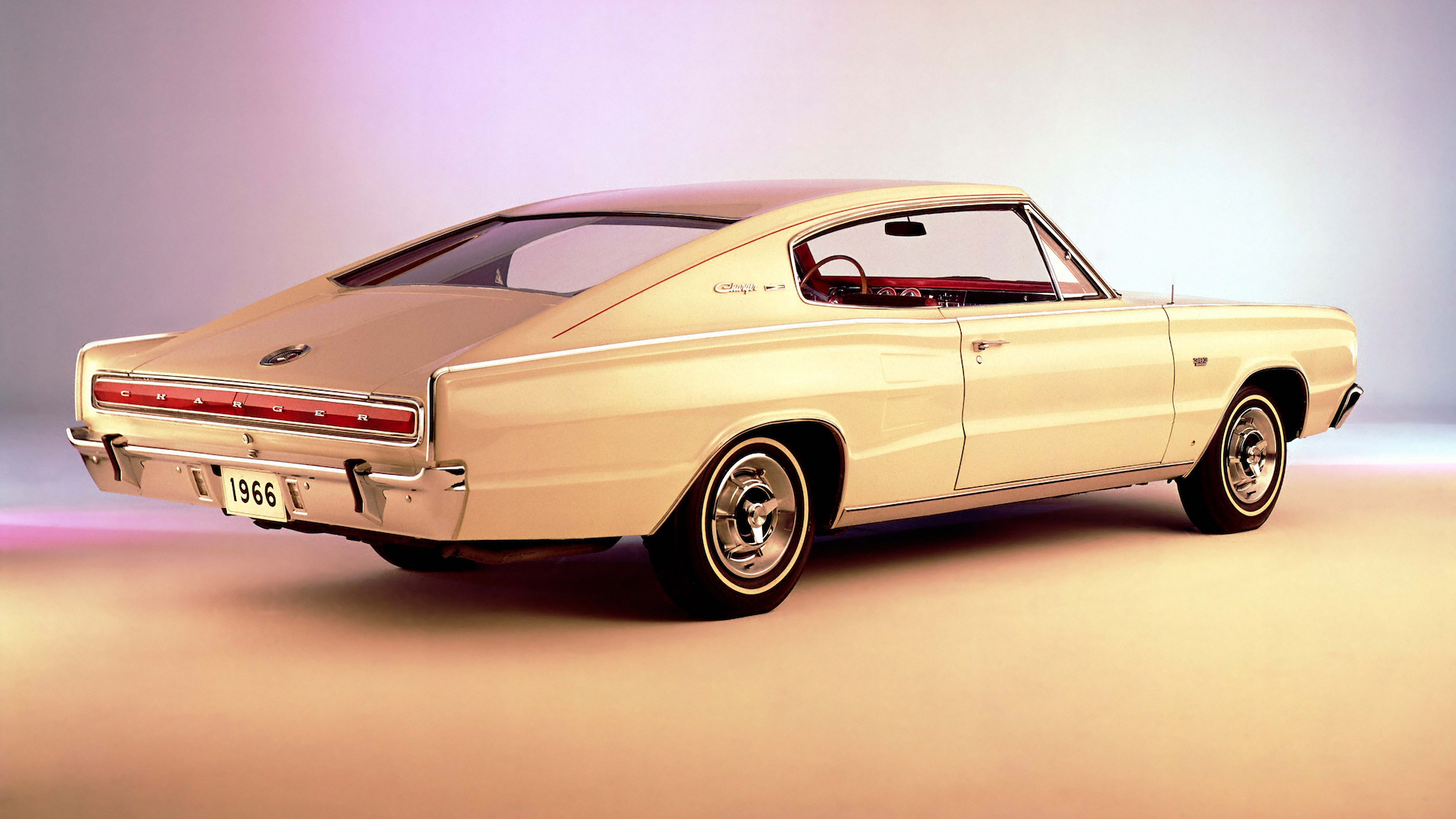
1966 Dodge Charger
© StellantisThe sweeping fastback roof saw comparisons made to the contemporary Rambler Marlin and Plymouth Barracuda. Although the fastback was not as steeply raked as the concept car, the full-width tail lights with chrome Charger lettering remained.
An opening rear hatch allowed access to the storage space inside, with the rear bucket seats still able to be folded flat.
-
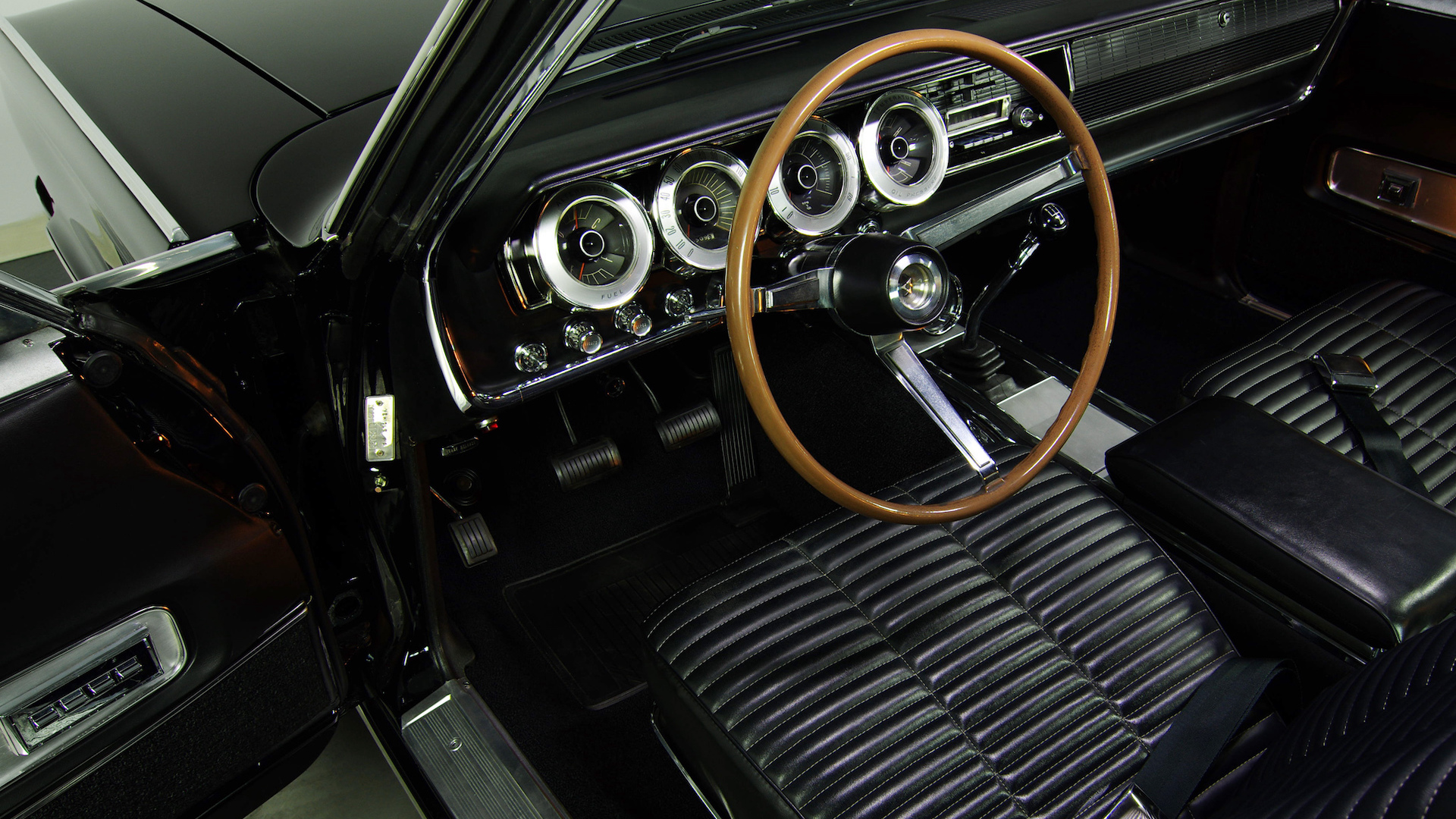
1966 Dodge Charger
© StellantisArguably just as dramatic as the exterior was the futuristic-looking interior of the Charger. The instrument panel featured four round pods, including a 150 mph speedometer and a tachometer that ran to 6,000 rpm.
Instead of regular lighting, the instrument gauges were lit through electroluminescence. This gave the Charger’s interior a Space Age feel, while a wood grain steering wheel and full-length center console added a degree of luxury.
-
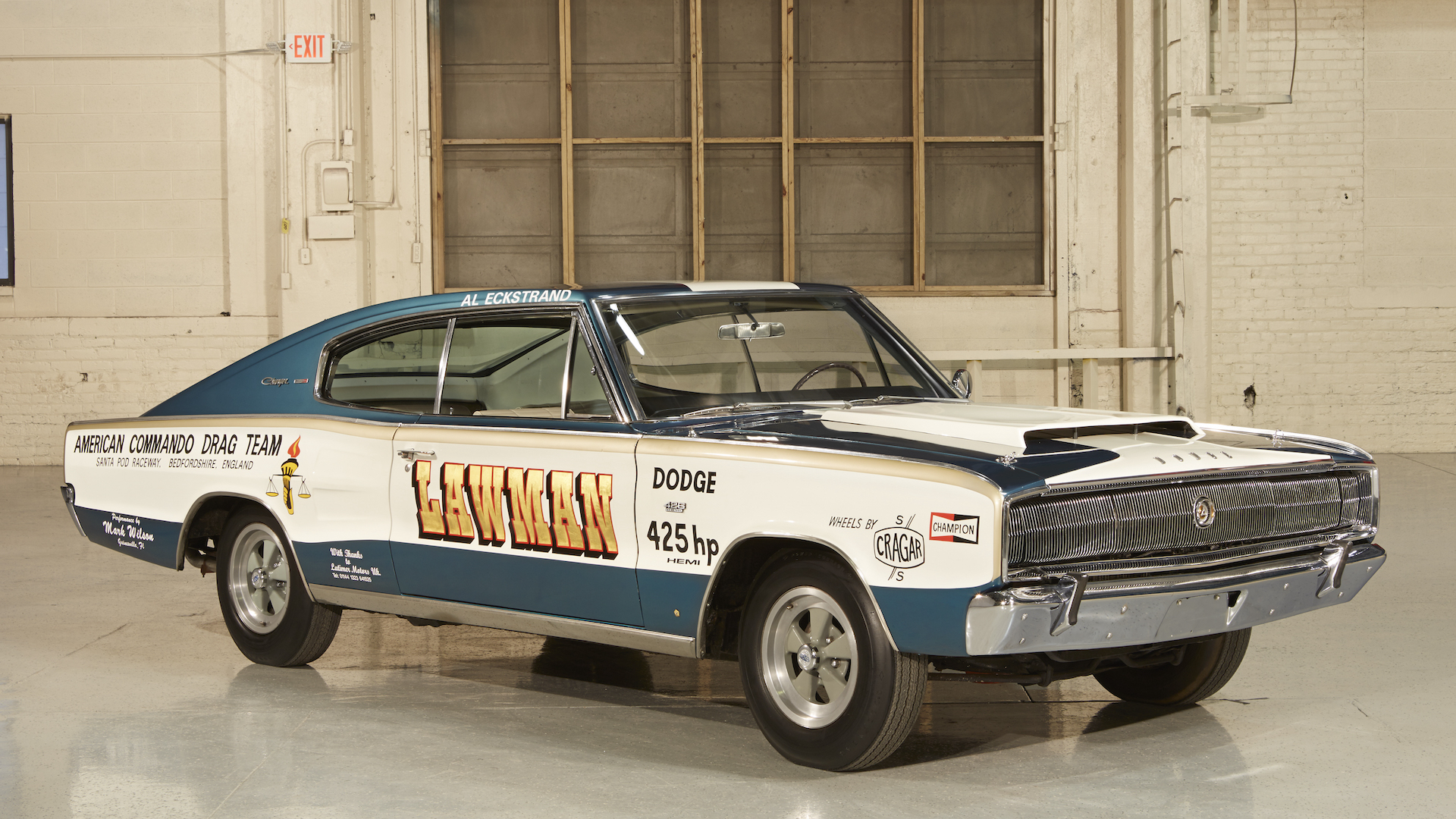
1966 Dodge Charger
© StellantisWith the original Hemi Charger Concept created to show off the 426-cubic inch V-8 engine, naturally the 425 horsepower was on offer for 1966. The 426 Hemi was an expensive option, being fitted to fewer than 500 cars for the first model year.
A 318-cubic inch V-8 was the standard engine for the Charger. On the options list were larger 361-ci and 383-ci V-8s.
Controlling the power was a three-speed manual transmission, with the option of a four-speed manual or three-speed automatic, too.
-
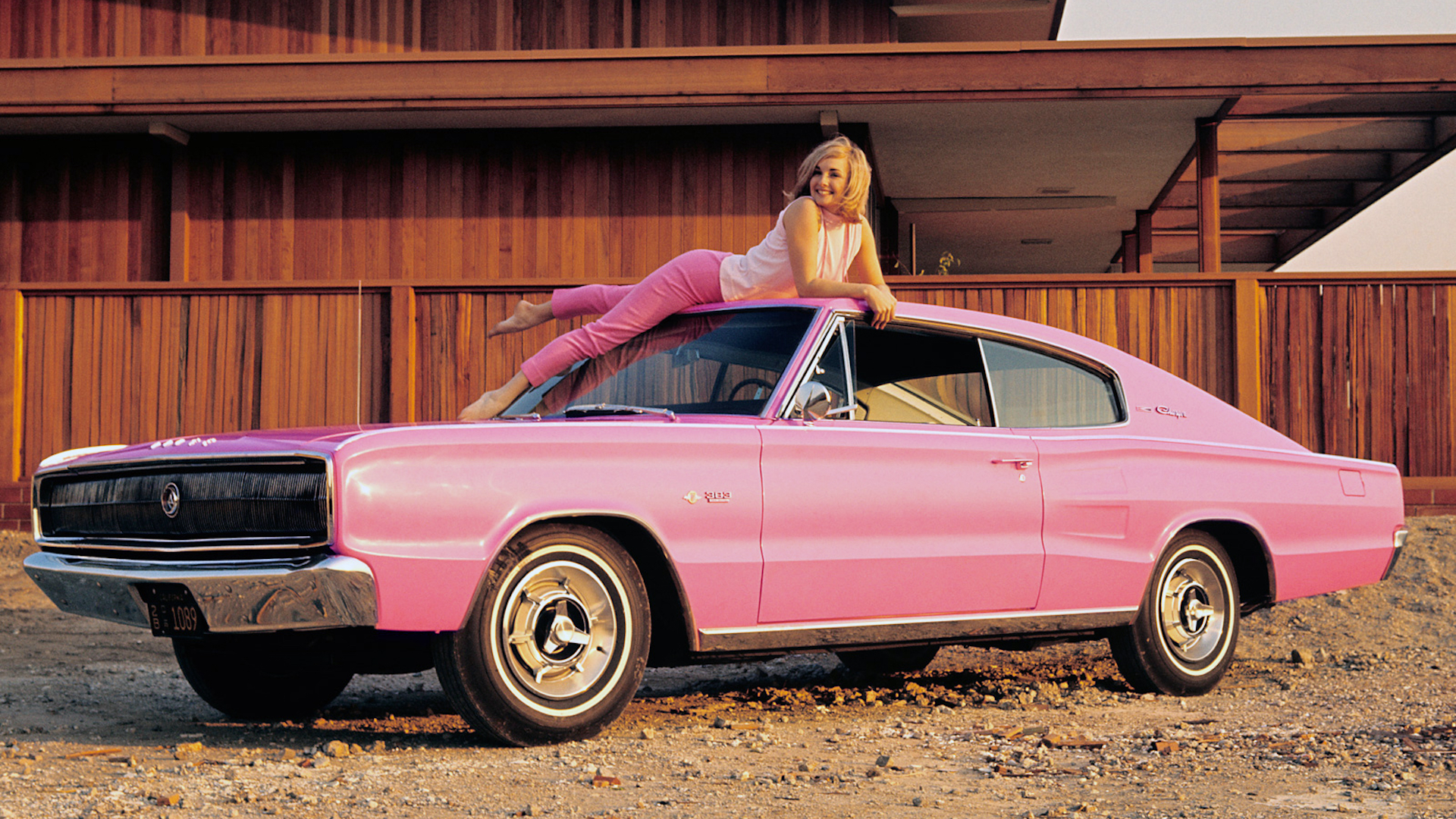
1966 Dodge Charger
© StellantisWith sales topping more than 37,000 cars for the first year of production, the Charger comfortably outsold the Rambler Marlin. One new owner of a 1966 Charger was Allison Parks, who picked a pink model as her prize for being Playmate of the Year.
Despite the initial success of the Charger, only 15,000 would find homes for the 1967 model year. This prompted Chrysler to think again on how to market the Charger name.
-
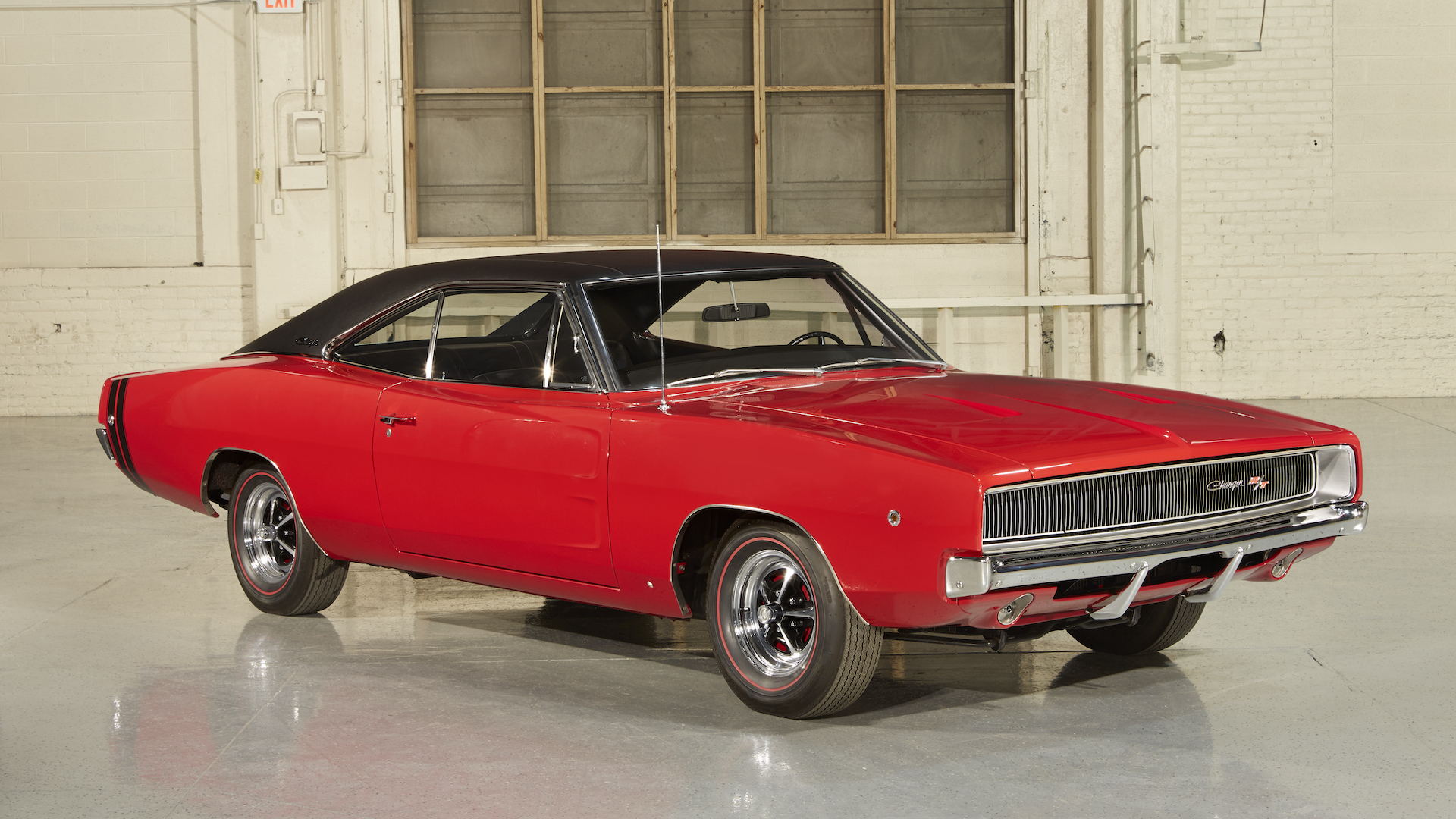
1968 Dodge Charger
© StellantisThe new second-generation Charger ditched the fastback roof, opting for a conventional trunk instead. A slightly rounded ‘coke-bottle’ design appeared on the sides of the Charger, with flying buttresses for the hardtop roof adding extra visual flair.
Although the hidden headlights remained, the deeper-set front grille made the Charger appear more menacing than before. At the back, the full-width tail lights were replaced with individual round units.
The interior was also simplified, with a full-size rear bench instead of the individual bucket seats.
-
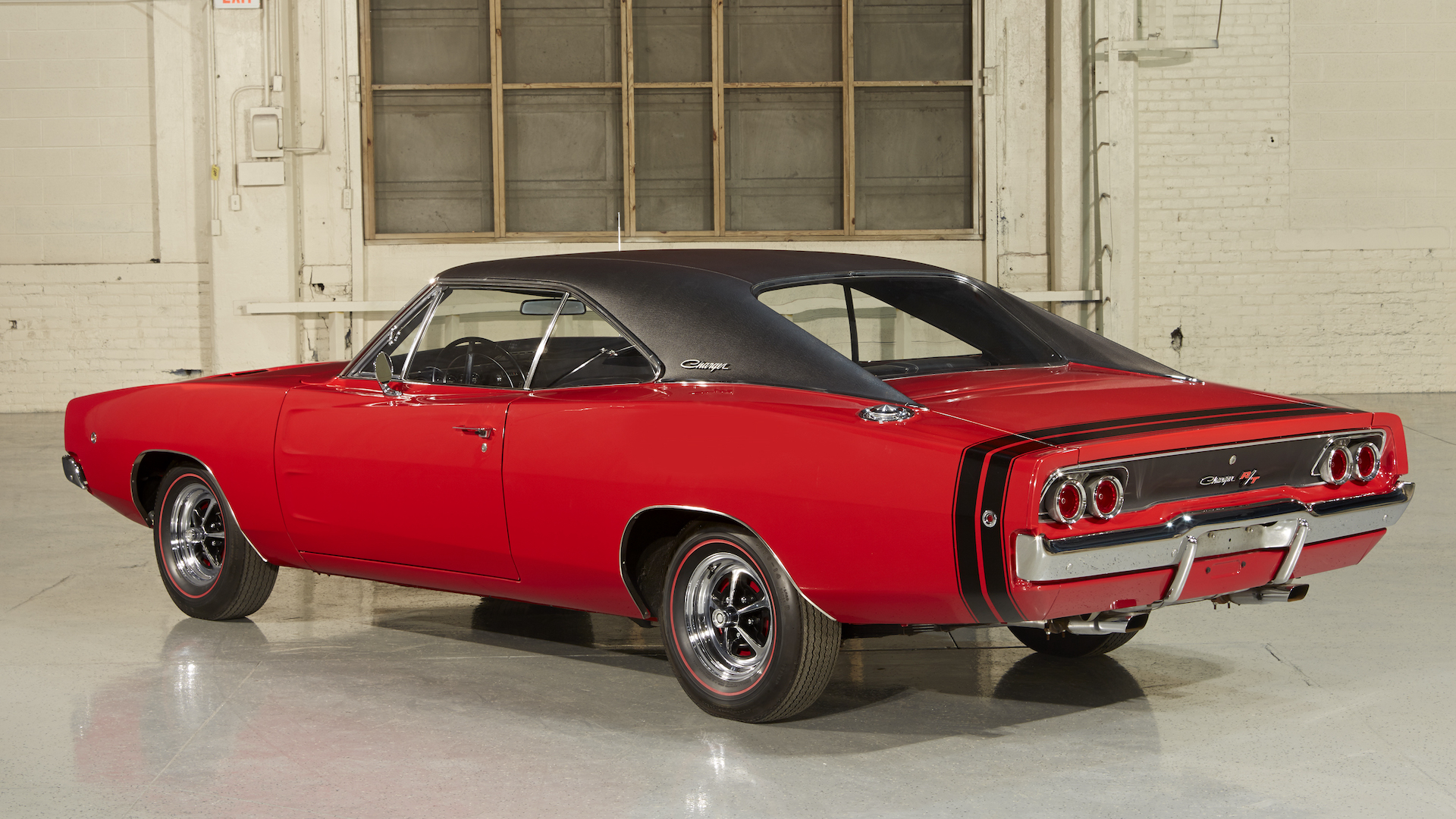
1968 Dodge Charger
© StellantisNew for 1968 was the chance for buyers to pick the R/T performance package. This came as standard with the 440-cubic inch ‘Magnum’ V-8 engine, offering the potential for 375 horsepower and 480 lb-ft of torque.
Ticking the box for the R/T option meant upgraded suspension, dual-exit exhaust tailpipes, and a three-speed TorqueFlite automatic transmission. Special exterior stripes and badging completed the makeover.
All of this made the new Charger a hit, with over 96,000 cars sold for 1968. A major role in the famous Bullitt car chase is likely to have helped buyers into Dodge showrooms.
-
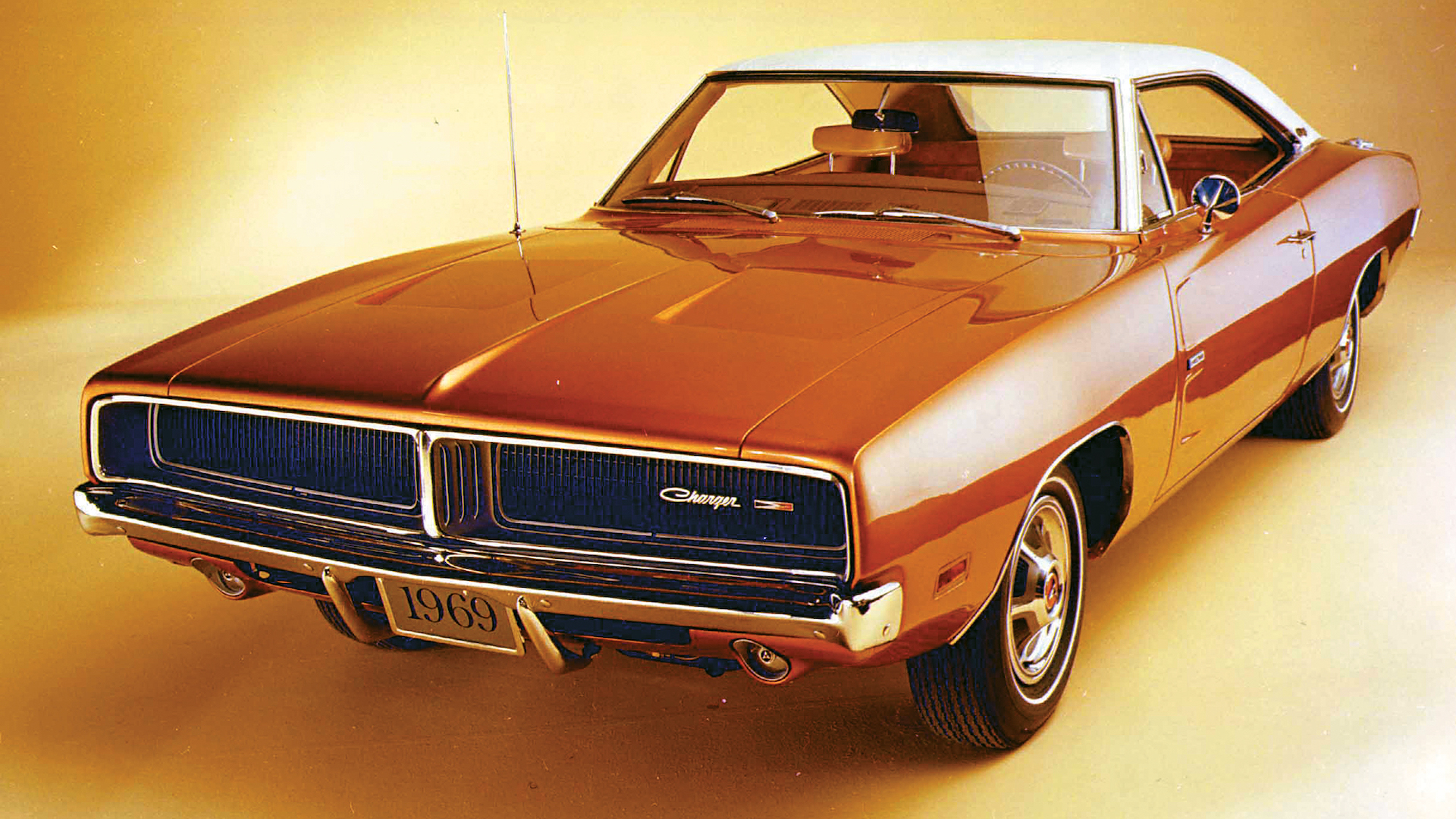
1969 Dodge Charger
© StellantisWith the second-generation Charger proving popular, only minor updates were made for the 1969 model. A new grille, complete with redesigned headlights, was the most obvious alteration up front. Wider tail lights were also added, while the R/T model gained mildly different rear stripes.
The 1969 Charger would gain more fame later in life, being the model that would star as the ‘General Lee’ in the Dukes of Hazzard TV show.
-
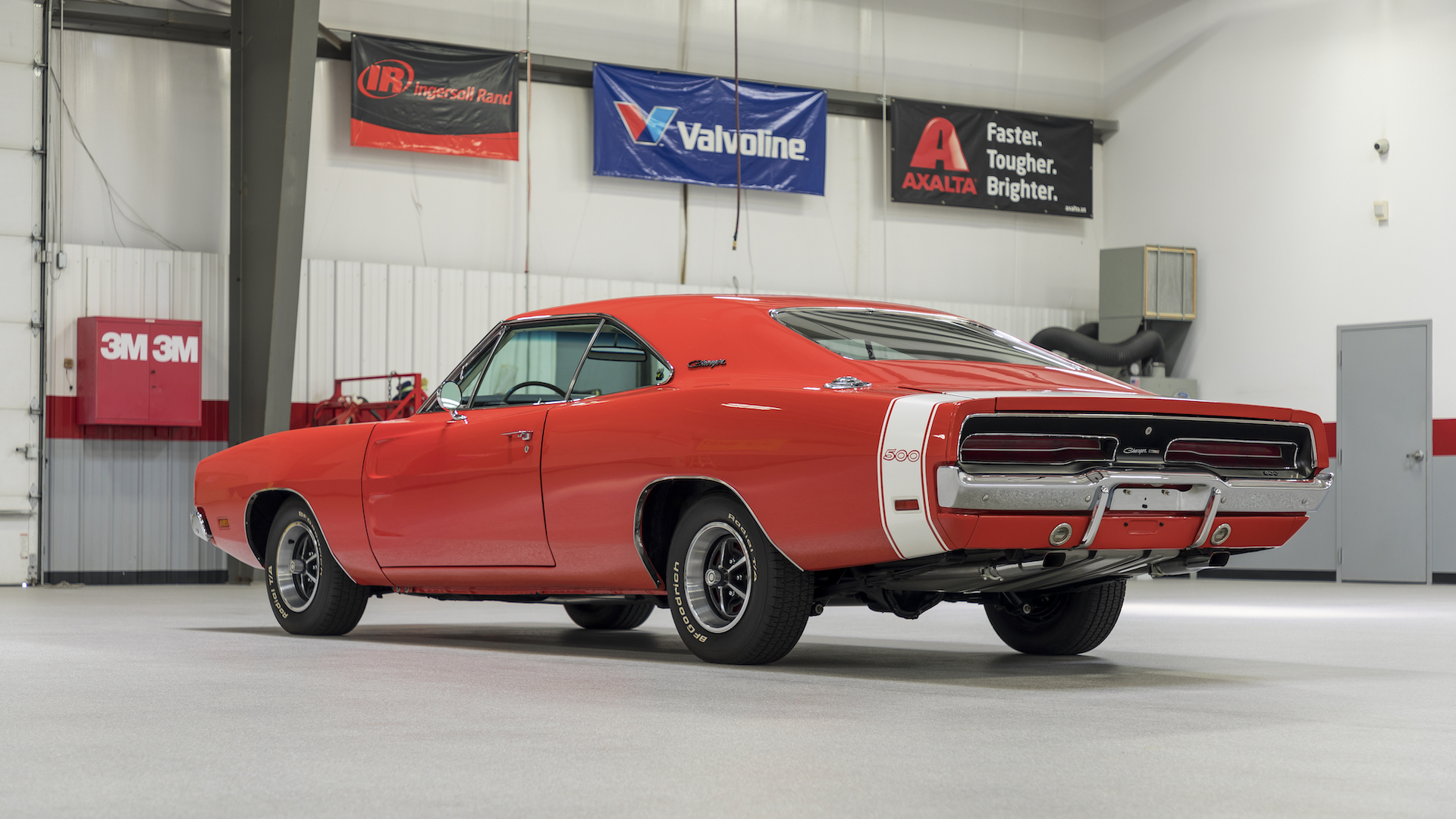
1969 Dodge Charger 500
© RM Auctions Alex StewartAs part of the Chrysler Corporation’s motorsport activities, the Dodge Charger was intended for NASCAR use. The styling of the second-generation model may have been attractive to look at, but the flying buttress roof was noted to cause worrying amounts of aerodynamic lift.
It led to the creation of the Charger 500, using a flush-mounted rear windshield instead. A front grille, taken from the regular Dodge Coronet, was added to reduce drag.
NASCAR homologation rules required 500 examples to be produced, but records suggest only 392 cars were actually completed. Such rarity has made them a keen buy for collectors, such as this car sold in 2018.
-
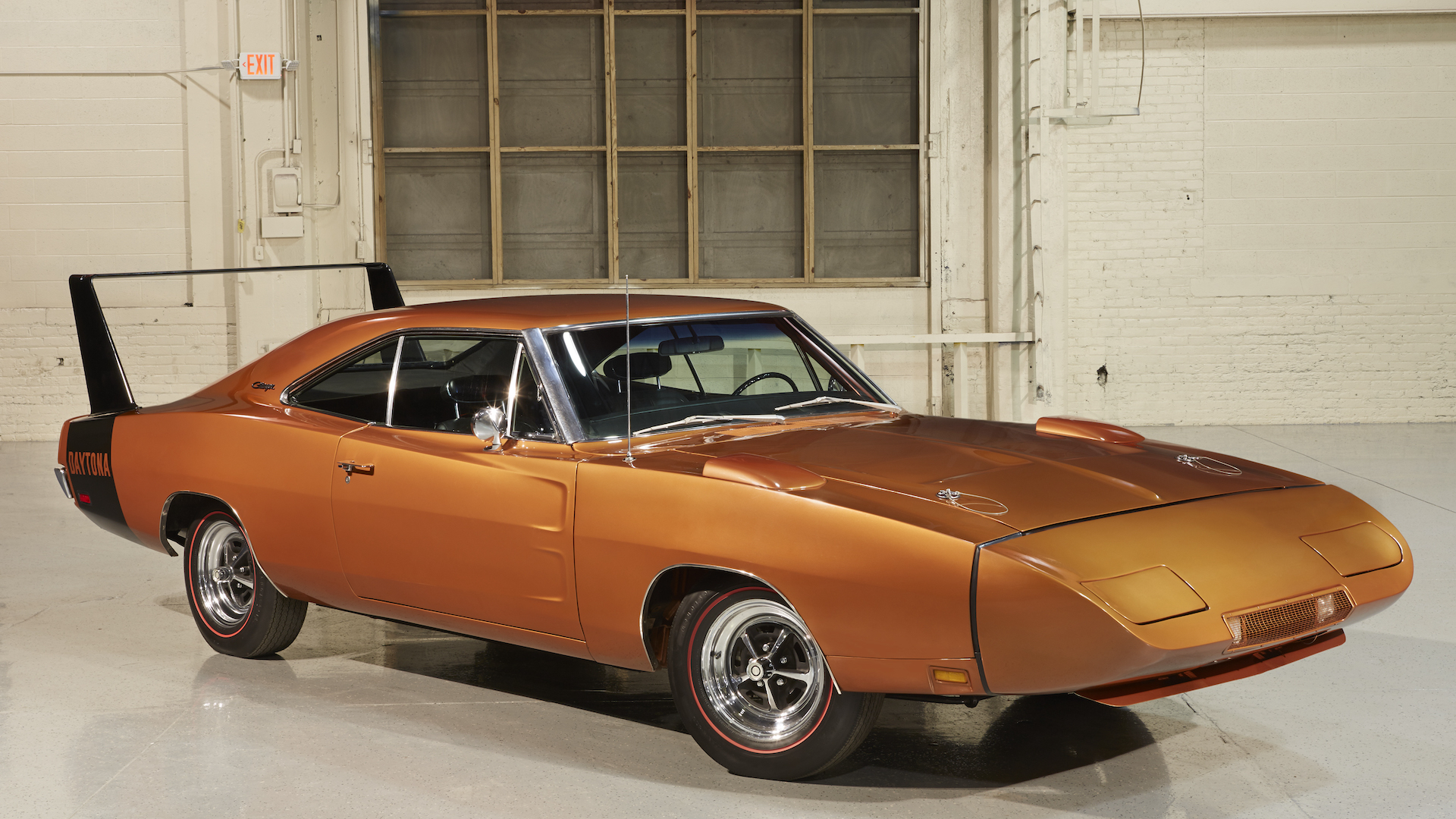
1969 Dodge Charger Daytona
© StellantisDespite the changes made, the Charger 500 still lacked the top speed to dominate on the race track. For the 1969 NASCAR season, Dodge went all-out with the creation of the infamous ‘Aero Warrior’ Charger Daytona.
A brand-new nose cone replaced the drag-inducing front end, while a 23-inch tall rear spoiler would give the aerodynamic stability the Charger required. The height of the spoiler was to ensure it gained maximum airflow, with the fact it allowed the trunk to open being a useful coincidence.
Winning its first race at Talladega, and becoming the first NASCAR to surpass 200 mph, made the Daytona a success. Some 503 street-legal examples were made for homologation reasons, with the 70 cars powered by the 426 Hemi now the most collectable of all.
-
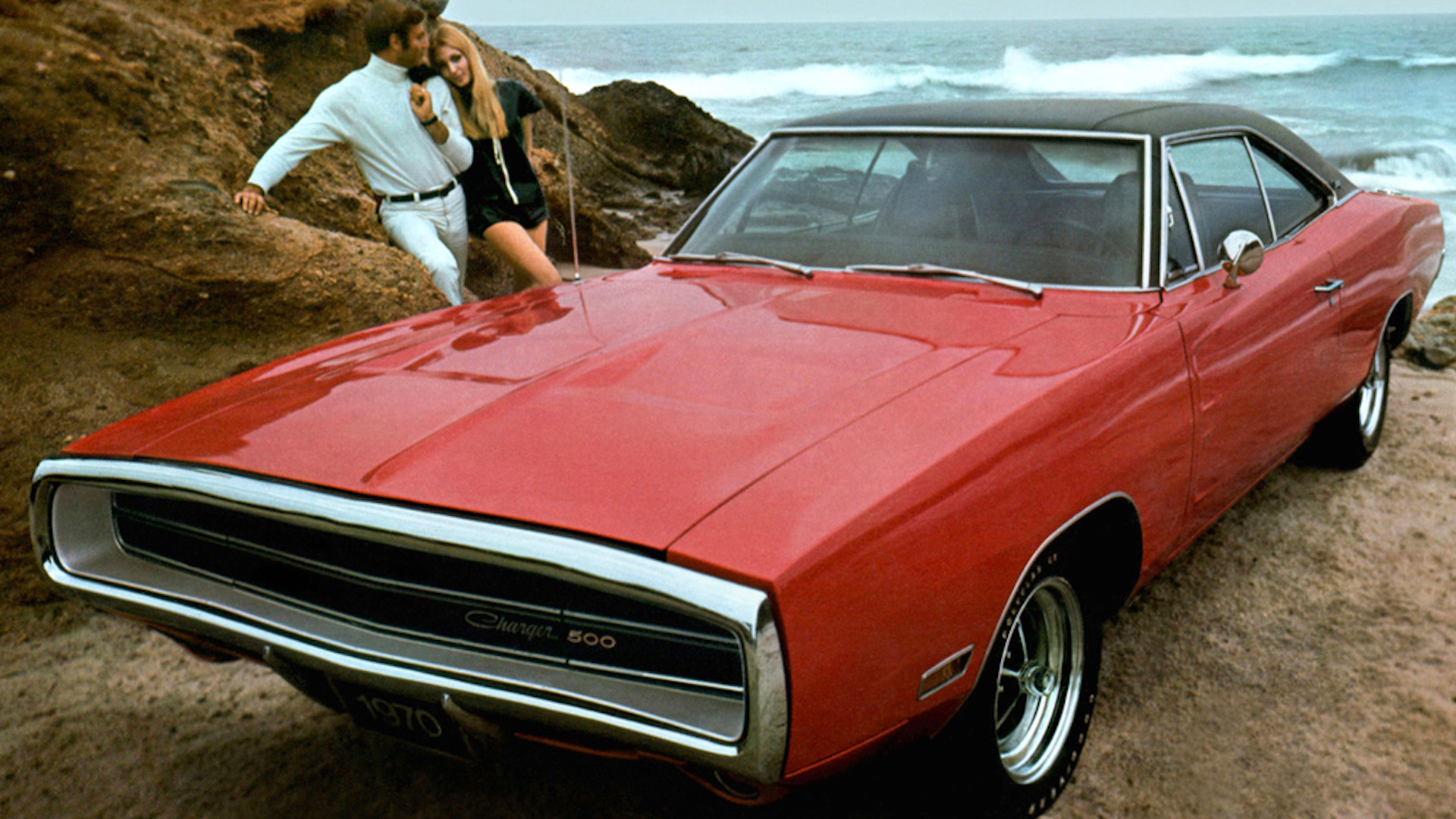
1970 Dodge Charger
© StellantisWith the muscle car era now at its peak, the most notable change for 1970 was the choice of Chrysler’s High Impact paint colors. Options such as Plum Crazy, Go-Mango, and Panther Pink have become highly coveted by Mopar enthusiasts.
Behind the new chrome front grille, buyers could also now opt for the 440-cubic inch Six Pack V-8. With three two-barrel carburetors, this engine offered 390 horsepower and a substantial 490 lb-ft of torque.
The scale of muscle car competition meant Dodge would sell only 46,000 Chargers for 1970.
-
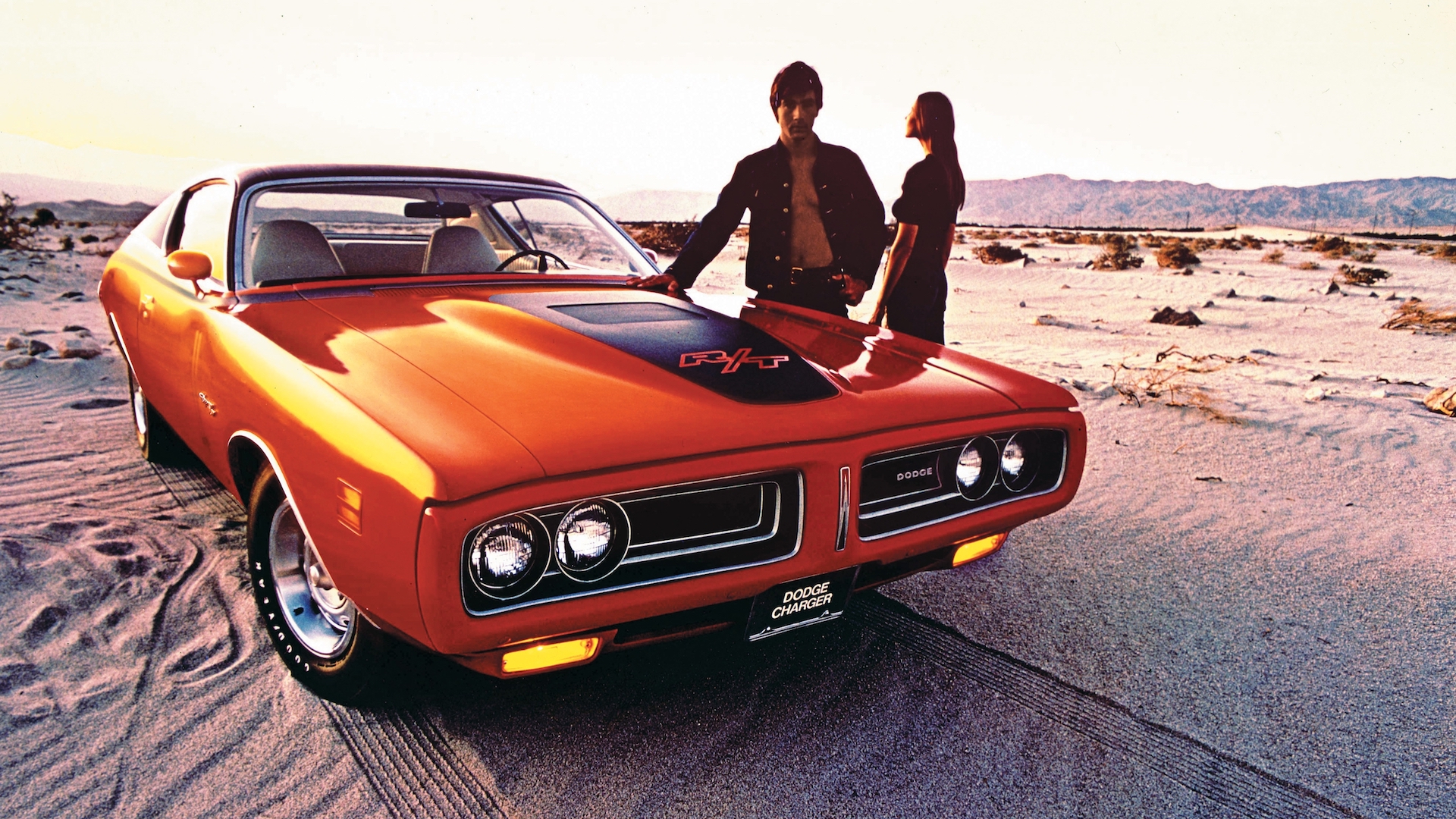
1971 Dodge Charger RT
© StellantisA new year would deliver an all-new third-generation Dodge Charger, merging with the Coronet range of cars. Chrysler’s new ‘fuselage’ design language gave the Charger a smoother appearance, with hidden headlights now an option for the bold front grille.
Although the R/T model remained, the pressure of higher gas prices and increased insurance was already beginning to impact sales.
Only 63 Charger R/Ts would be fitted with the 426 Hemi engine, with total R/T production being just 3,118 cars.
-
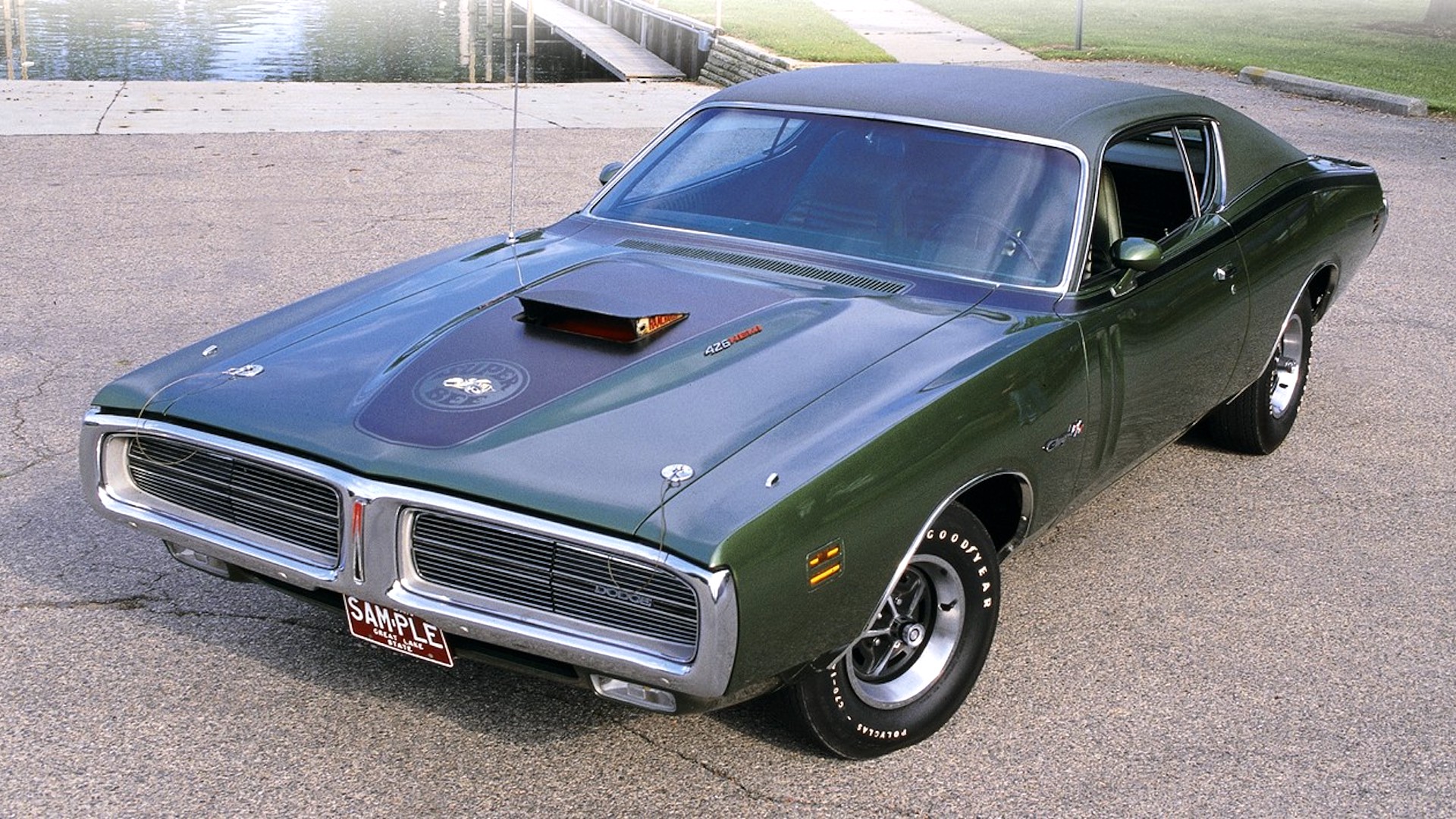
1971 Dodge Charger Super Bee
© StellantisFurther undermining the appeal of the Charger R/T was the launch of the Super Bee. Previously a version of the Dodge Coronet, the revised model range meant it became part of the Charger lineup for 1971.
Offered as a low-cost performance machine, the Super Bee undercut the Charger R/T by $500. Yet could still be had with the same high-output engines, including the 426 Hemi V-8 before the engine was dropped for 1972.
With more than 5,000 examples sold, the Super Bee proved to be the Charger of choice for muscle car buyers in 1971.
-
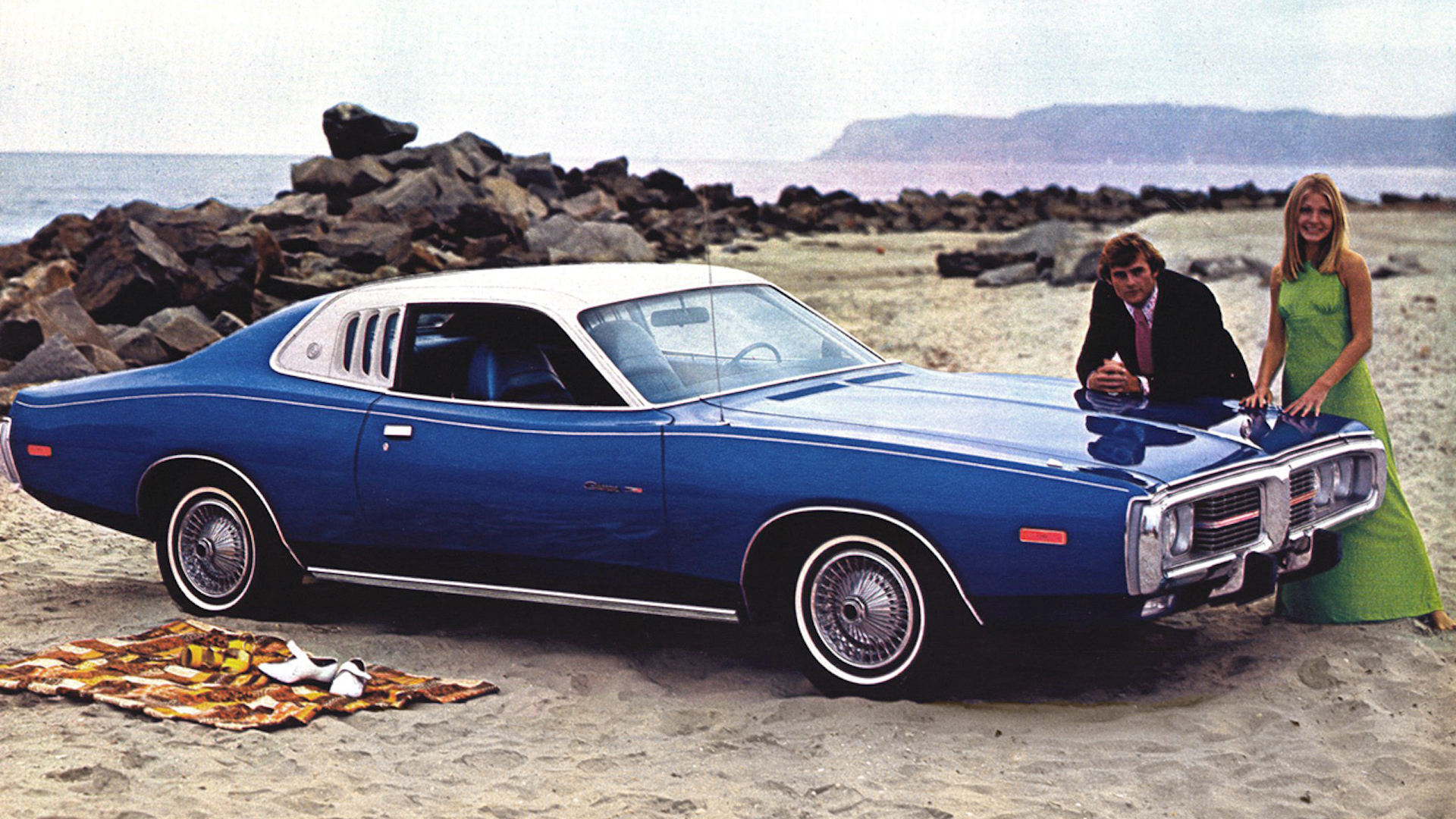
1973 Dodge Charger
© StellantisNew emissions regulations, and the need to report horsepower as net output instead of gross, was rapidly changing the Charger from muscle car to luxury coupe. Changes for 1973 included new federally mandated ‘5 mph bumpers’, making this Charger bigger than its predecessors.
Style excesses of the 1970s were also in play, with SE models gaining a new three-section opera window, surrounded by a landau vinyl roof.
Accounting for over 60 percent of the 108,000 Chargers sold in 1973, the SE version was clearly in demand.
-
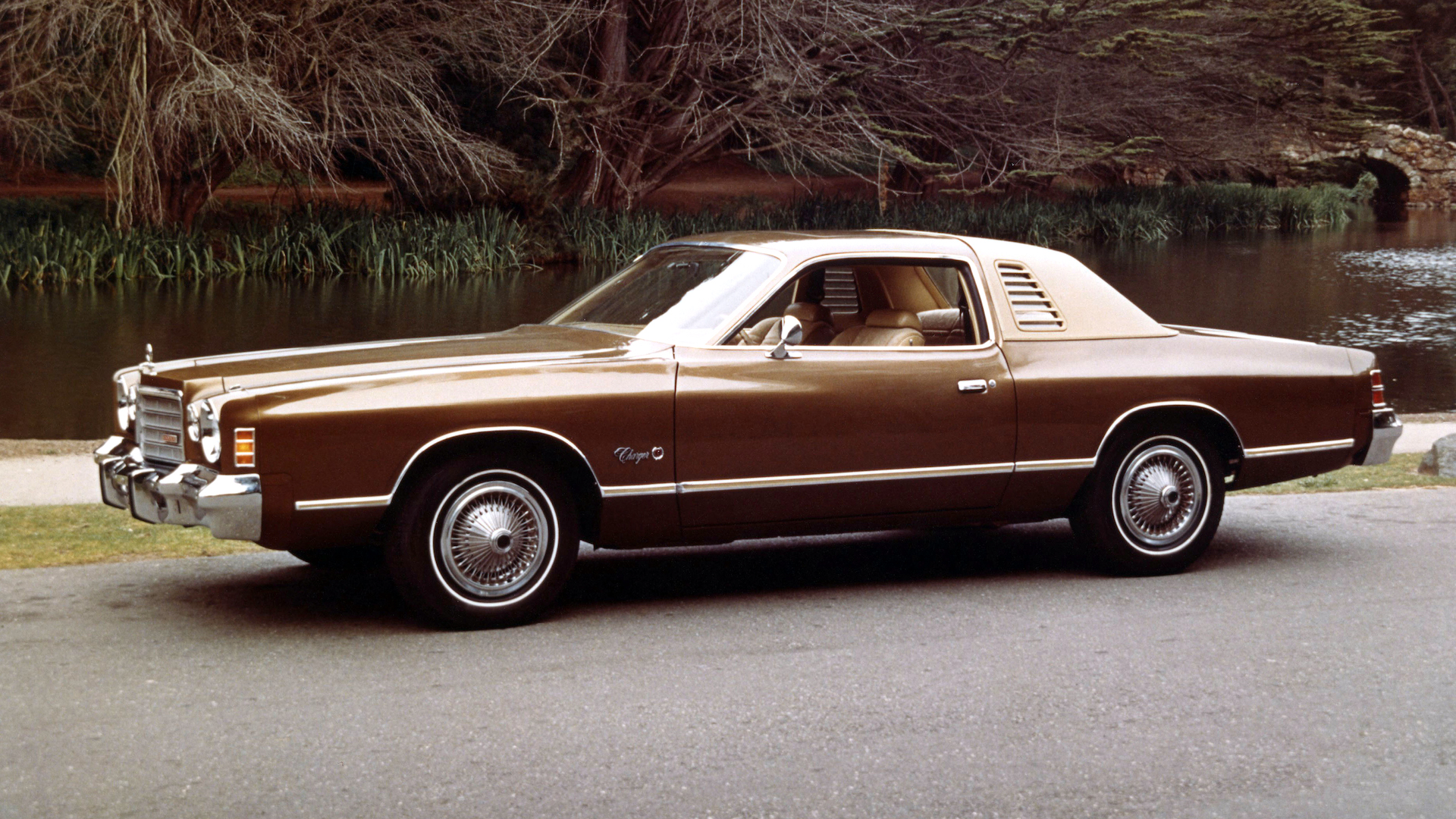
1975 Dodge Charger SE
© StellantisWith the market surging towards the personal luxury car trend, 1975 brought about a new fourth-generation Dodge Charger. Sharing a platform with the Chrysler Cordoba, performance options were out, and high levels of equipment were in.
Elaborate opera windows were standard, with buyers able to specify two different types of vinyl roof. The interior featured 24-ounce carpeting, with acres of wood grain trim covering the dashboard. A 360-cubic inch V-8 was the default engine, combined with a TorqueFlite automatic transmission.
The new square styling of the Charger caused aerodynamic problems for NASCAR teams, however. As a result, bodywork from the previous 1974 Charger was allowed to be used until 1978.
-
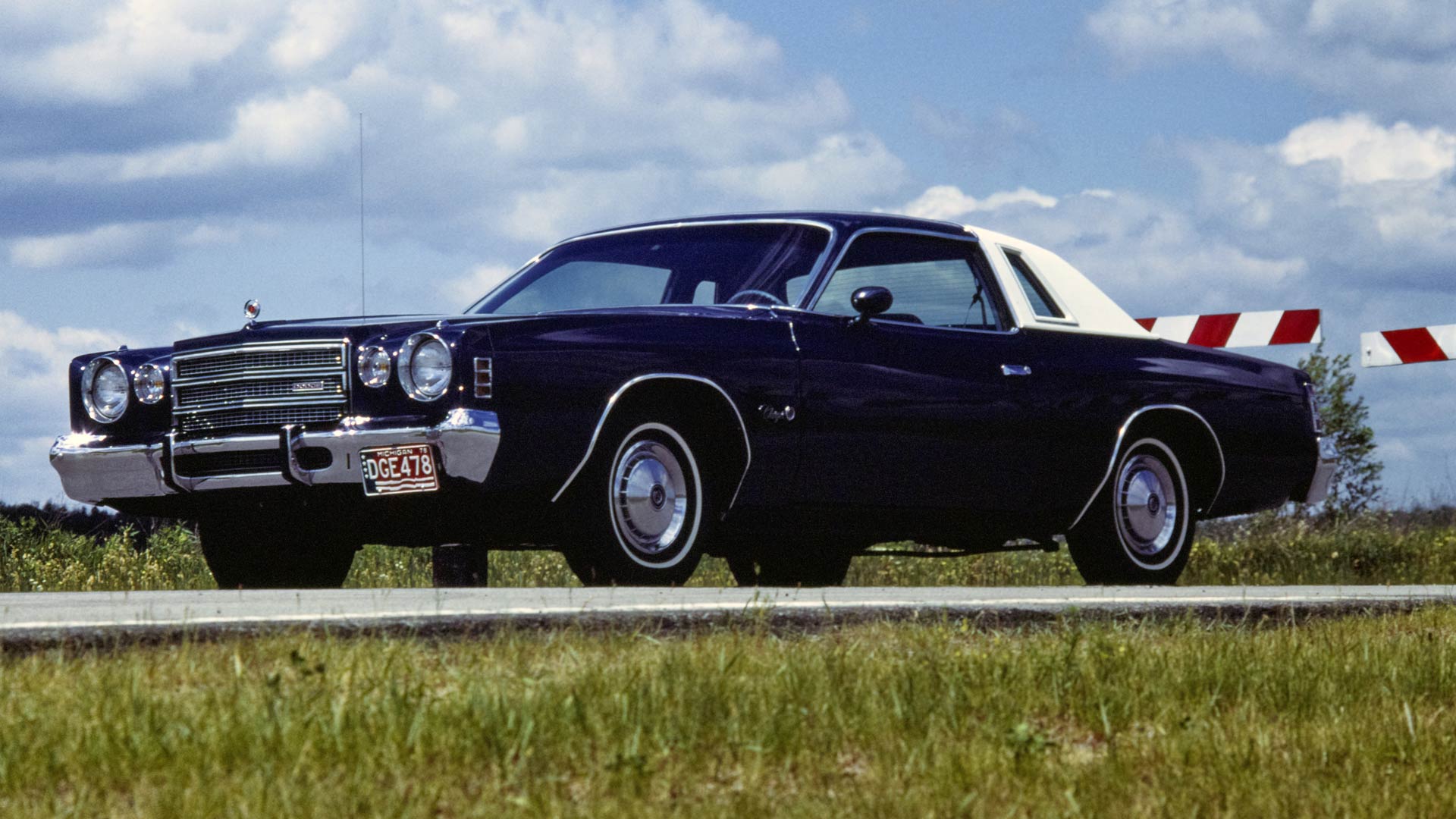
1978 Dodge Charger SE
© StellantisThe short-lived association between the Charger badge and the personal luxury car market came to an end in 1978. Dodge had made the decision to replace the Charger with the new Magnum, which featured a more streamlined body.
Like the sudden decline of disco, the Charger now appeared hugely out of fashion. A total of 2,725 Chargers would be sold for 1978, compared to more than 47,000 Magnums.
-
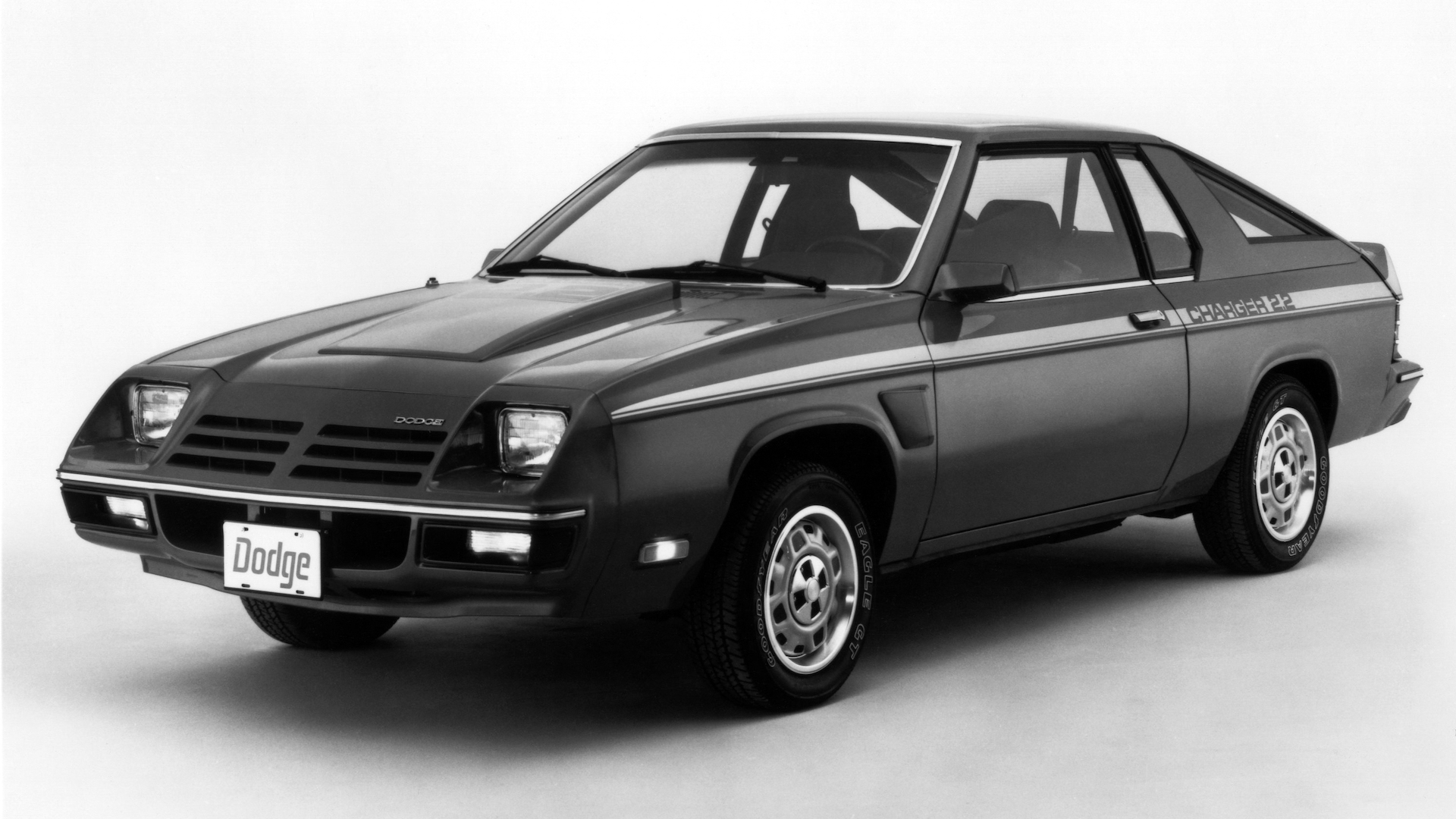
1983 Dodge Charger
© StellantisDodge did not wait long to redeploy the Charger nameplate. Having first been used as a trim package on the Omni-based 024, the entire range of Dodge’s L-Body coupes were rebranded as Chargers for 1983.
With front-wheel drive, and four-cylinder engines ranging from 70 horsepower to 84 horsepower, the reborn Charger was a world away from the muscle cars of the 1970s. The more powerful 2.2-liter version was marketed as a separate trim level, with a simulated hood scoop and bold graphics covering the body.
With more than 32,000 examples sold in 1983, the return of the Charger name proved to be successful.
-
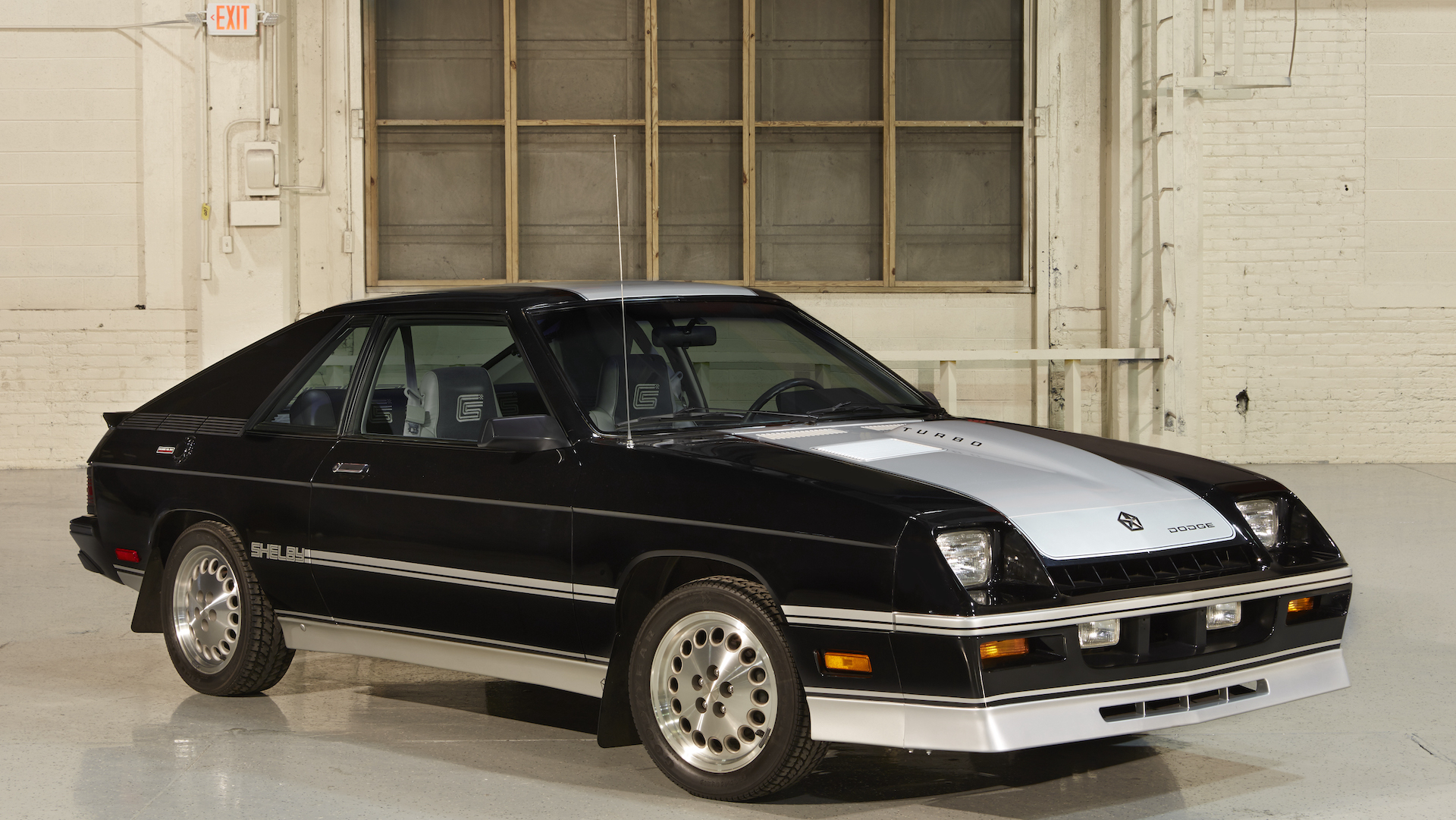
1983 Dodge Shelby Charger
© StellantisAs part of his new association with Dodge, Carroll Shelby was responsible for creating a new performance version of the L-Body Charger. Initial upgrades were focused on suspension and styling, with the 2.2-liter engine tuned mildly to deliver 107 horsepower.
The addition of a new turbocharged 2.2-liter engine saw output increase to 146 horsepower in 1985, turning the Shelby Charger into a serious subcompact performance car.
However, the ultimate would follow for the final year of Charger production in 1987. A limited edition of 1,000 cars, the Charger GLH-S benefitted from 175 horsepower and 175 lb-ft of torque. It made for a fitting end to the L-Body Charger.
-
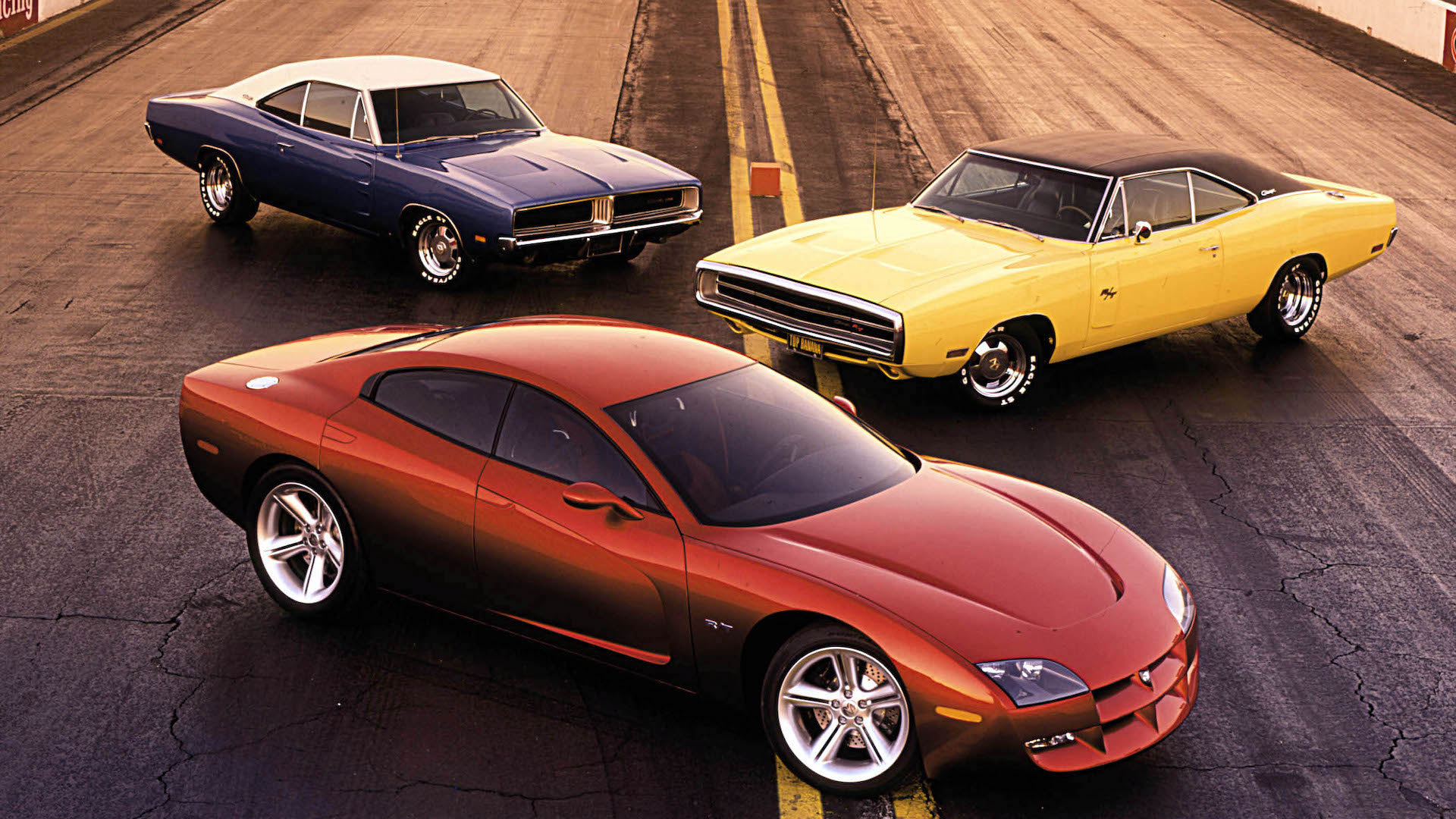
1999 Dodge Charger RT Concept
© StellantisDodge allowed the Charger name to remain dormant until revealing a special concept car in 1999. Designed by Tom Gale, the Charger R/T was deliberately intended to resemble a modernized, four-door, version of the classic muscle car.
Beneath the long hood was a 325 horsepower supercharged 4.7-liter V-8, adapted to run on compressed natural gas. Despite being built on the Chrysler LH platform, the concept was rear-wheel drive and featured a five-speed manual transmission. Inside, Dodge replicated the four bucket seats of the original 1966 Charger.
Sadly, the ill-fated Daimler Chrysler merger saw a shift in strategy, leaving the Charger R/T to remain as just a concept.
-
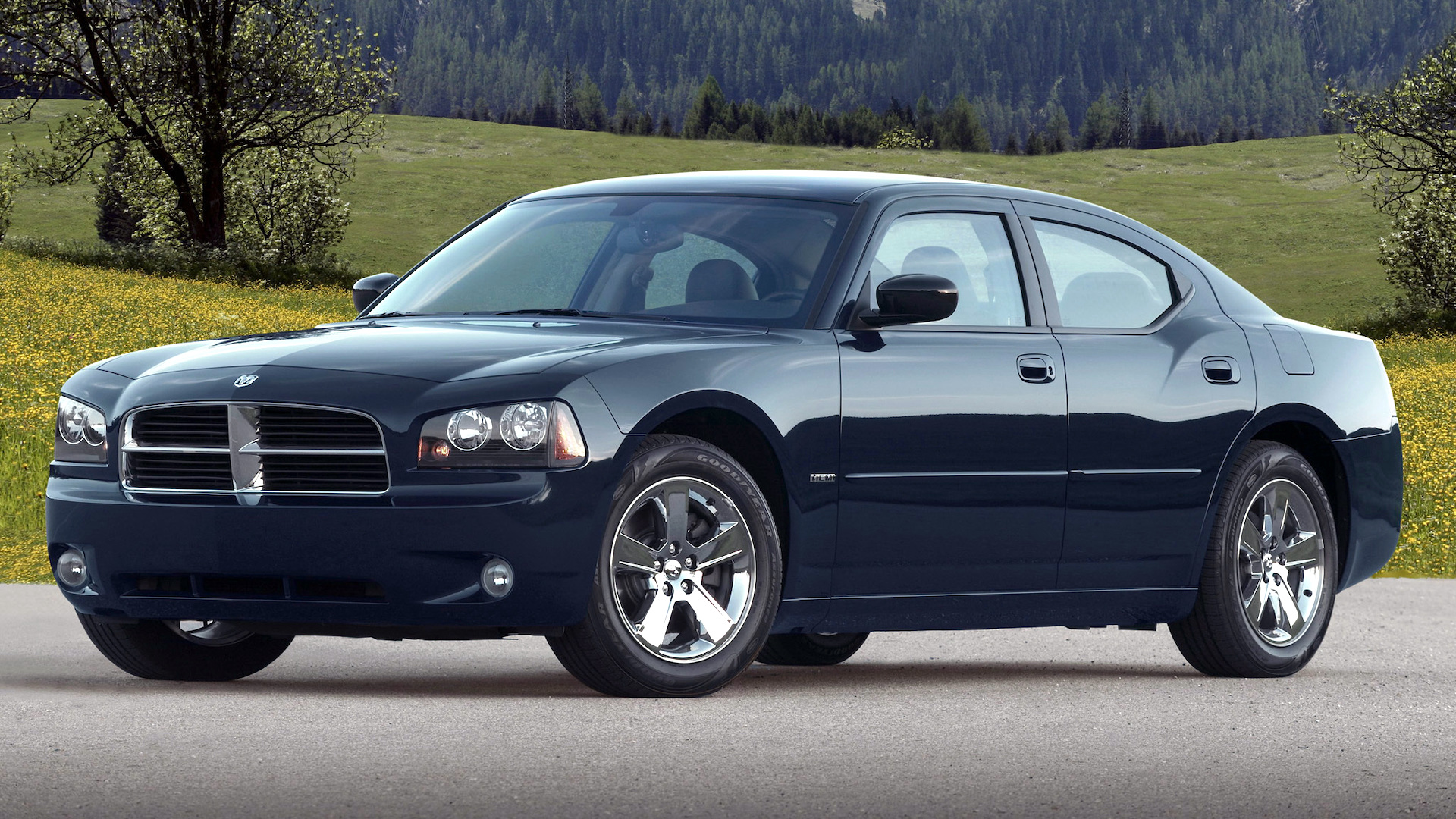
2006 Dodge Charger
© StellantisDaimler Chrysler may have shelved the 1999 R/T concept, but the 2006 model year would finally see the return of the Charger badge.
Being built upon the Chrysler LX platform meant that there was a return to rear-wheel drive. Engine options ranged from a 3.5-liter V-6, through to 5.7-liter Hemi V-8 in the R/T version.
Any concerns about enthusiasts being unhappy at the Charger now being a four-door sedan were quickly banished. More than 110,000 Chargers left the Brampton, Ontario factory in the first full year or production, suggesting that Dodge had staged an effective comeback.
-
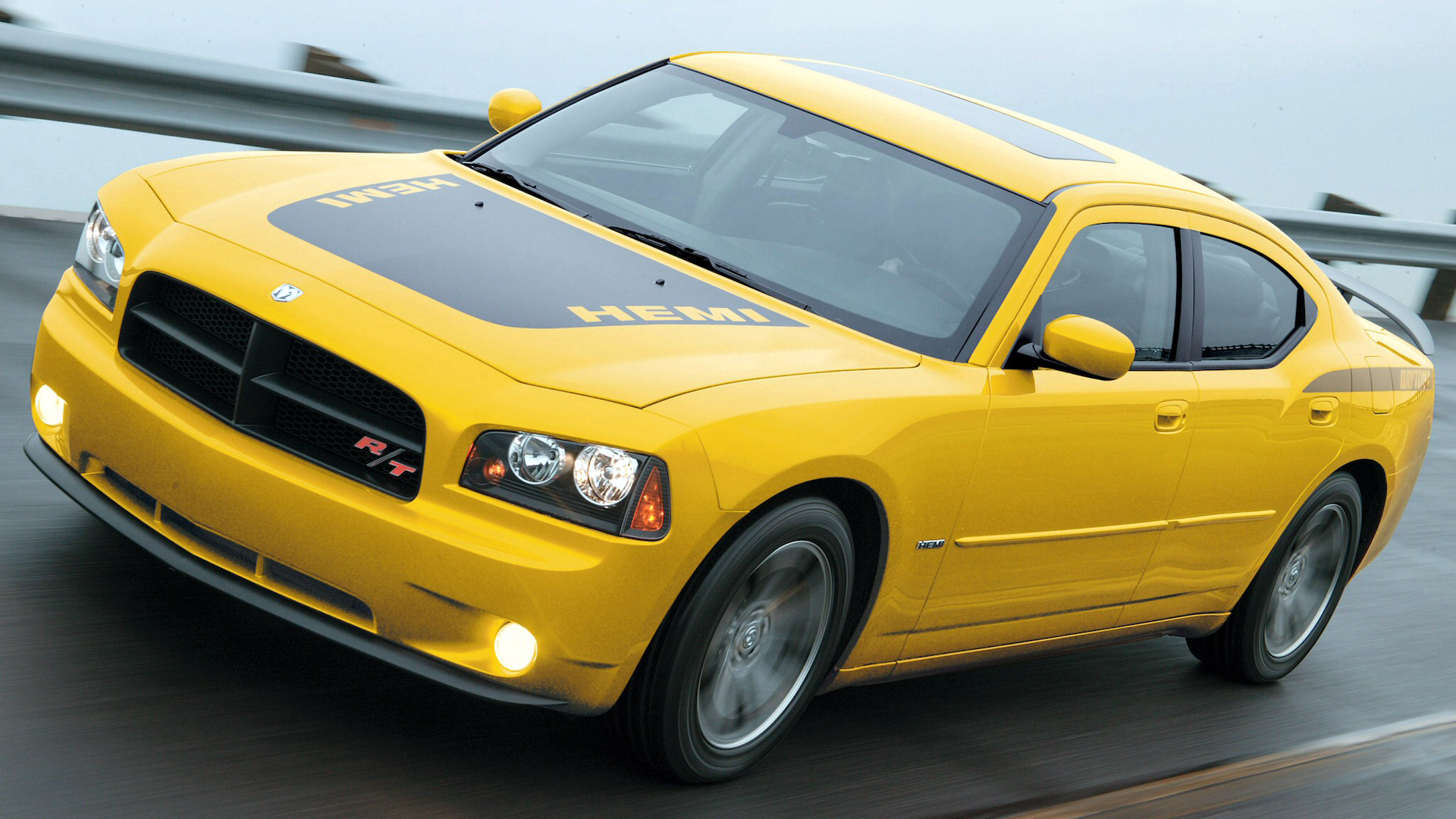
2006 Dodge Charger Daytona RT
© StellantisHelping generate extra nostalgia for the new Charger was the launch of a Daytona R/T special edition. The classic High Impact paint colors from the 1970s made a return, allowing fans to pick from Go Mango, Tor Red, and Top Banana.
Compared to the regular Charger R/T, the Daytona gained a deeper front bumper and a new rear spoiler. Special decals were also added, recalling the original 1969 Charger Daytona.
Power from the 5.7-liter Hemi V-8 was increased to 350 horsepower, complemented by upgraded suspension.
-
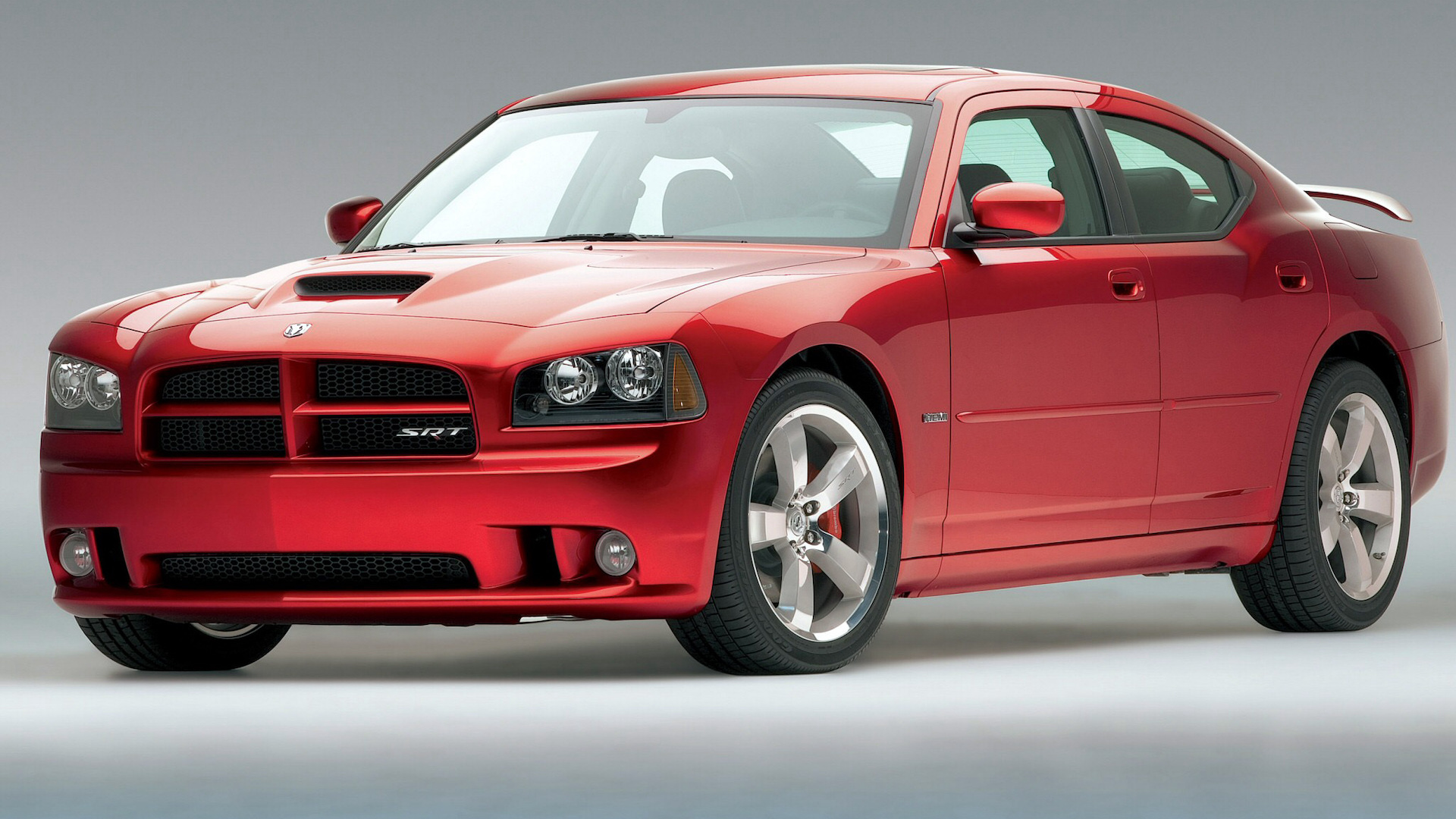
2006 Dodge Charger SRT-8
© StellantisTopping the new Dodge Charger range was a performance version tuned by Chrysler’s in-house Street & Racing Technology team. Star of the show was a 6.1-liter naturally aspirated Hemi V-8 engine, delivering 425 horsepower and 420 lb-ft of torque.
Other SRT upgrades included the fitment of Brembo brakes, performance suspension, and subtle styling modifications. The standard 20-inch wheels came with Goodyear Eagle tires, helping lower the 0-60 mph sprint to under 5 seconds.
-
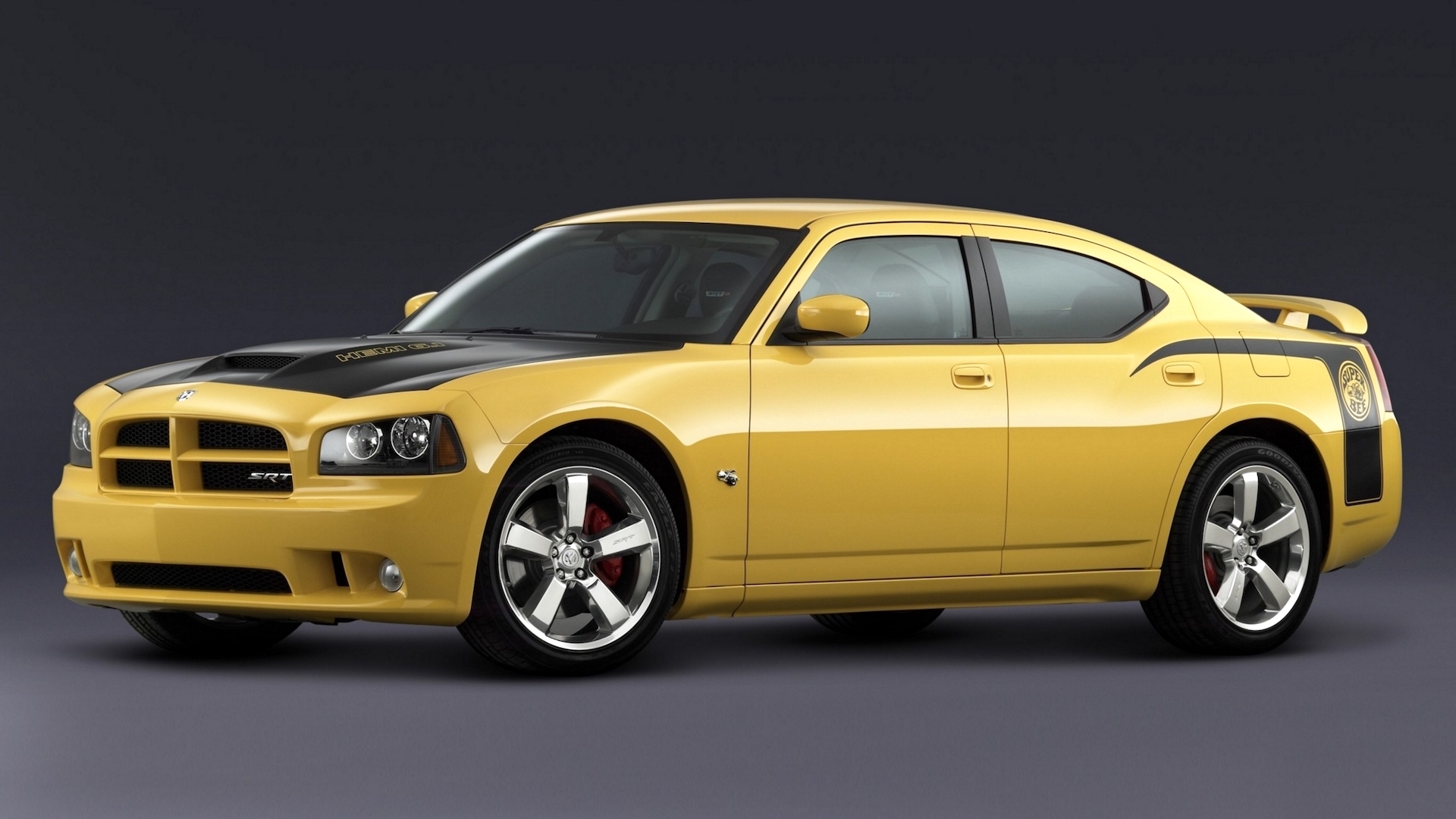
2007 Dodge Charger Super Bee
© StellantisDemonstrating that limited edition models would continue to be a feature of the new Charger, the 2006 New York Auto Show saw the debut of the Super Bee.
Using the same 6.1-liter Hemi V-8 as the SRT-8 brought 425 horsepower, with special Super Bee graphics found on the hood and rear quarter panels.
The 2007 Super Bee could only be ordered in Detonator Yellow, and was limited to just 1,000 units. -
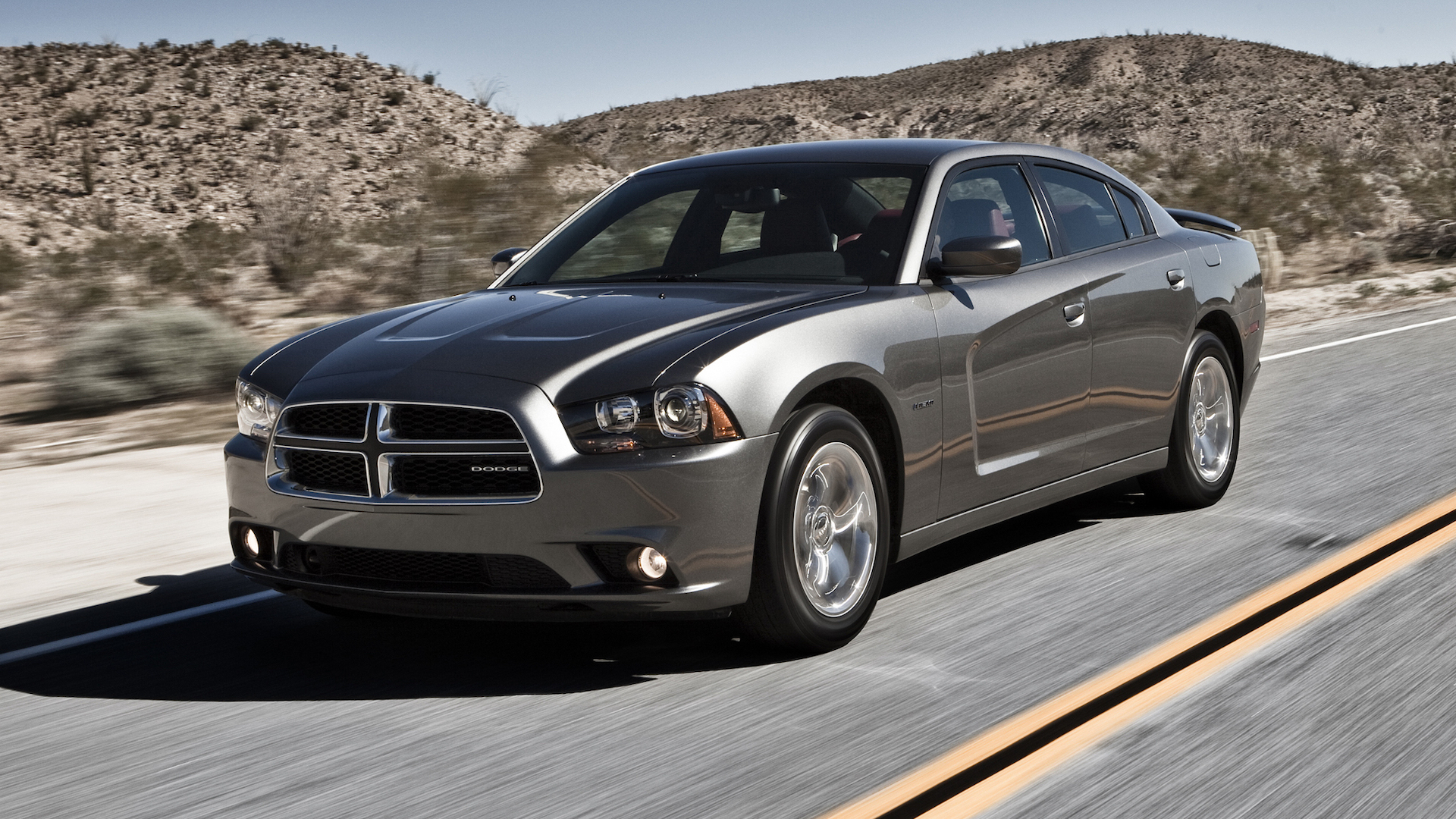
2011 Dodge Charger
© StellantisAfter five years of successful production, Dodge released the second generation of the modern Charger. Using the updated LD platform, the 2011 Charger saw a host of improvements covering suspension, infotainment, and safety systems.
Styling changes were an evolution of the previous model, but with an eye on emulating the original Charger from the 1960s and ’70s. The hood gained new scallops, while the side profile of the Charger paid homage to the ‘coke-bottle’ shape.
Dodge also added new LED ‘racetrack’ tail lights, and fitted a redesigned dashboard.
-
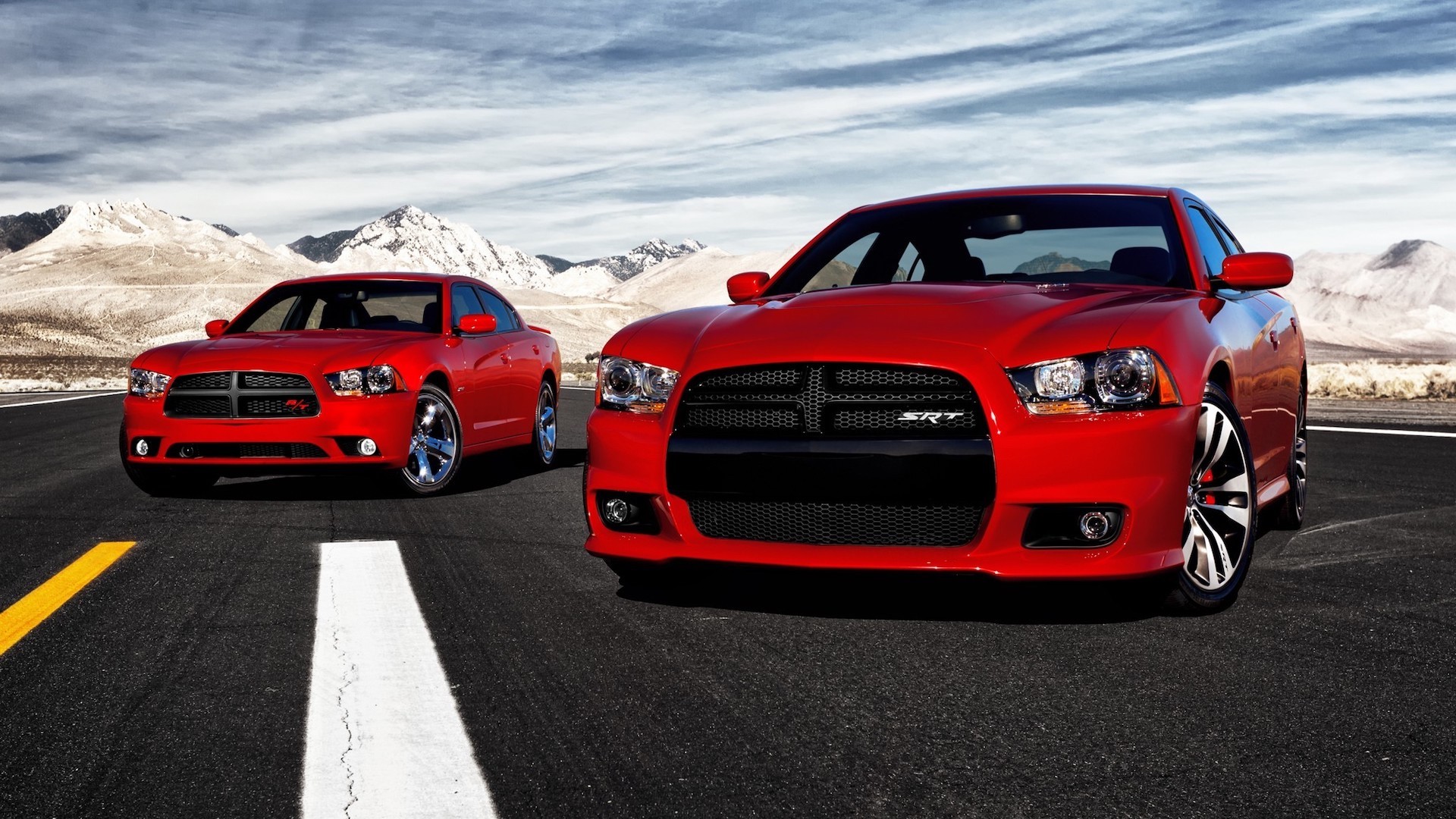
2011 Dodge Charger RT and SRT8
© StellantisEngine upgrades were also rolled out across the Charger range, with 3.6-liter V-6 becoming the base motor.
The 5.7-liter Hemi V-8 found in the Charger R/T saw an increase in output to 370 horsepower, along with 395 lb-ft of torque. Buyers could also opt for the R/T in all-wheel drive for extra traction.
Ultimate performance remained with the SRT8, which gained a larger 6.4-liter Hemi V-8. A combination of 470 horsepower and 470 lb-ft of torque made for a potential top speed of 175 mph.
-
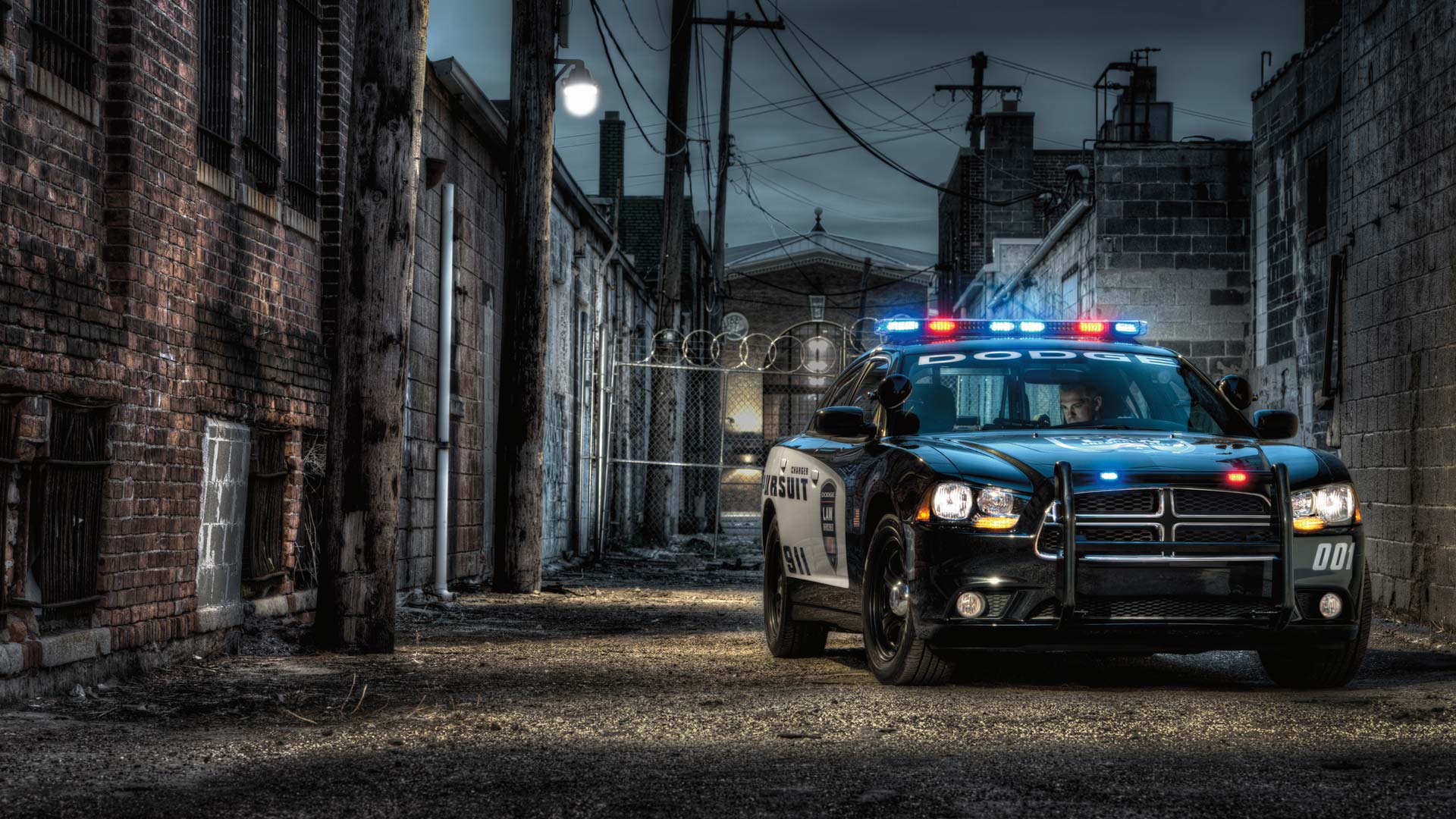
2011 Dodge Charger Pursuit
© StellantisThe reborn Charger had been made available to law enforcement agencies from launch in 2006, but the updated 2011 model brought a host of updates for the Pursuit version.
Police fleets could pick from the 3.6-liter V-6, or opt for the 370 horsepower 5.7-liter V-8. Upgraded suspension, and a police-specific two-mode Electronic Stability Control were part of the package.
Dodge updated the front seats to better accommodate police officers wearing utility belts, and improved the comfort of them for support on long shifts. A new Police Interface Module was said to make integrating bespoke interior equipment easier.
-
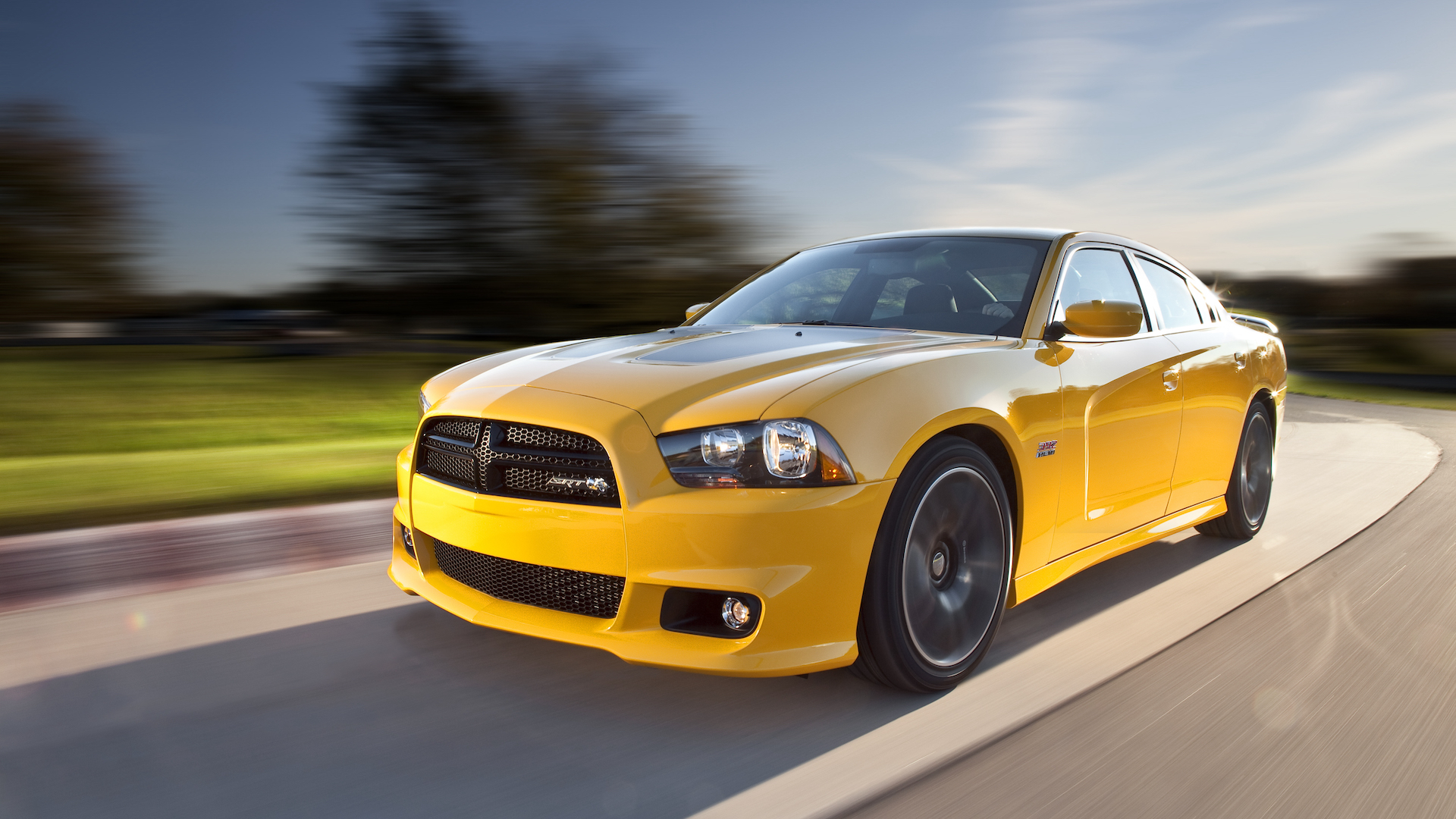
2012 Dodge Charger Super Bee
© StellantisReturning for the 2012 model year, the Charger Super Bee was once again based upon the high-performance SRT8 model. This meant the same 6.4-liter Hemi V-8 with 490 horsepower.
Dodge claimed that the Super Bee could accelerate from 0-60 mph in under 5 seconds, and power all the way to a top speed of 175 mph.
Buyers could pick between Stinger Yellow and Pitch Black paint options, with Super Bee branding found on the rear quarter panels.
-
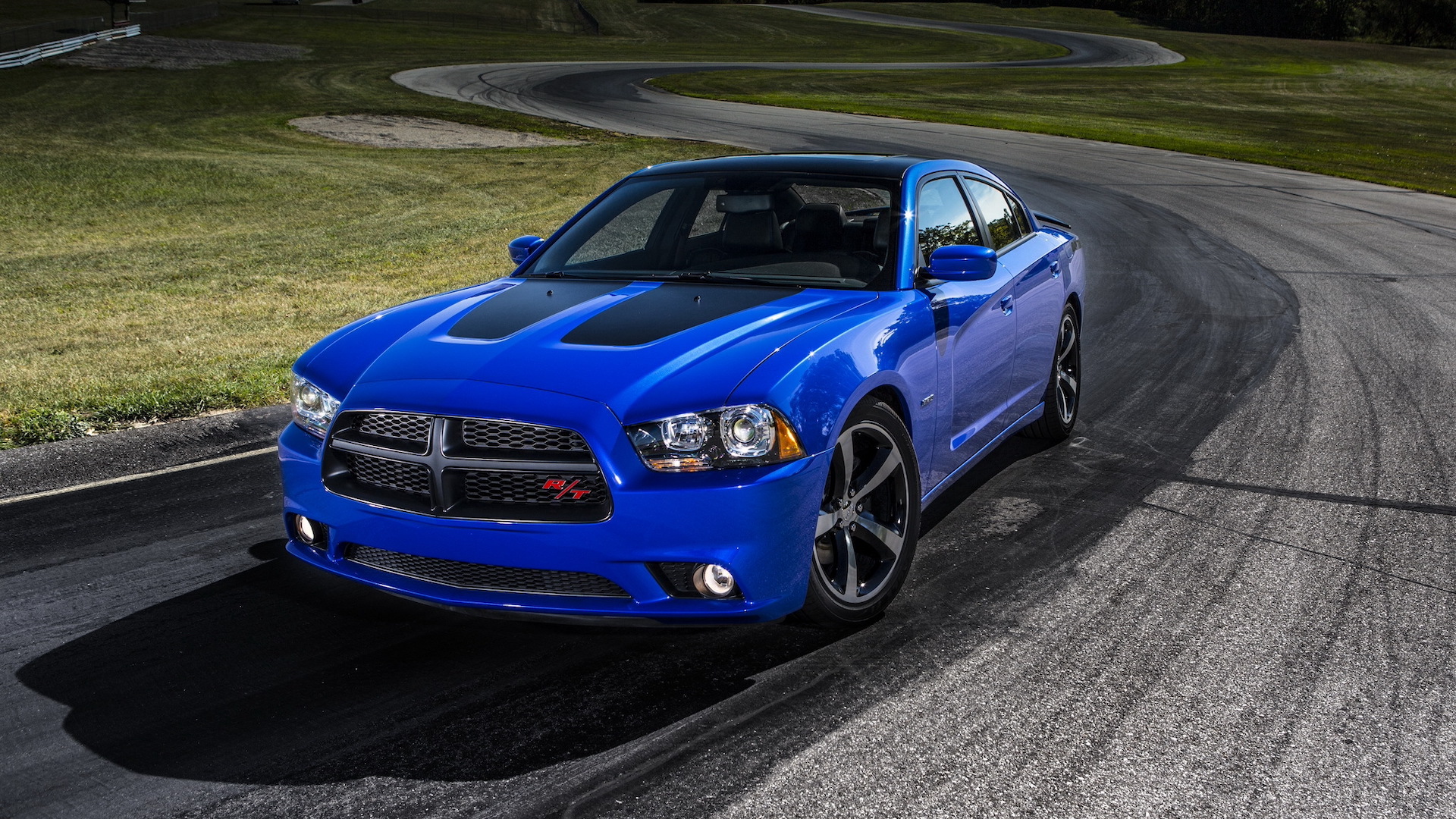
2013 Dodge Charger Daytona
© StellantisDodge was clearly loving the business of producing special-edition Chargers, with the Daytona model making another appearance in 2013.
Limited to 2,500 cars, the 2013 Charger Daytona was offered with a unique range of colors, including the trademark Daytona Blue. Satin black was used for the front grille, with 20-inch wheels gaining black detailing.
Offered for the 370 horsepower R/T model, the Daytona packaged added a 3.06 performance rear axle and paddle shifters for the automatic transmission.
-
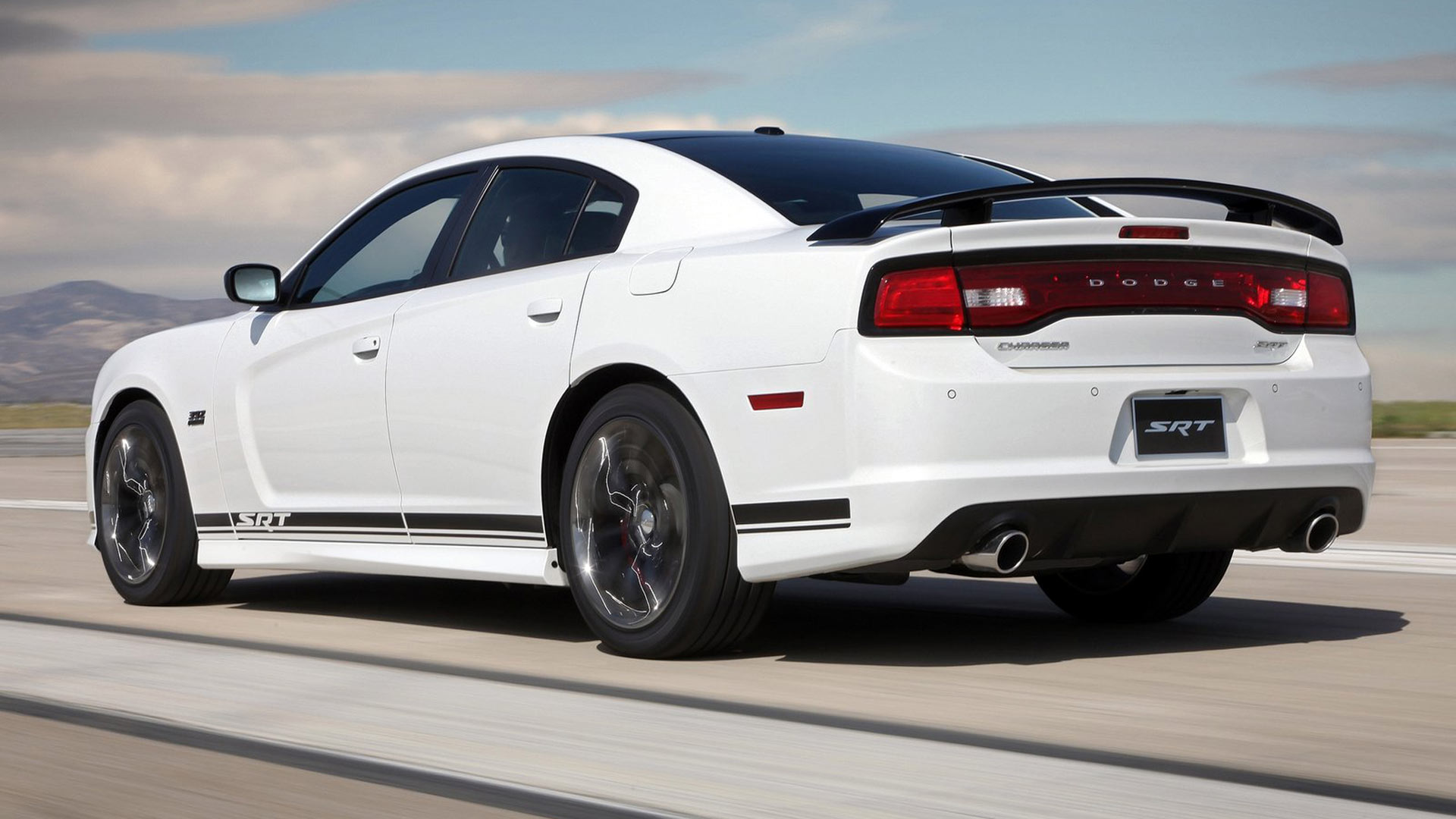
2013 Dodge Charger SRT8 392
© StellantisMore limited-edition action followed in 2013, with 392 Chargers produced wearing the 392 Appearance Package.
Intended to add extra old-school styling details to the Charger, key changes include a black roof, black side stripes, and 20-inch ‘Black Vapor’ wheels. Most important of all were the 392 Hemi badges applied to the front fenders.
Under the hood was, naturally, the 6.4-liter (392-cubic inch) Hemi V-8. Special ‘beauty’ panels with 392 detailing were added to the engine, while the dashboard gained a serialized 392 plaque.
-
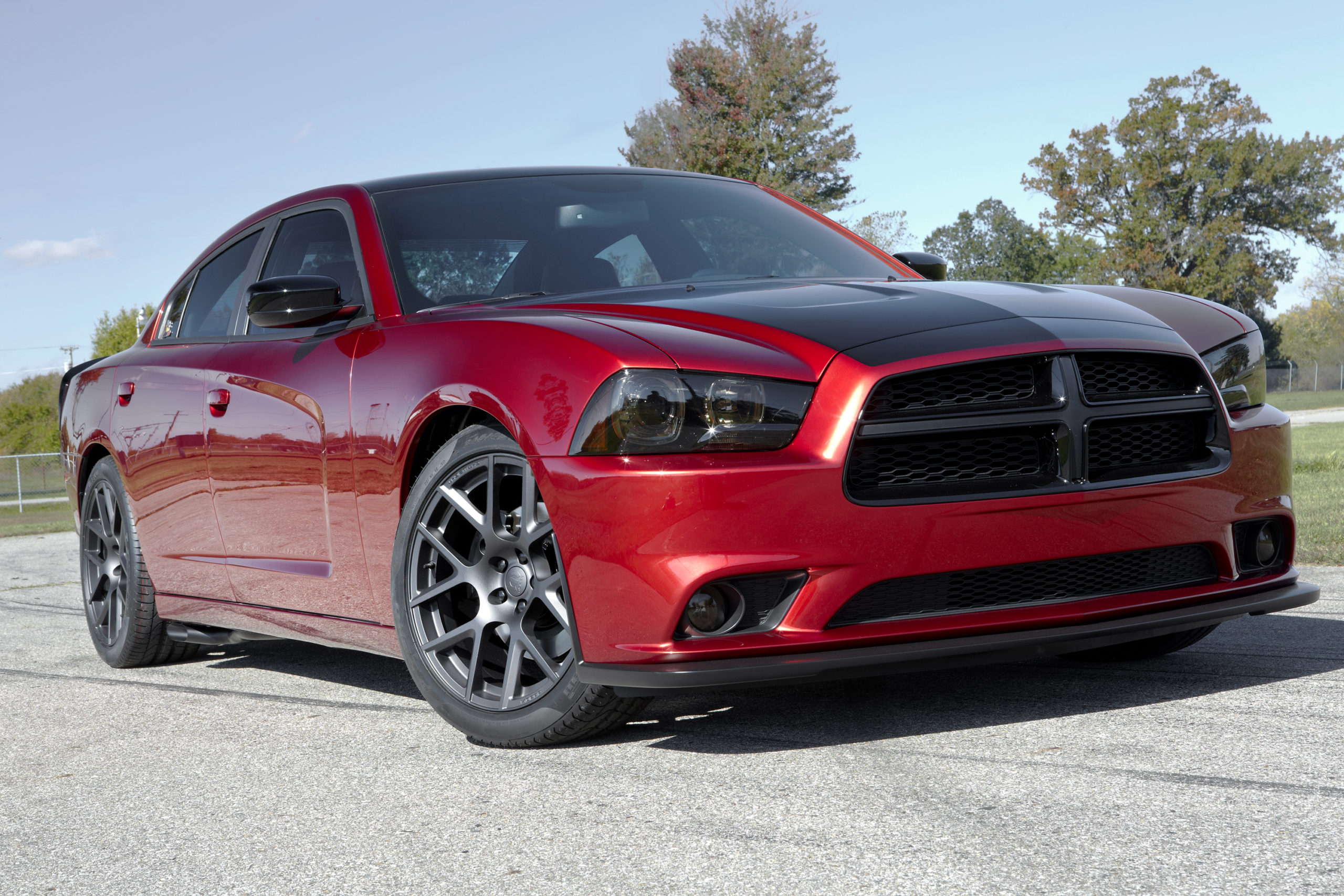
2014 Dodge Charger Scat Pack
© StellantisIn 1968, Dodge launched the ‘Scat Pack Club’ for a range of performance models, complete with merchandise and special badging for the included cars. To commemorate the 45th anniversary of the club, Dodge released details of the new Scat Package for the Charger and other models.
Buyers could pick from three levels of Scat Package upgrades, aimed at the 5.7-liter Hemi-equipped Charger R/T. Key features were a Mopar cold air intake and performance exhaust, along with bespoke badging.
Moving up the range saw the addition of performance camshafts, and even ported and polished cylinder heads for the Scat Package 3 Charger.
-
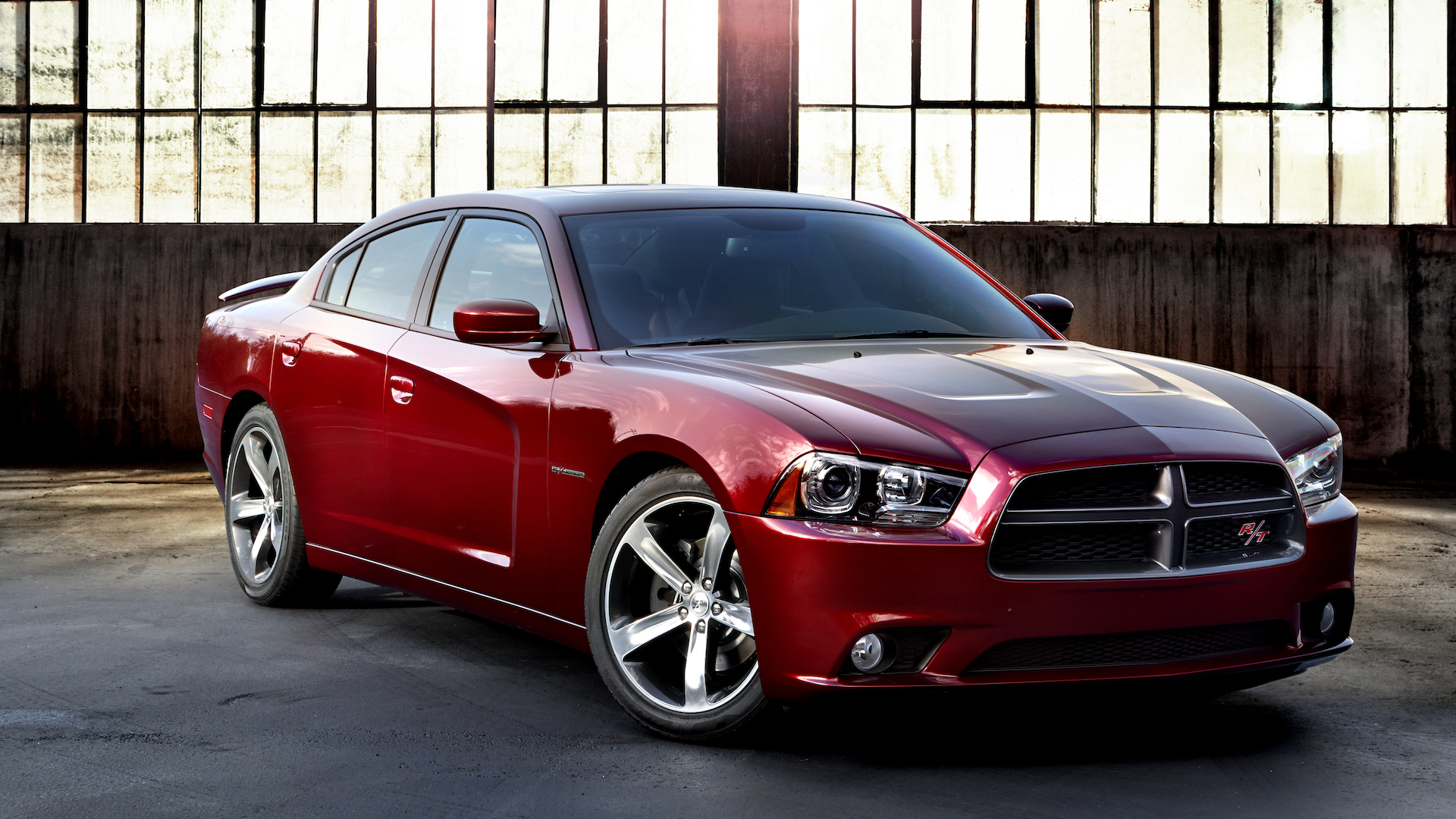
2014 Dodge Charger 100th Anniversary
© StellantisAnother anniversary was celebrated with the 2014 model year Charger, marking 100 years since the Dodge brothers launched the Model 30 car.
Unique features included the option of High Octane Red Pearl effect paintwork, with ‘Dodge Est. 1914’ badging found on the front fenders. Pulling out all the stops, Dodge fitted alloy wheel center caps with a ‘100’ logo on them.
Nappa leather upholstery, with brass-colored stitching was used inside, with diecast anniversary badging found on the seat backs.
-
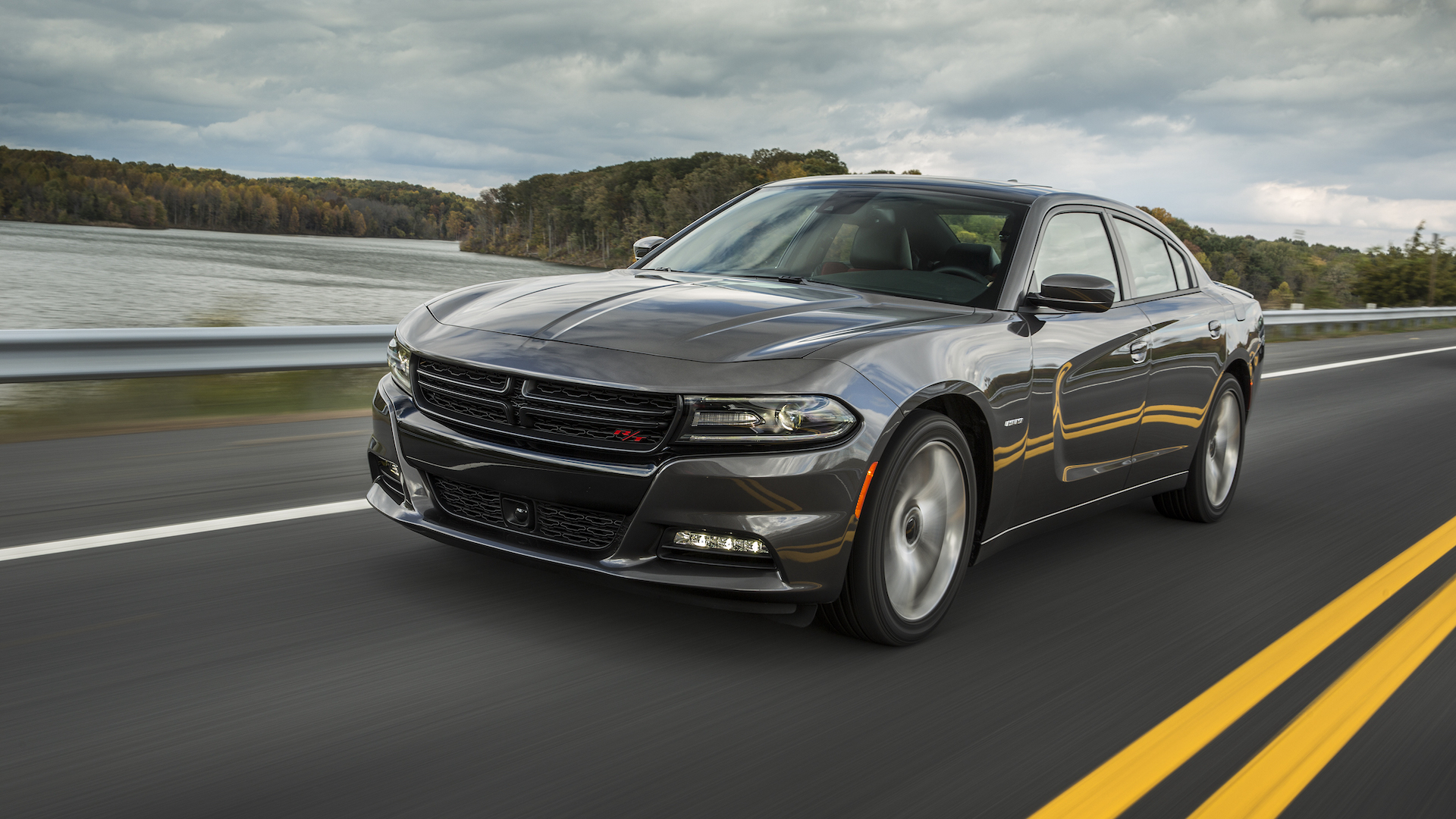
2015 Dodge Charger
© StellantisAnother facelift for the Charger came in 2015, with the 1969 model said to have provided inspiration for the styling updates. A new grille and updated headlights made the biggest visual difference at the front, with deeper scalloping found along the Charger’s flanks.
In a nod to the flying buttress design found on the second-generation model, the C-pillar was moved further back for 2015 to give a more dramatic appearance.
A TorqueFlite eight-speed automatic transmission became standard across the range, with a host of updated multimedia and infotainment options inside the cabin.
-
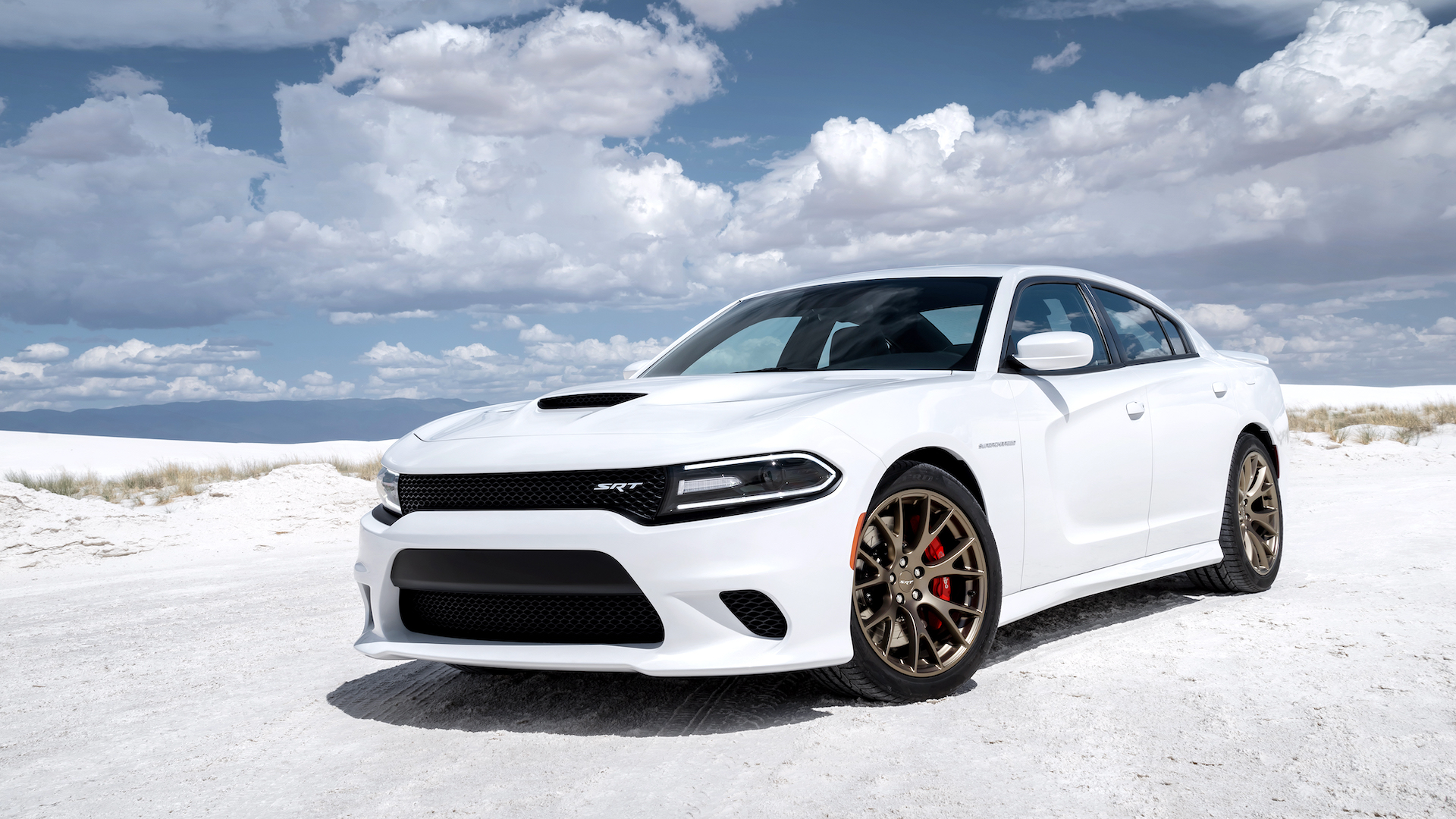
2015 Dodge Charger SRT Hellcat
© StellantisWith Dodge determined to become renowned for its extreme muscle cars, the epic Challenger SRT Hellcat was quickly followed by the four-door Charger version. Beneath the hood was the same supercharged 6.2-liter Hemi V-8, delivering an incredible 707 horsepower and 650 lb-ft of torque.
Such huge power created the potential for a top speed in excess of 200 mph, and a sedan capable of covering a quarter-mile in 11 seconds.
Brembo brakes and three-stage adjustable suspension were intended to make the Hellcat more than just a drag-strip terror.
-
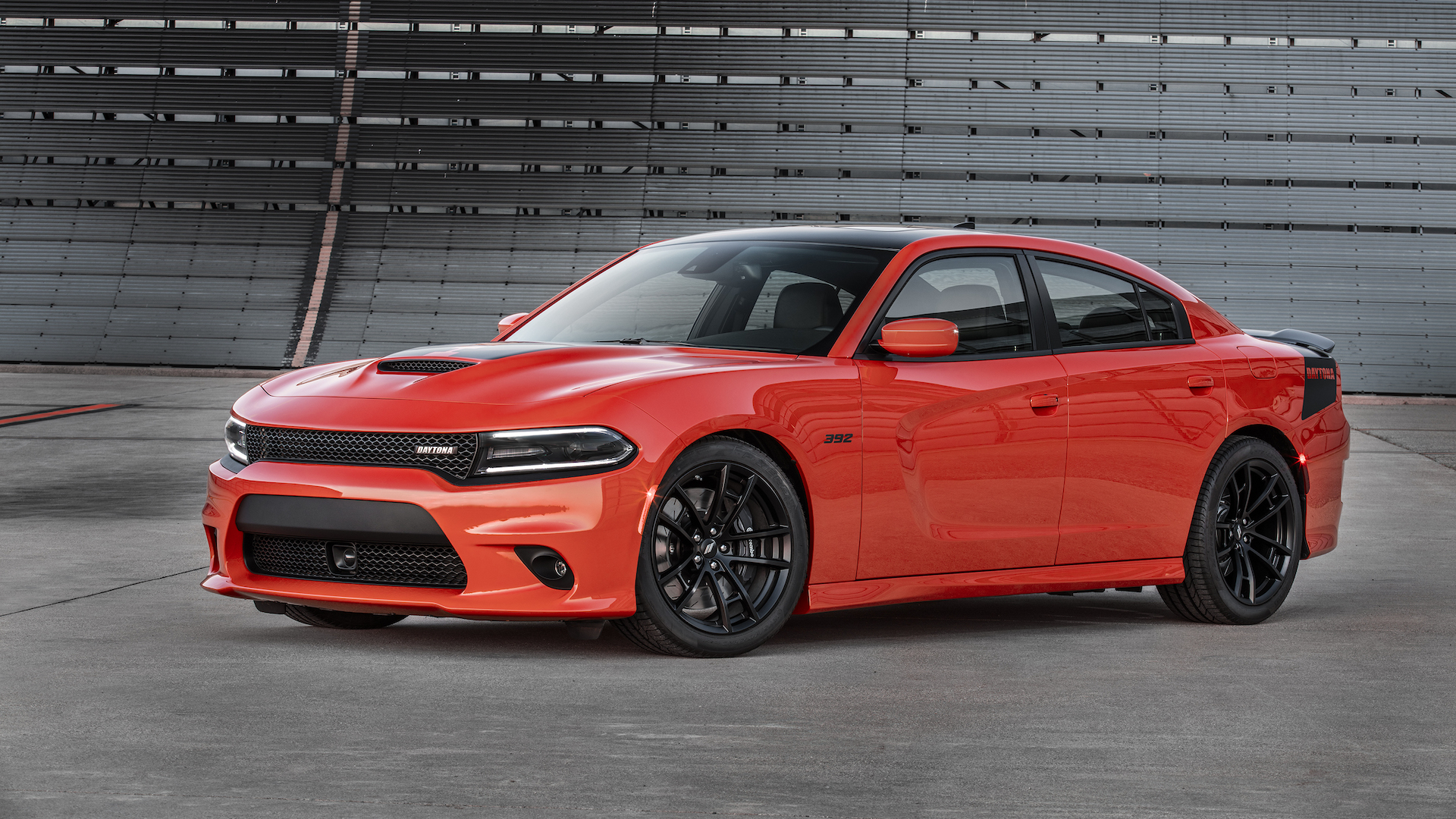
2017 Dodge Charger Daytona 392
© StellantisIt would only be a matter of time until Dodge created another Daytona special edition, with the Charger gaining the treatment again for 2017.
This time the Charger Daytona would be offered with a choice of the 5.7-liter Hemi V-8 from the R/T, or the larger 6.4-liter 392 Hemi V-8. Opting for greater displacement brought Brembo brakes, wider wheels, and a performance exhaust system.
-
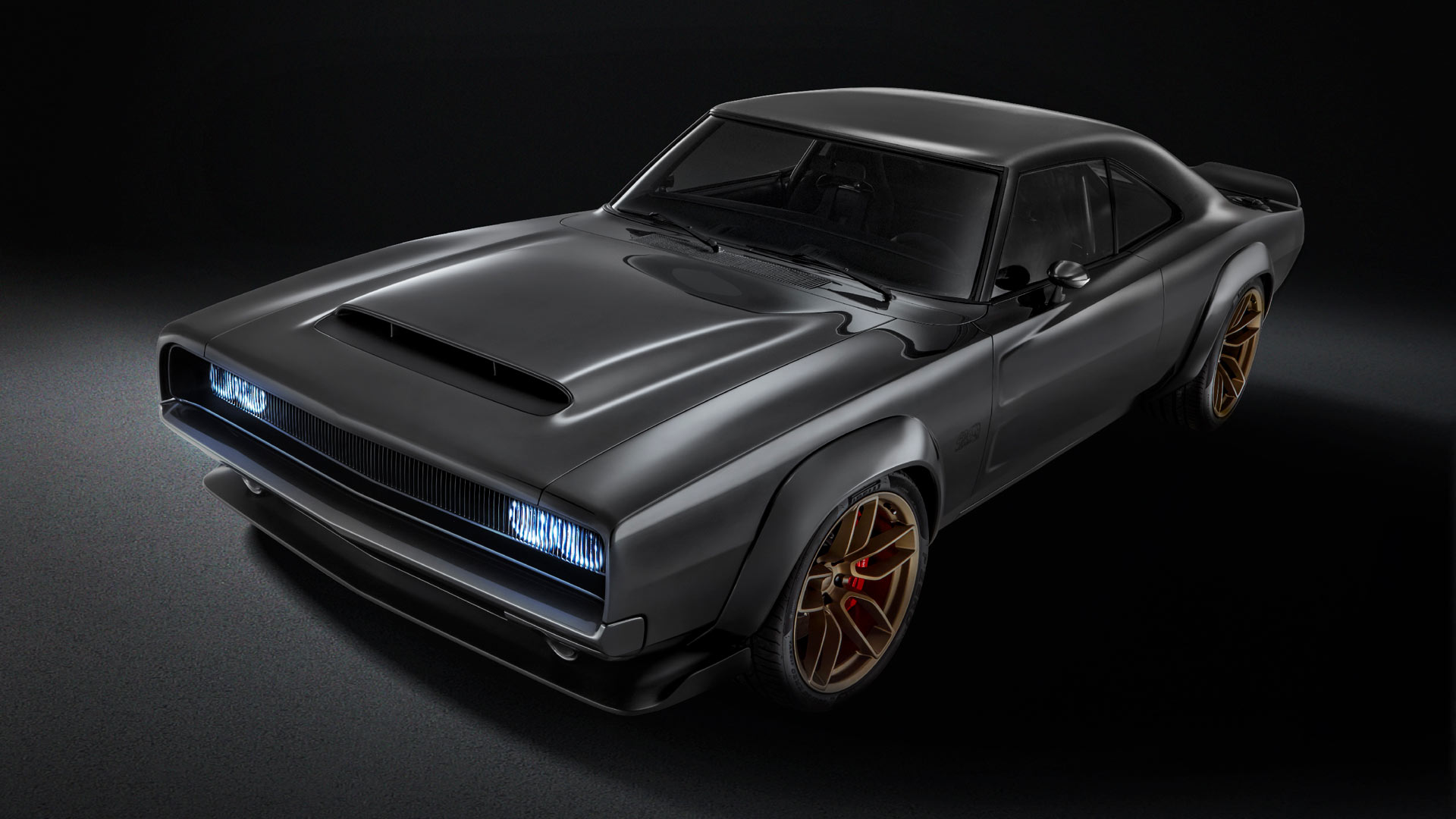
2018 Dodge Super Charger Concept
© StellantisTo celebrate the launch of the audacious 1,000 horsepower ‘Hellephant’ crate motor in 2018, Dodge created a dream restomod version of a 1968 Charger.
Parts were taken from modern Mopar offerings, including the headlights from a Challenger Hellcat, and a hood scoop inspired by the Demon. Custom bumpers and flared fenders added to the widebody stance, with the rear lights replaced by exhaust pipes from the Alfa Romeo Stelvio SUV.
Star of the show is the supercharged 426-cubic inch V-8 engine, combined with a six-speed manual transmission. An integrated roll cage can be found inside, along with the steering wheel taken from a Dodge Viper.
-
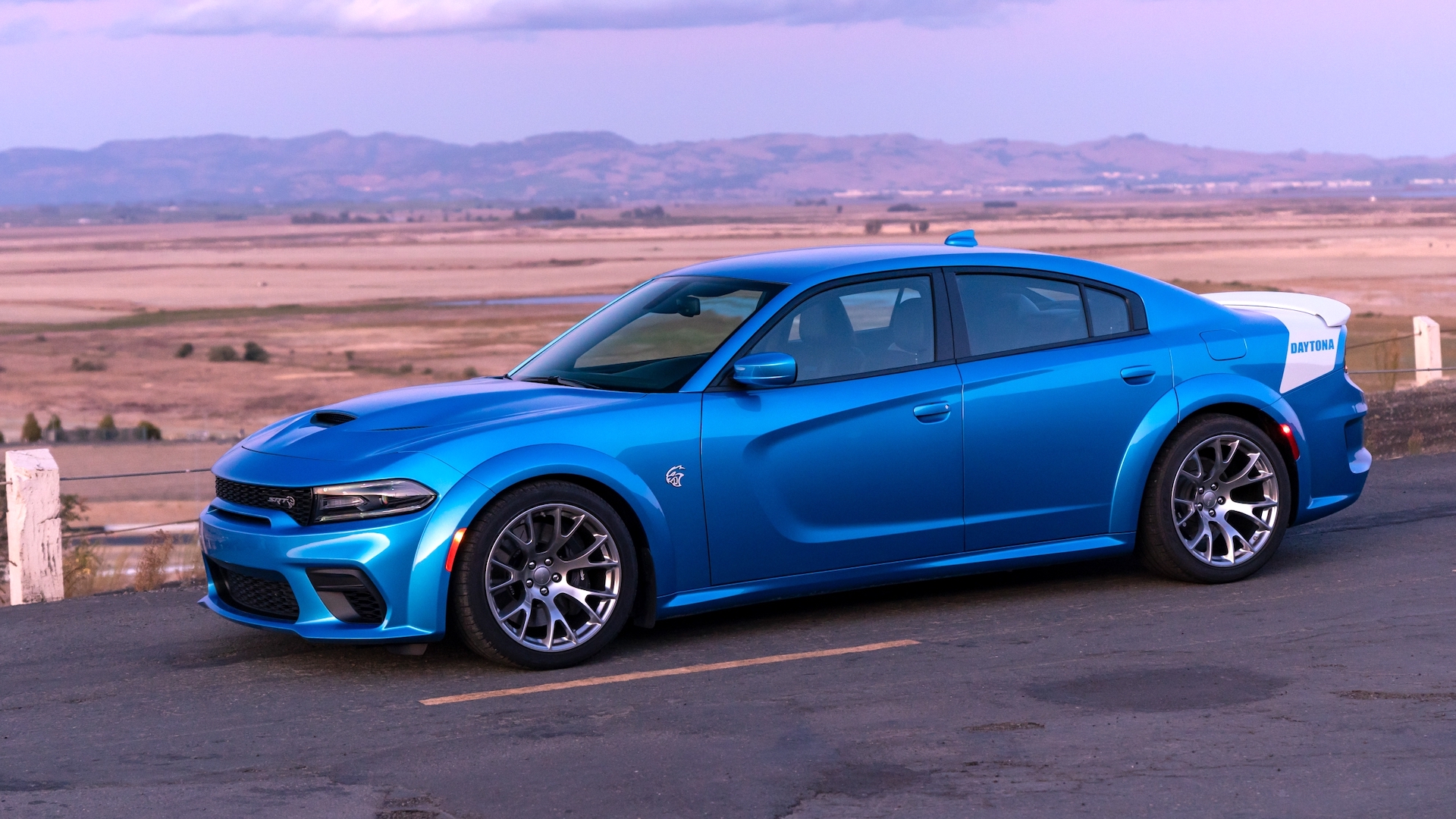
2020 Dodge Charger SRT Hellcat Daytona Anniversary
© StellantisThe 2020 model year brought a new widebody look for the high-performance Scat Pack and Hellcat Charger models. New fender flares increased the overall width by 3.5 inches, allowing the installation of 11-inch wide wheels.
To celebrate the 50th anniversary of the original Charger Daytona, Dodge took the opportunity to create a new special edition of the Hellcat Widebody. A change to the rev limiter took the 6.2-liter supercharged Hemi to 717 horsepower.
B5 Blue paint was made a special option for the 2020 Charger Daytona, with a contrasting white decklid and rear spoiler. The interior benefits from seats finished in a leather and alcantara combination, with blue stitching and ‘Daytona’ embroidery for the seat backs.
-
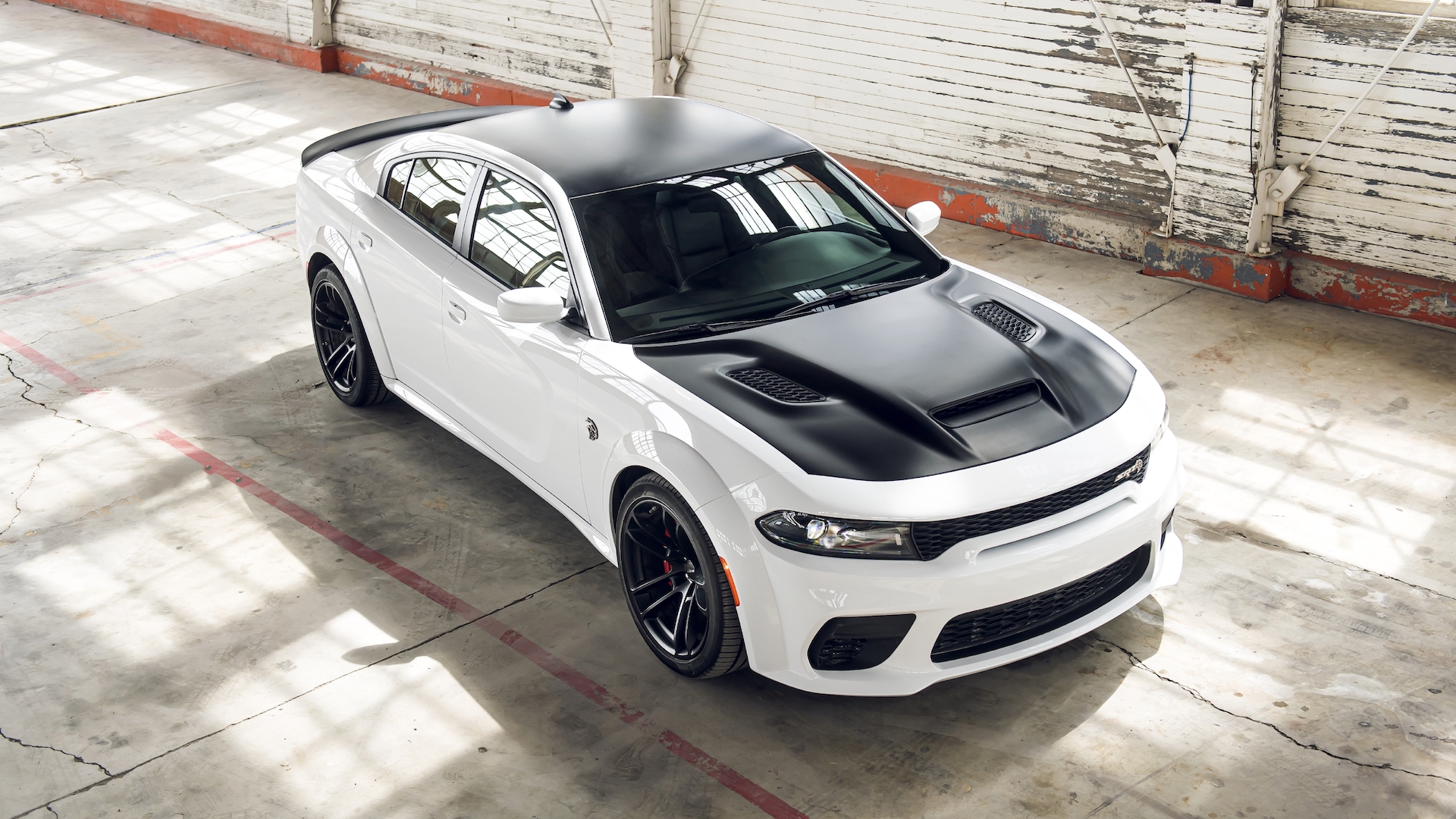
2021 Dodge Charger SRT Hellcat Redeye
© StellantisProving that there is no such thing as too much performance, the 2021 Dodge Charger saw even more power extracted from the Hellcat. The new Hellcat Redeye version sees peak output pushed to 797 horsepower, with torque at 707 lb-ft.
Helping achieve this is a larger supercharger for the 6.2-liter Hemi V-8, along with an extra fuel pump and larger air intake. The result is a 0-60 mph time of under 4 seconds, with the potential top speed stretched to 203 mph.
-
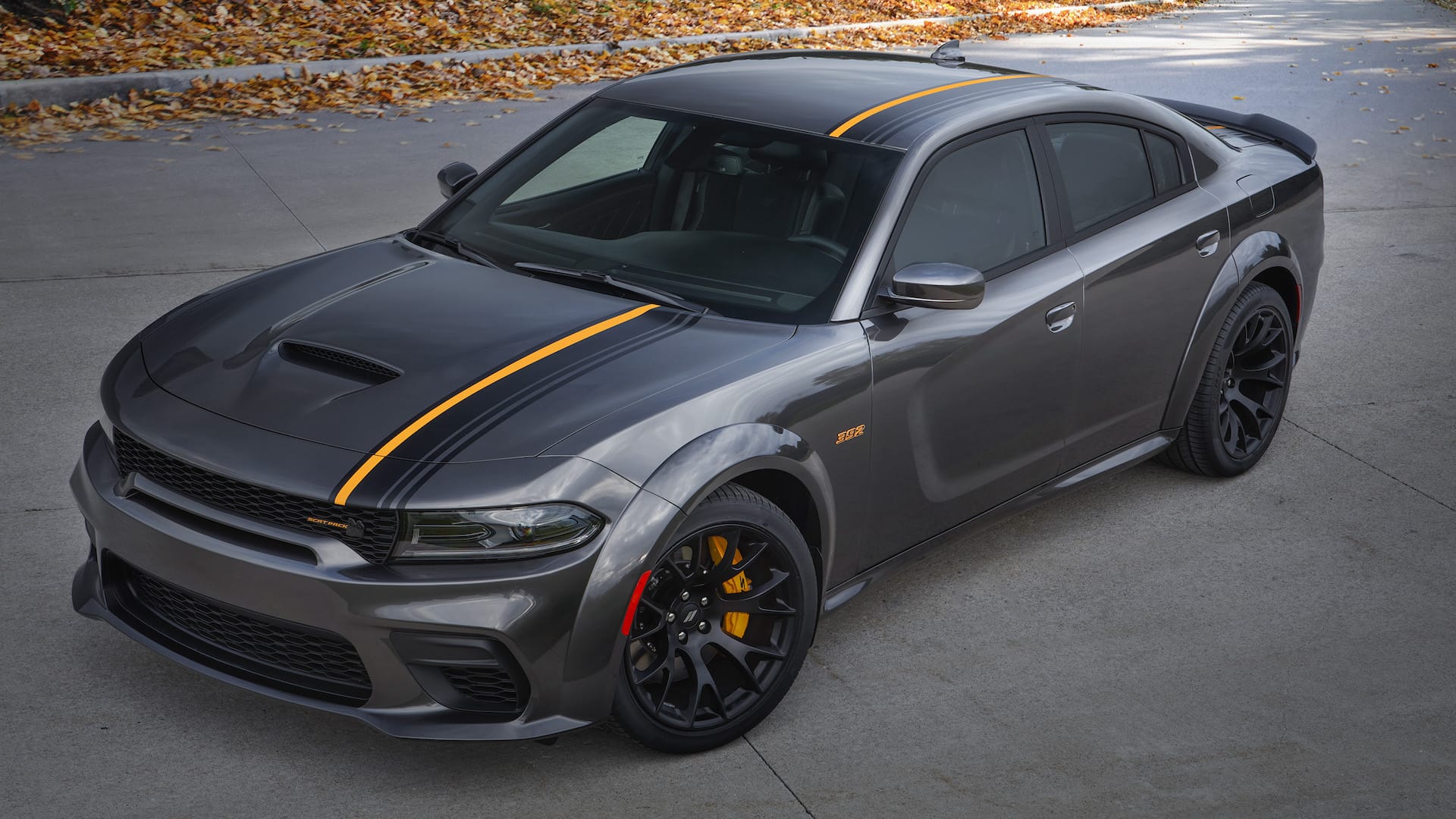
2022 Dodge Charger Scat Pack Widebody
© StellantisJust in time for Halloween, Dodge announced new option packages for the 2022 model year Charger.
Starring on the GT RWD and Scat Pack Widebody models was the new Hemi Orange pack. Said to evoke the orange-painted Hemi engine blocks of the classic Charger models, it brought unique orange-and-black accents for the exterior and interior.
An orange tracer stripe for the hood, orange badging, orange brake calipers, and black wheels make the Hemi Orange model noticeable. On the inside, orange stitching is used for the seats, steering wheel, and door cards.
-
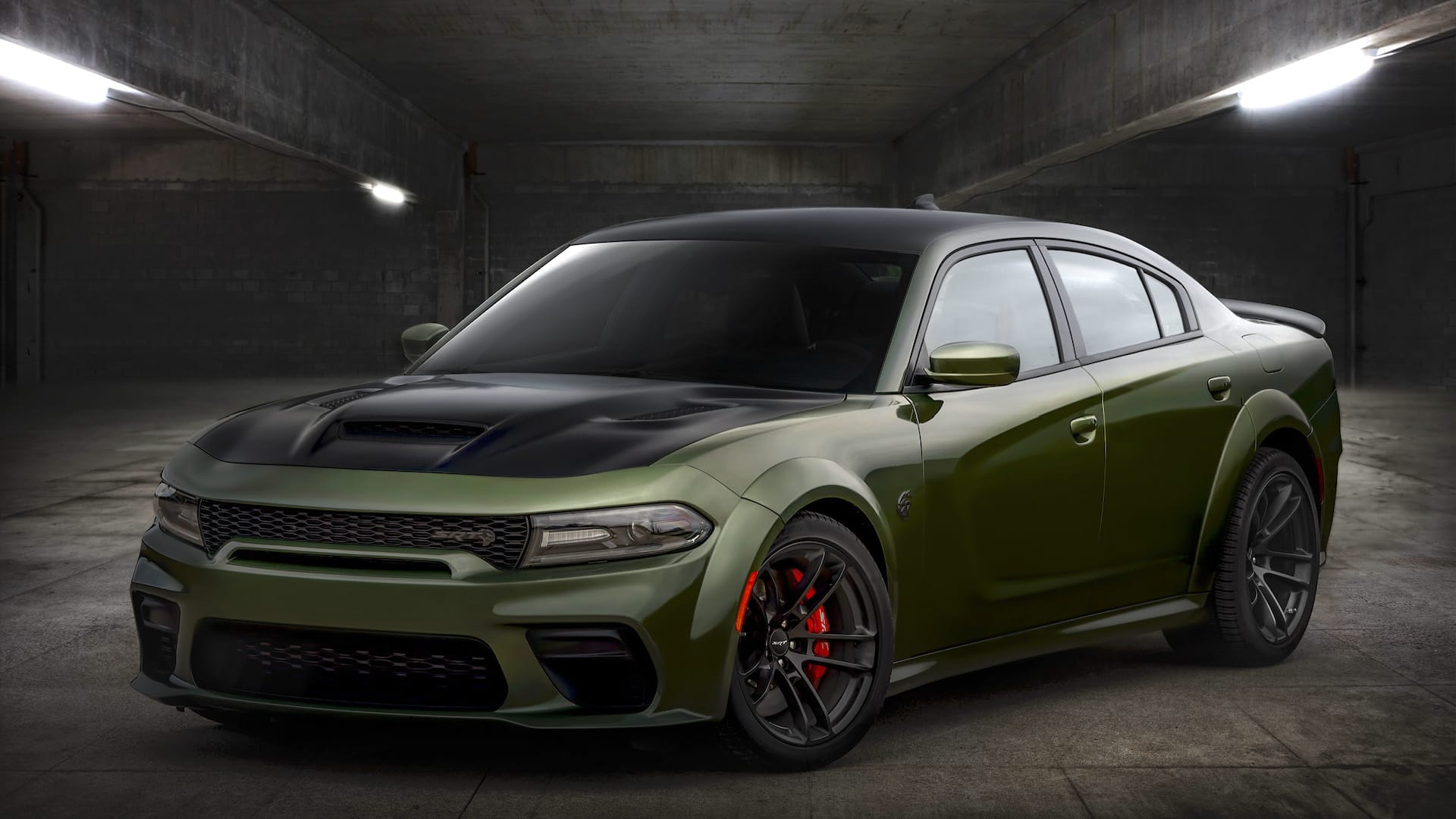
2022 Dodge Charger SRT Hellcat
© StellantisDodge retained the same SRT engine options for the 2022 model year, with the 6.2-liter supercharged Hemi offered in 717 and 797 horsepower flavors. However, SRT buyers can add a sinister Black package for further custom touches.
As the name suggests, it brings blacked-out style to the exterior of the SRT Charger, removing any hint of chromework.
SRT Hellcat badging on the grille, fender and decklid for Charger, gets swapped for items with a Midnight Gray Metallic finish. A set of Black Nickel exhaust tips are also added, completing the stealth makeover.
-
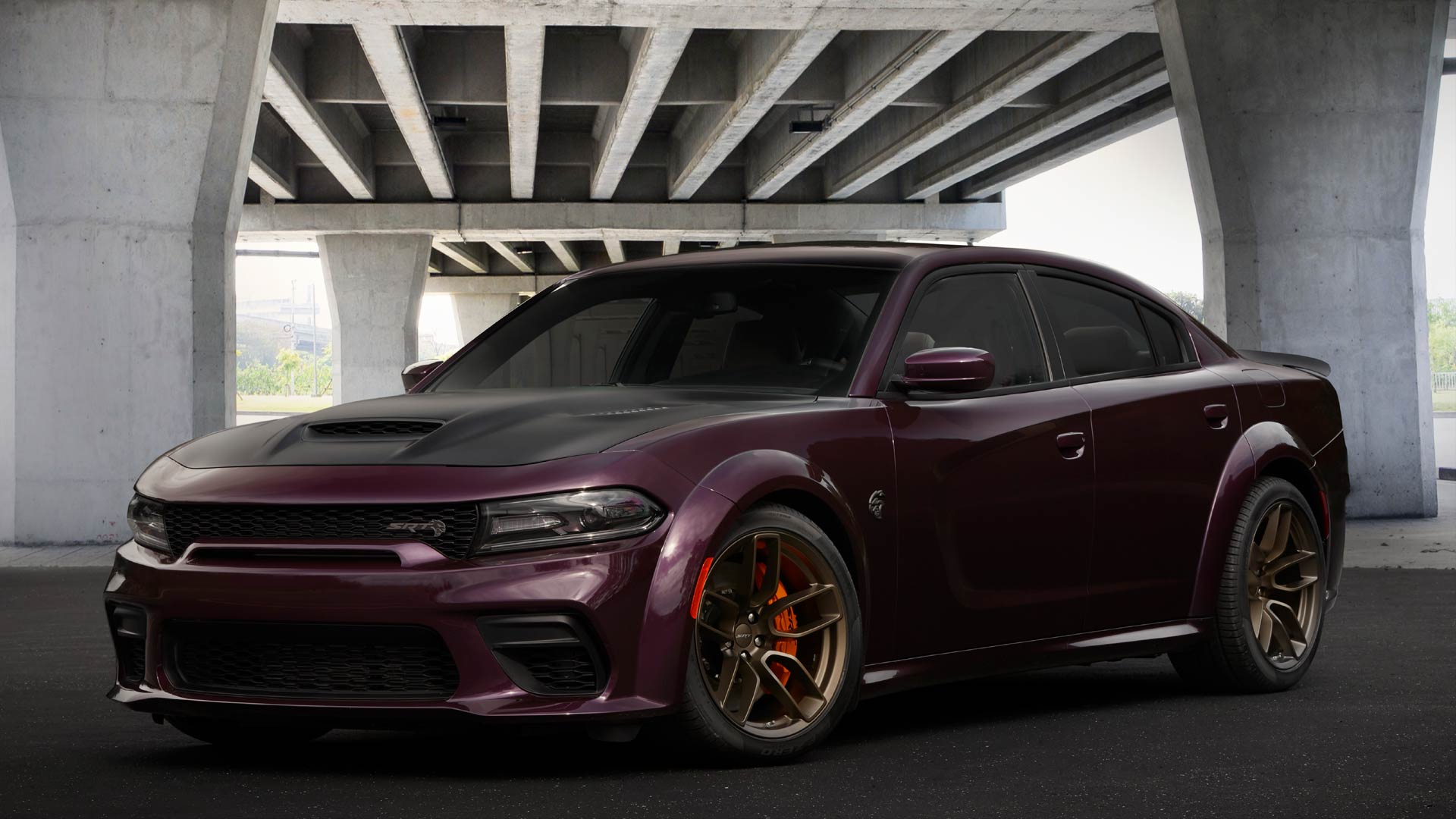
2022 Dodge Charger SRT Hellcat Redeye Widebody Jailbreak
© StellantisWith a name inspired by hacking computers to avoid restrictions on usage, the Jailbreak range of Chargers offered near-endless combinations of paint and trim options.
Buyers could choose from multiple exterior colors, badges, interior upholstery and alloy wheel finishes to create their perfect Charger. As an added bonus, the Hellcat Redeye Widebody’s 6.2-liter supercharged V-8 engine was boosted to 807 horsepower.
-
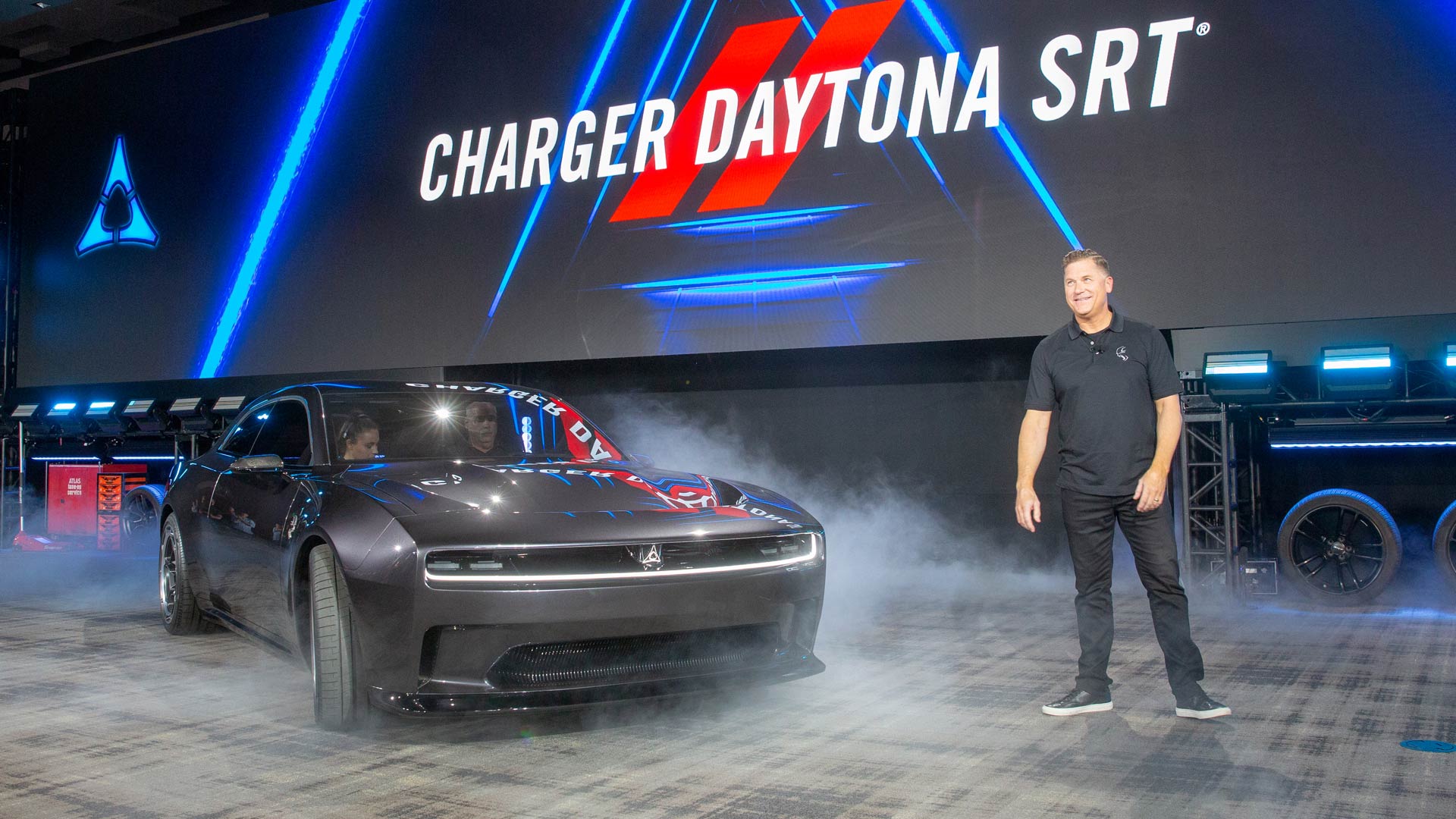
2022 Dodge Charger Daytona SRT Concept
© StellantisAlthough the current Charger is rapidly coming to the end of its life, Dodge has been clear about the direction its replacement will take. Announced at the 2022 Dodge Speed Week, the Charger Daytona SRT Concept is a fully electric muscle car.
Styling details are taken from the 1968 Charger, while a special ‘R-Wing’ at the front is designed to improve aerodynamic efficiency.
Along with a level of power that should make the electric Charger as fast as contemporary V-8 versions, Dodge also fitted a ‘Fratzonic Chambered Exhaust’ to generate a unique sound.
-
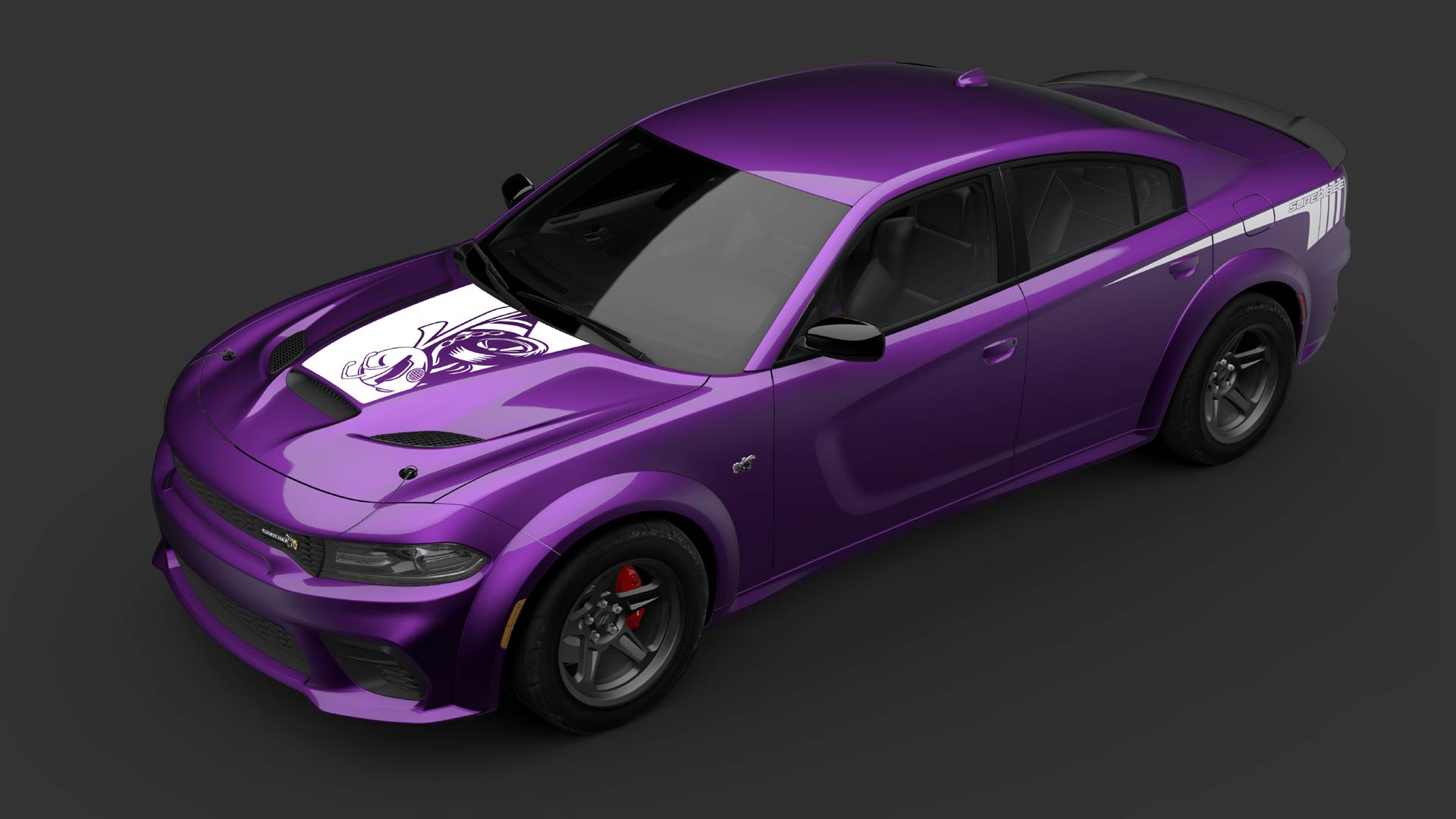
2023 Dodge Charger Super Bee
© StellantisTo celebrate the end of current Charger and Challenger production, Dodge planned a series of seven ‘Last Call’ special editions. Taking inspiration from previous muscle cars, the first version offered was the Super Bee.
Named after the iconic Charger Super Bee of 1971, this commemorative edition was limited to 1,000 examples. These are split between 500 Scat Pack cars in B5 Blue and 500 Scat Pack Widebody versions in Plum Crazy. Both come with Super Bee exterior decals and a functional hood scoop.
More Super Bee branding can be found inside, with Dodge also fitting Drag Mode-enabled adaptive suspension. Scat Pack Widebody versions also feature drag radial tires.
-
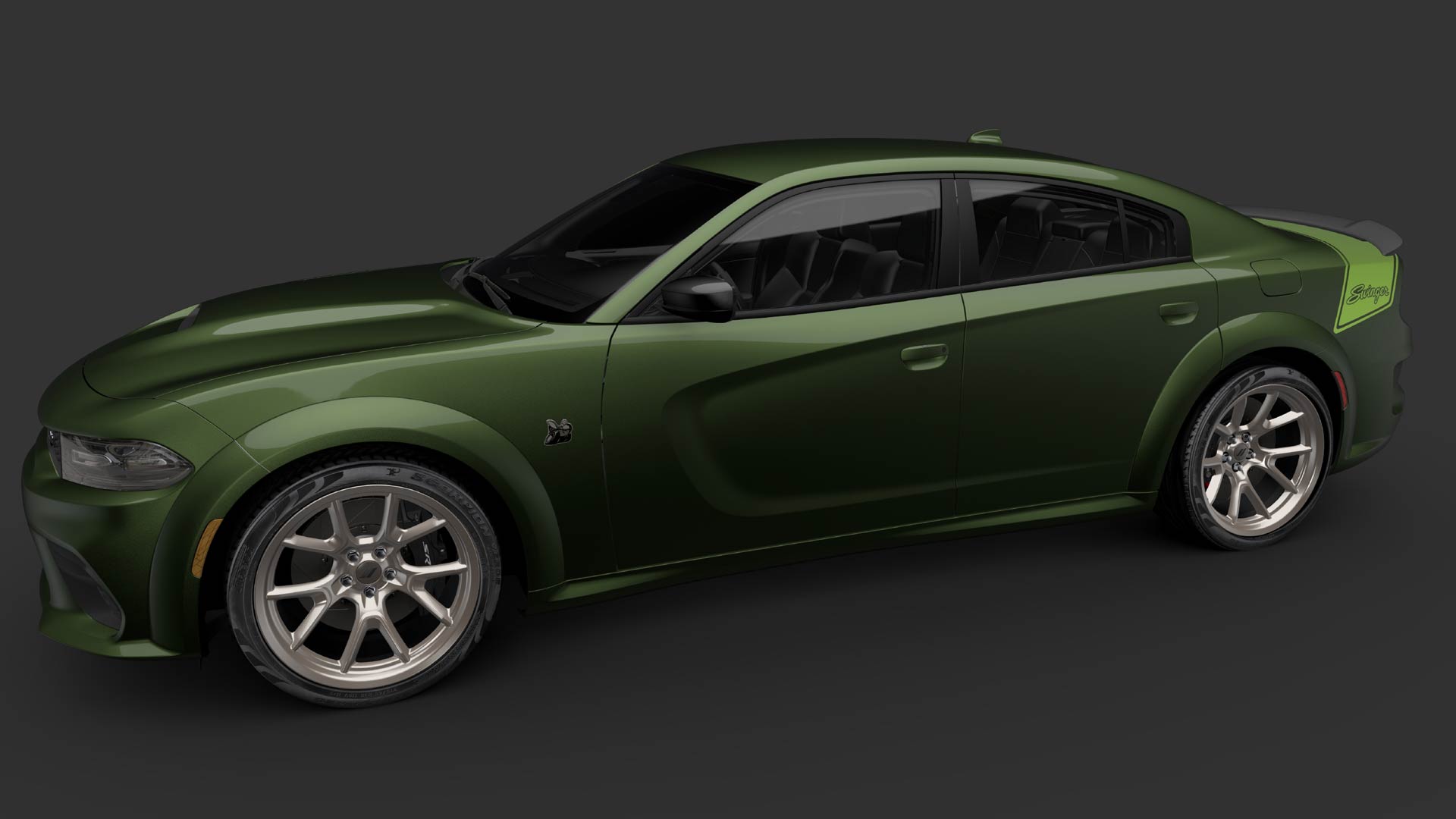
2023 Dodge Charger Scat Pack Swinger
© StellantisAnother throwback to historic Mopar muscle, the Scat Pack Swinger was a reference to the Dodge Dart Swinger, sold between 1967 and 1976. Featuring retro touches inside and out, the Charger Scat Pack Swinger was limited to 1,000 examples.
Buyers had a choice of F8 Green, Sublime Green and White Knuckle exterior color options, with the interior also benefiting from a traditional theme. Wood grain-style trim, green stitching and green door card details all added to the time-warp experience.
A gold finish is used for exterior badges and 20-inch alloy wheels. Like all Last Call models, a special plaque can be found beneath the hood.
-
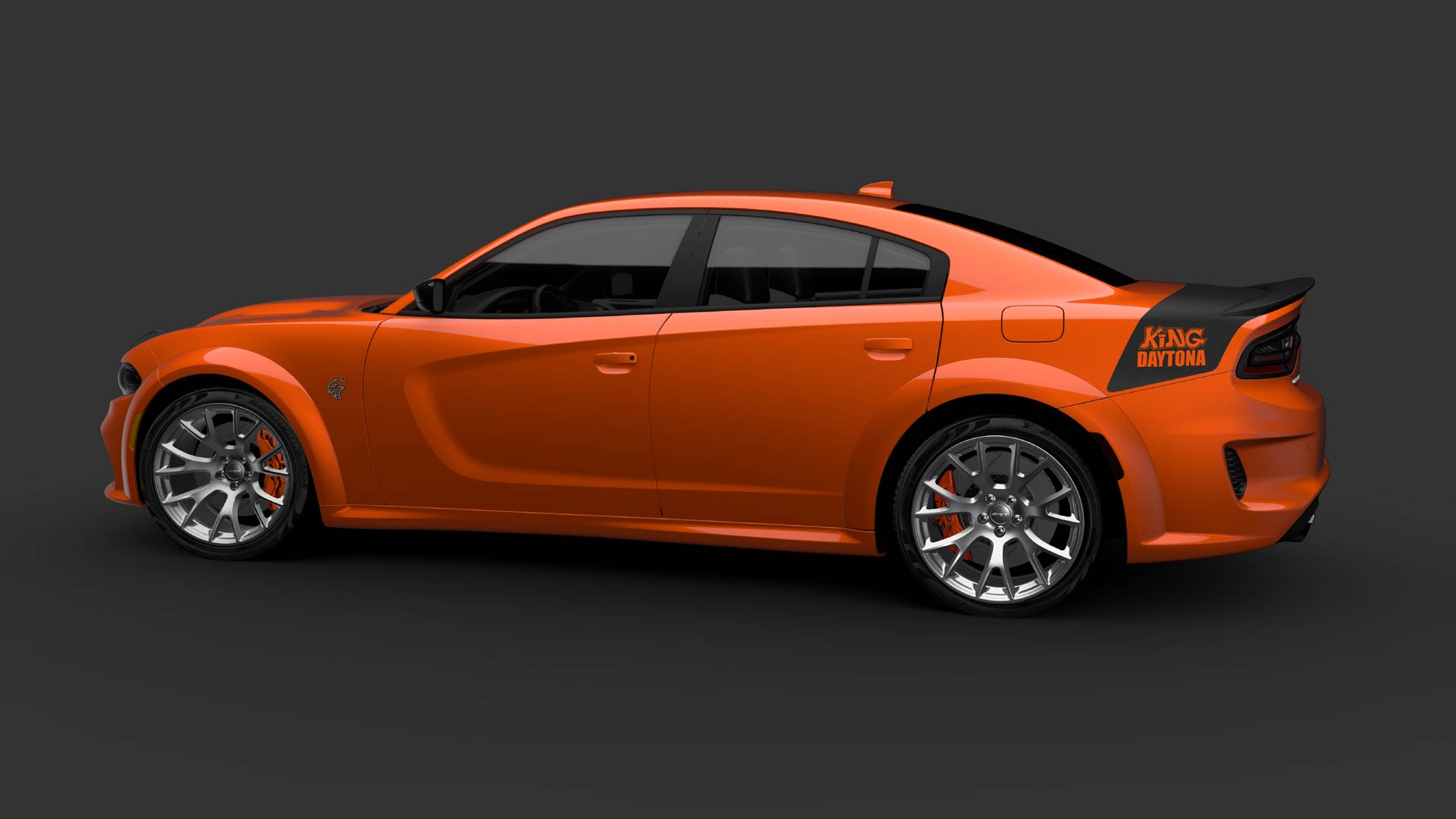
2023 Dodge Charger King Daytona
© StellantisA tribute to the 1969 Dodge Charger ‘King Daytona’ owned by William ‘Big Willie’ Robinson, only 300 examples of the Charger King Daytona will be produced.
Finished in Go Mango orange, it features satin black King Daytona rear fender decals and a satin black hood. Satin chrome is used for the exterior badges, with the 20-inch wheels in Satin Carbon. An additional 10 horsepower boost takes the King Daytona to 807 horsepower.
Orange is used for the stitching and Daytona logos on the seats, along with being an accent color for the instrument panel and door trim. A suede headlining, Alcantara steering wheel and power sunroof are other elements included in the package.
-
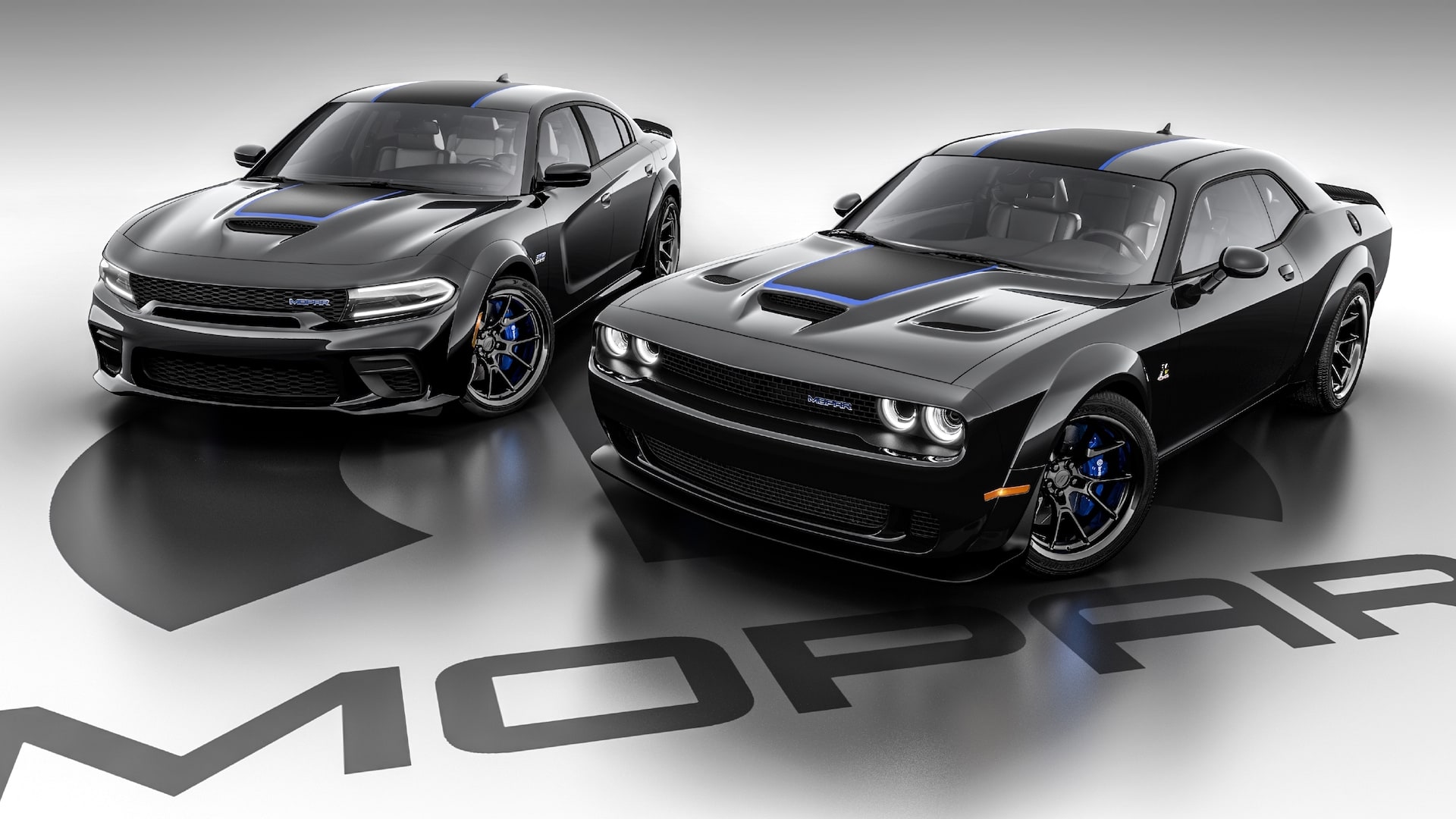
Mopar ‘23 Dodge Charger
© StellantisFor the 2023 model year, Mopar offered the chance for buyers to buy special-edition versions of the Dodge Challenger and Charger models. Based upon the R/T Scat Pack Widebody, just 220 examples of the Mopar ’23 Charger are planned.
Only Pitch Black Clear Coat is offered for the exterior, with unique matte-black graphics and Mopar Blue tracer stripes along the hood, roof and trunk lid. Mopar Blue is also used for the brake calipers and front grille badge, while the rear of the car has a carbon fiber spoiler.
Under their muscular bodywork, Mopar ’23 models benefit from Bilstein suspension and Brembo brakes. The interiors come with rear carbon fiber trim, too.
-
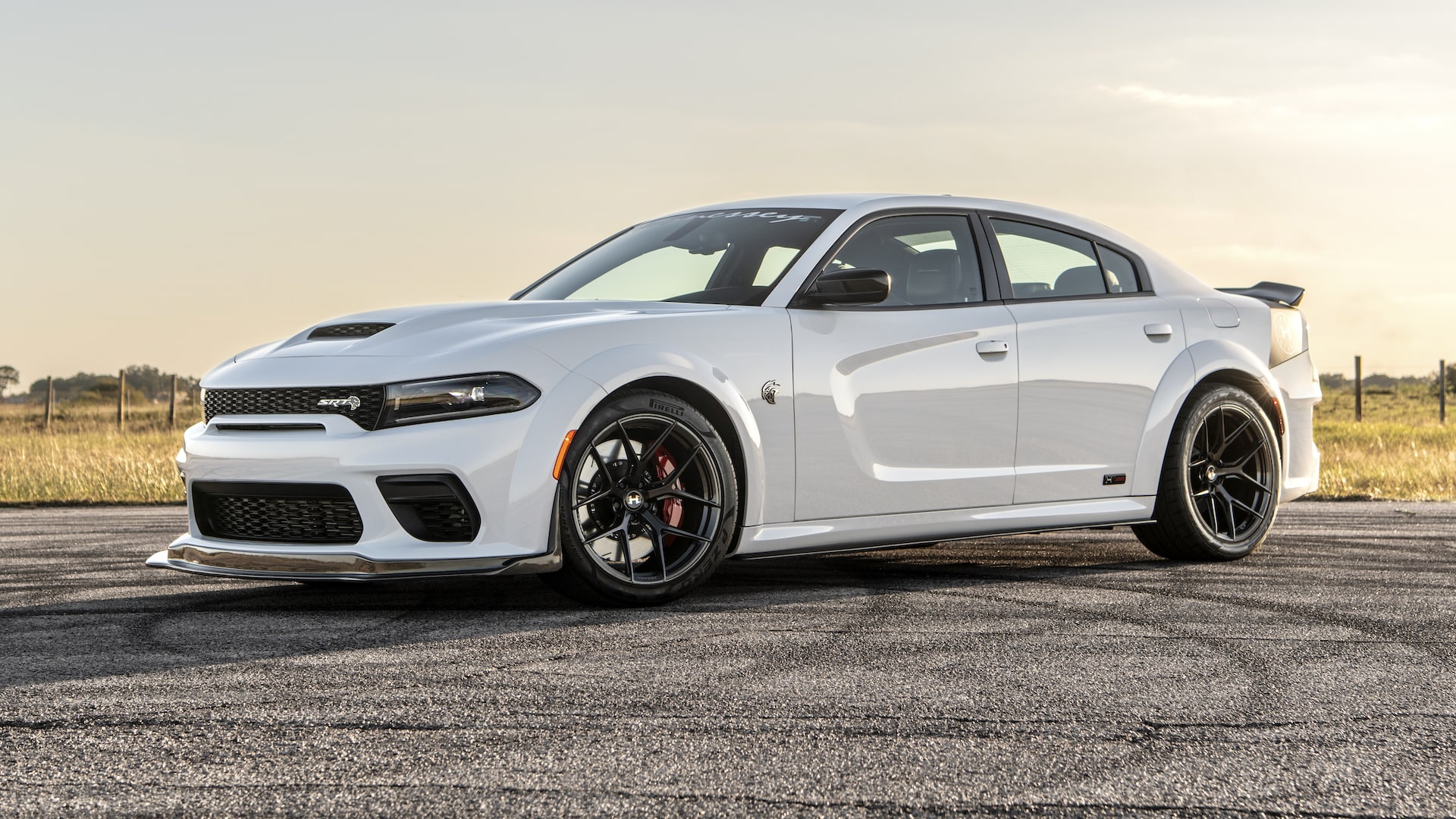
Hennessey Performance Dodge SRT Charger Last Stand
© StellantisTexas-based tuner Hennessey is no stranger to upgrading the Dodge Charger. This time, it has launched a special ‘Last Stand’ model to commemorate the end of production.
After nine years of Hellcat-powered creations, the Last Stand sees output from the 6.2-liter V-8 pushed to an incredible 1,000 horsepower, plus 948 lb-ft of torque. Such power is made on regular pump gas, and can see the Charger sprint to 60 mph in only 2.8 seconds, and cover a quarter-mile in 9.9 seconds.
Hennessey will limit production to 50 examples, all with 20-inch alloy wheels, a carbon fiber aero kit, and bespoke ‘Last Stand’ graphics.
-
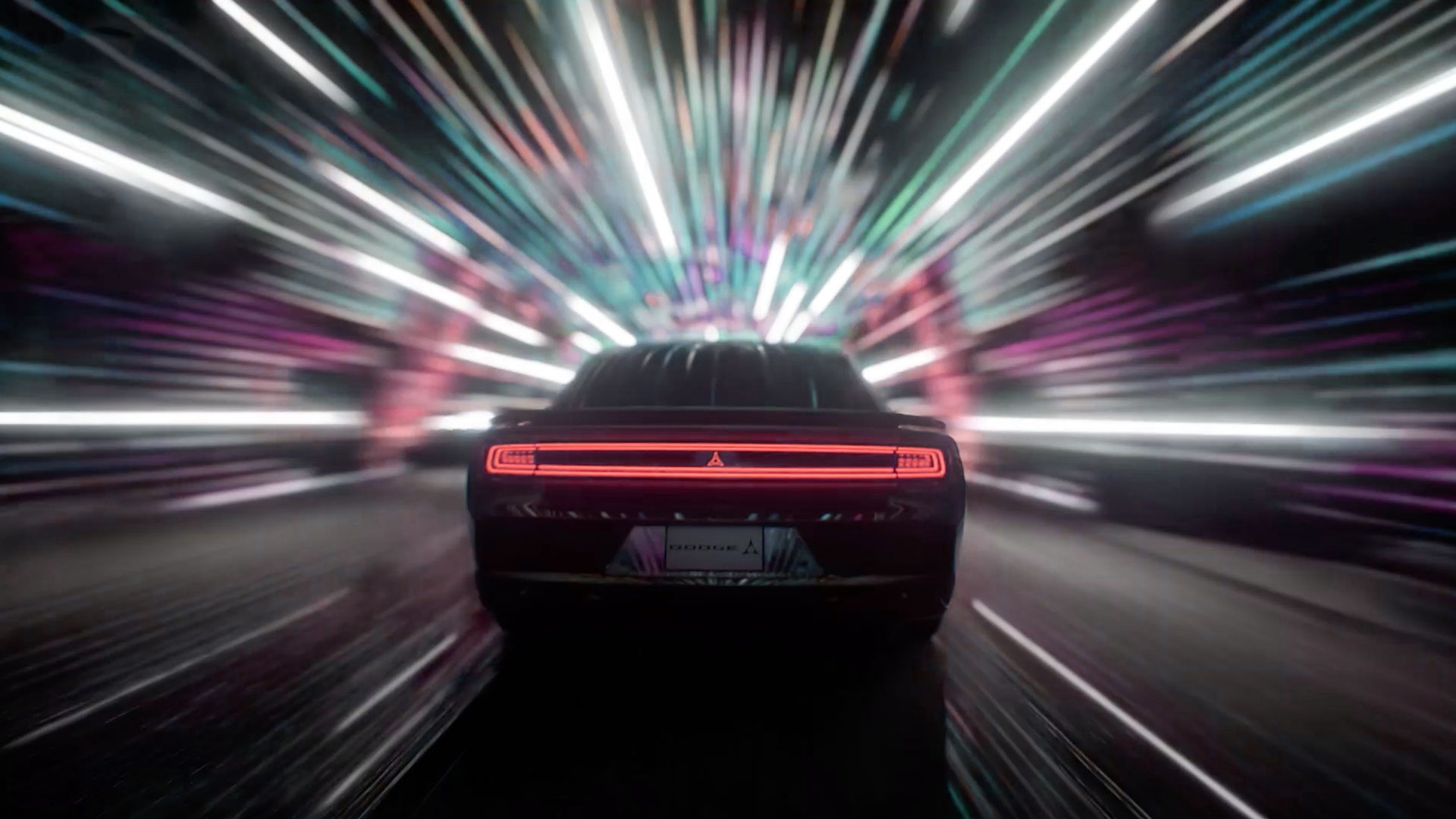
Dodge Charger: A New Chapter
© StellantisWith production of the previous-generation Charger completed by the end of December 2023, Dodge moved quickly to reveal the replacement for one of its most recognizable creations.
Over nearly six decades, the Charger has evolved and adapted to meet the demands of customers.
The move towards an electrified future is simply another chapter in the continuing story of Dodge’s iconic muscle car.
-
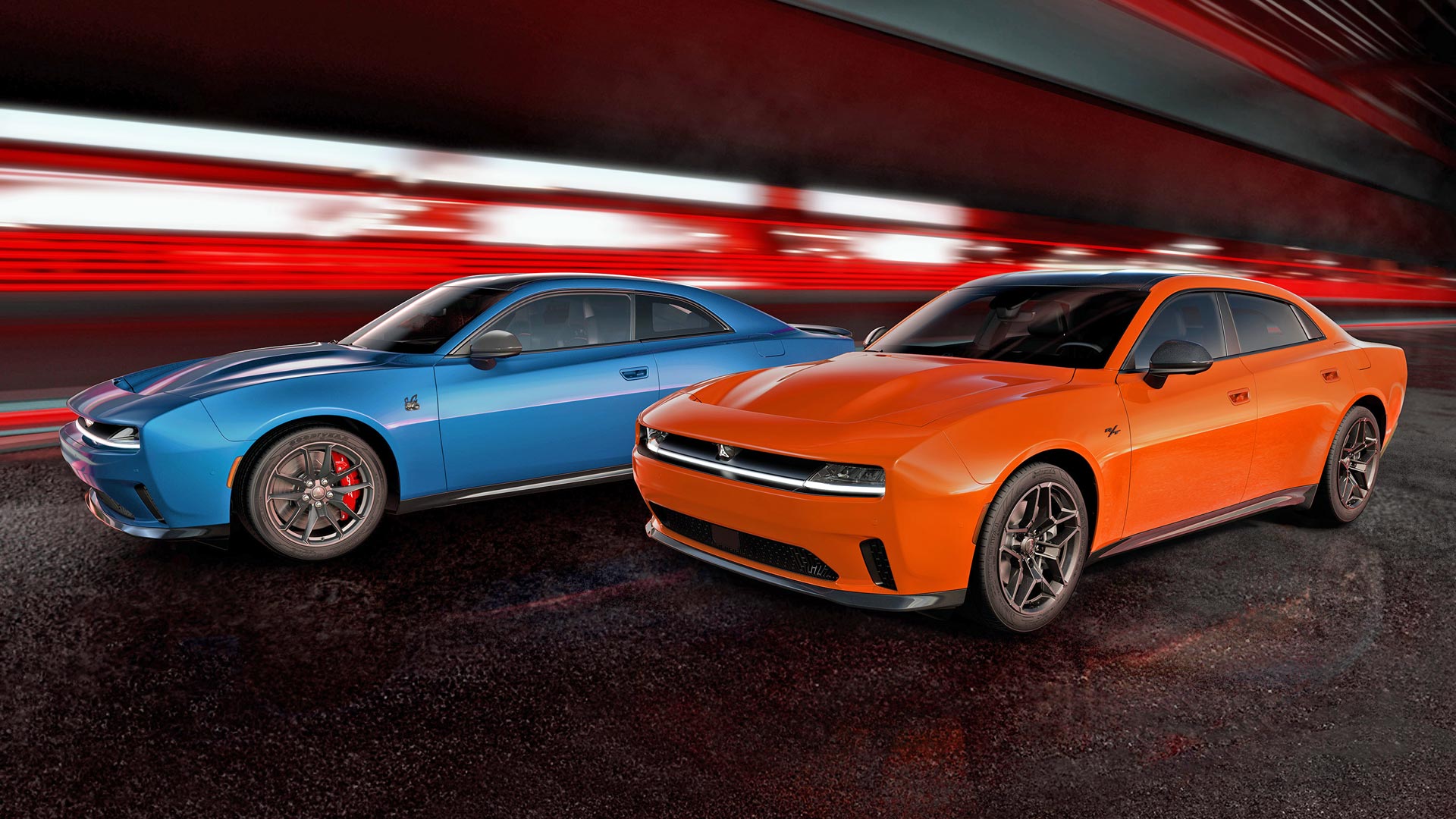
The new 2025 Dodge Charger is here
© StellantisNow, Dodge has officially unveiled the all-new Charger, with the headline-grabbing promise that it will retain the title of being the world’s quickest and most powerful production muscle car.
Enthusiasts will have the choice of three powertrain options, including a range-topping all-electric model. Sadly, V-8 power is out, but Dodge still aims to deliver some gasoline-fueled thrills.
There will also be two-door coupe and four-door sedan body styles available, giving the all-new Charger a comprehensive model range.
-
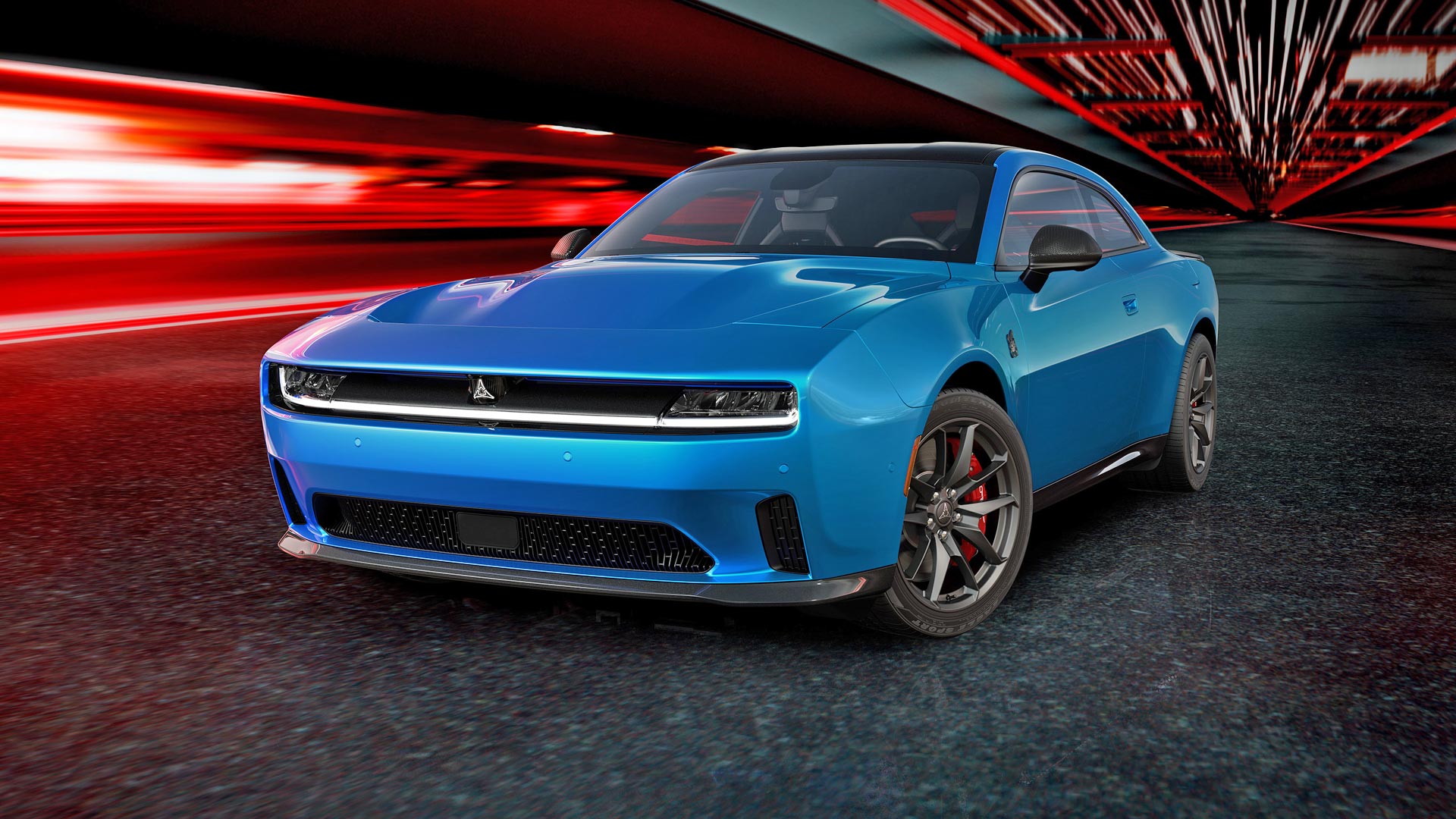
2024 Dodge Charger Daytona Scat Pack
© StellantisGrabbing the most headlines for the new Charger will be the electric Daytona Scat Pack and R/T models. Channeling much of the previously announced Daytona SRT Concept, Dodge says the result is the world’s first electric muscle car. It will go into production in the middle of 2024.
The Daytona Scat Pack and R/T versions, like all new Charger models, come with all-wheel drive as standard. Each axle receives its own Electronic Drive Module (EDM), combining an inverter, motor and gearbox into one package.
Using Dodge’s 400-volt technology, each individual EDM can generate up to 335 horsepower and 300 lb-ft of torque, with multiple power outputs possible along the way. That means 670 horsepower for the Scat Pack.
A PowerShot feature will be standard on Daytona Scat Pack and R/T models, delivering a 40 horsepower boost for 15 seconds.
-
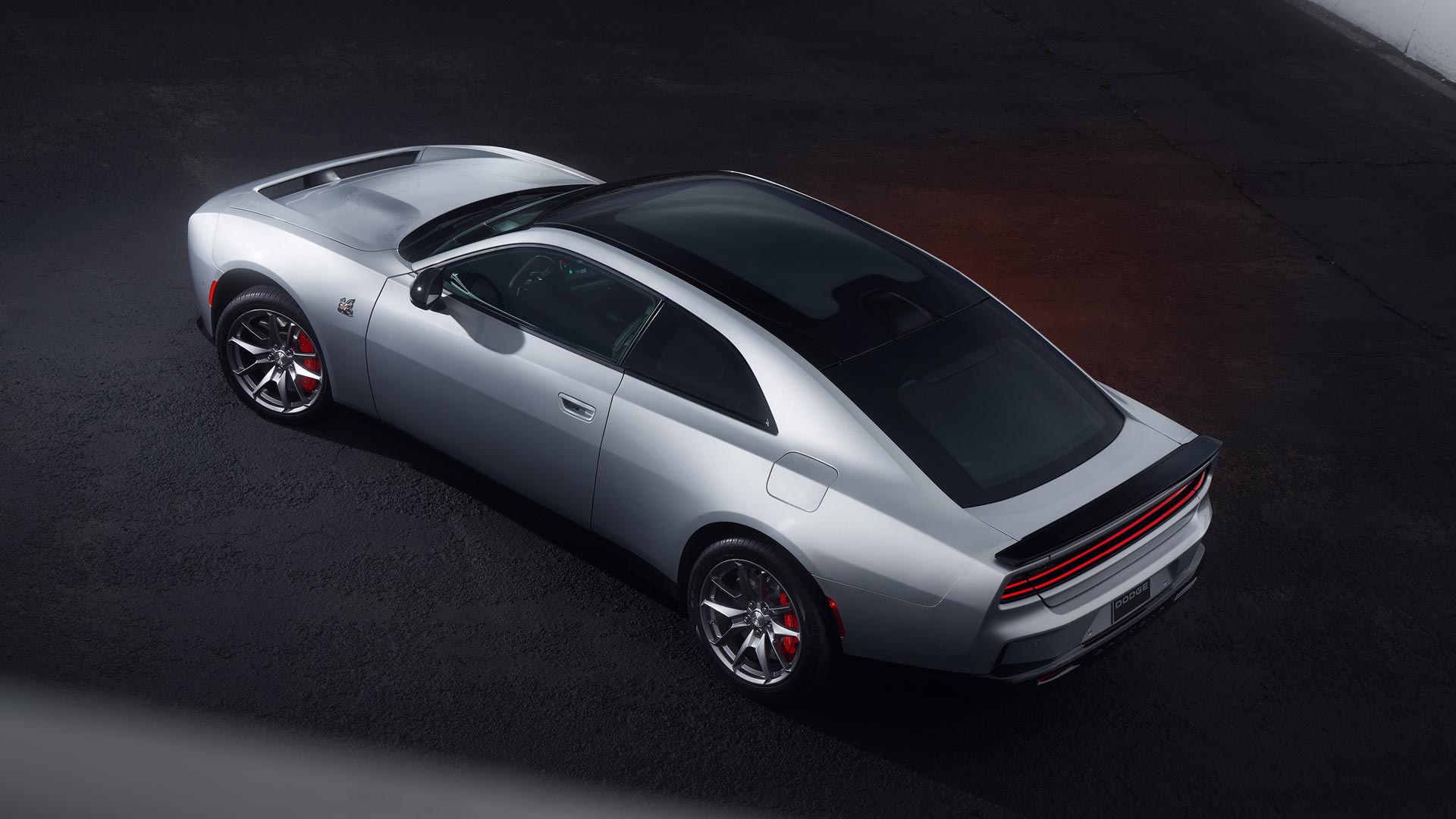
Charging up the Charger Daytona Scat Pack
© StellantisPowering the all-electric model will be a 100.5 kWh battery pack, designed to maximize performance and allow for high-speed quarter-mile runs to be dispatched with ease.
Fully charged, Dodge suggests a potential battery range of up to 260 miles for the Daytona Scat Pack, while the Charger Daytona R/T will return more than 317 miles on a full charge. Selectable levels of regenerative braking will be included to boost the car’s range.
Using a rapid CCS charging device, the battery pack can be replenished from 20 to 80 percent capacity in just over 27 minutes.
-
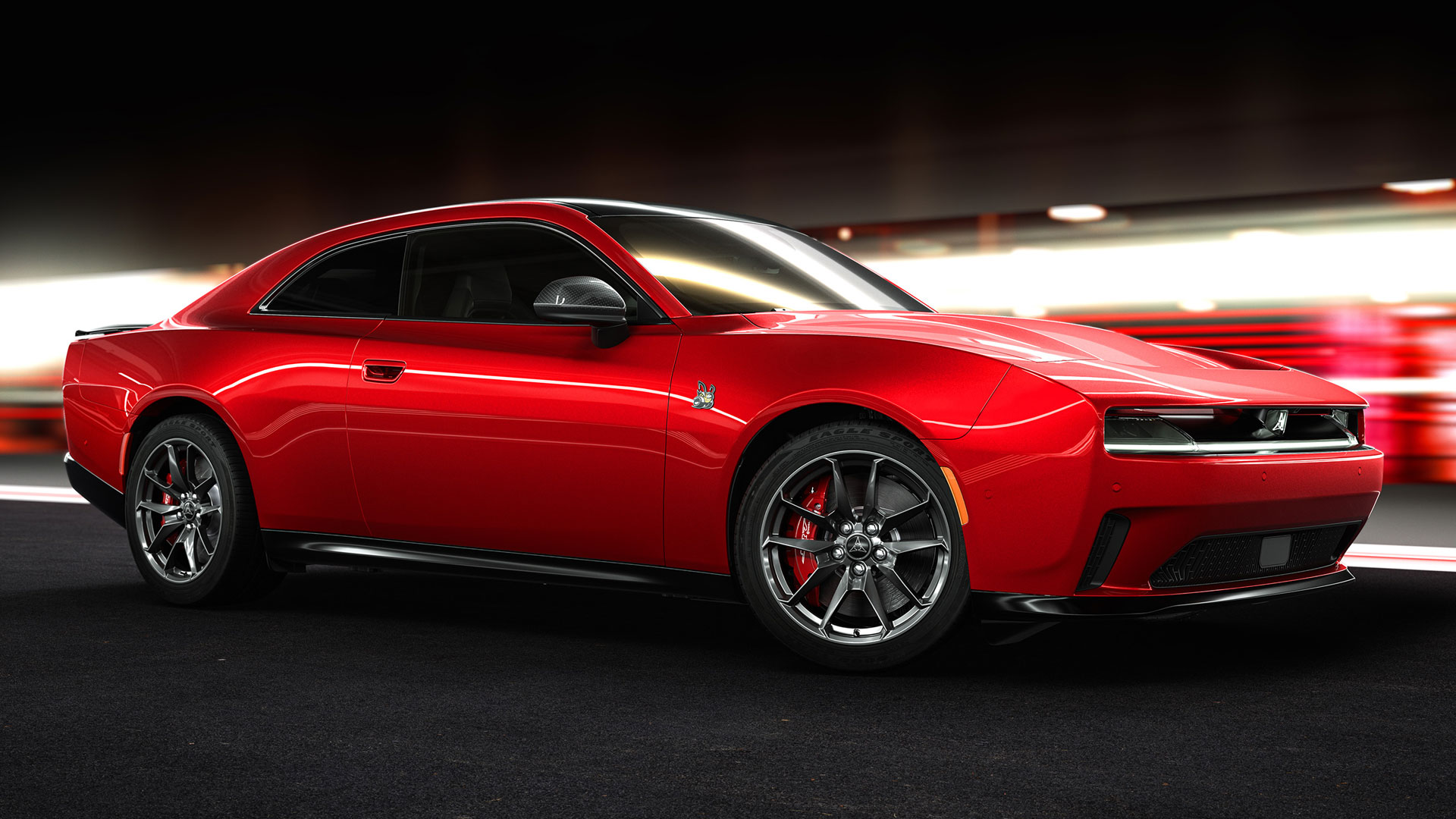
New power source, same muscle car antics
© StellantisEven with the shift to electrification, Dodge has not forgotten what makes a muscle car appeal to enthusiasts. The Charger Daytona Scat Pack, for instance, will be able to accelerate from 0-60 mph in just 3.3 seconds. A quarter-mile should take just 11.5 seconds.
A Fratzonic Chambered Exhaust, as seen on the Daytona SRT Concept, will generate sounds said to be as intense as the previous-generation Charger Hellcat.
For good measure, Dodge has added a ‘Donut Mode’ to the new Charger. This allows the rear wheels to spin up wildly, and lets the car rotate around either front wheel. Who said EVs had to be boring?
-
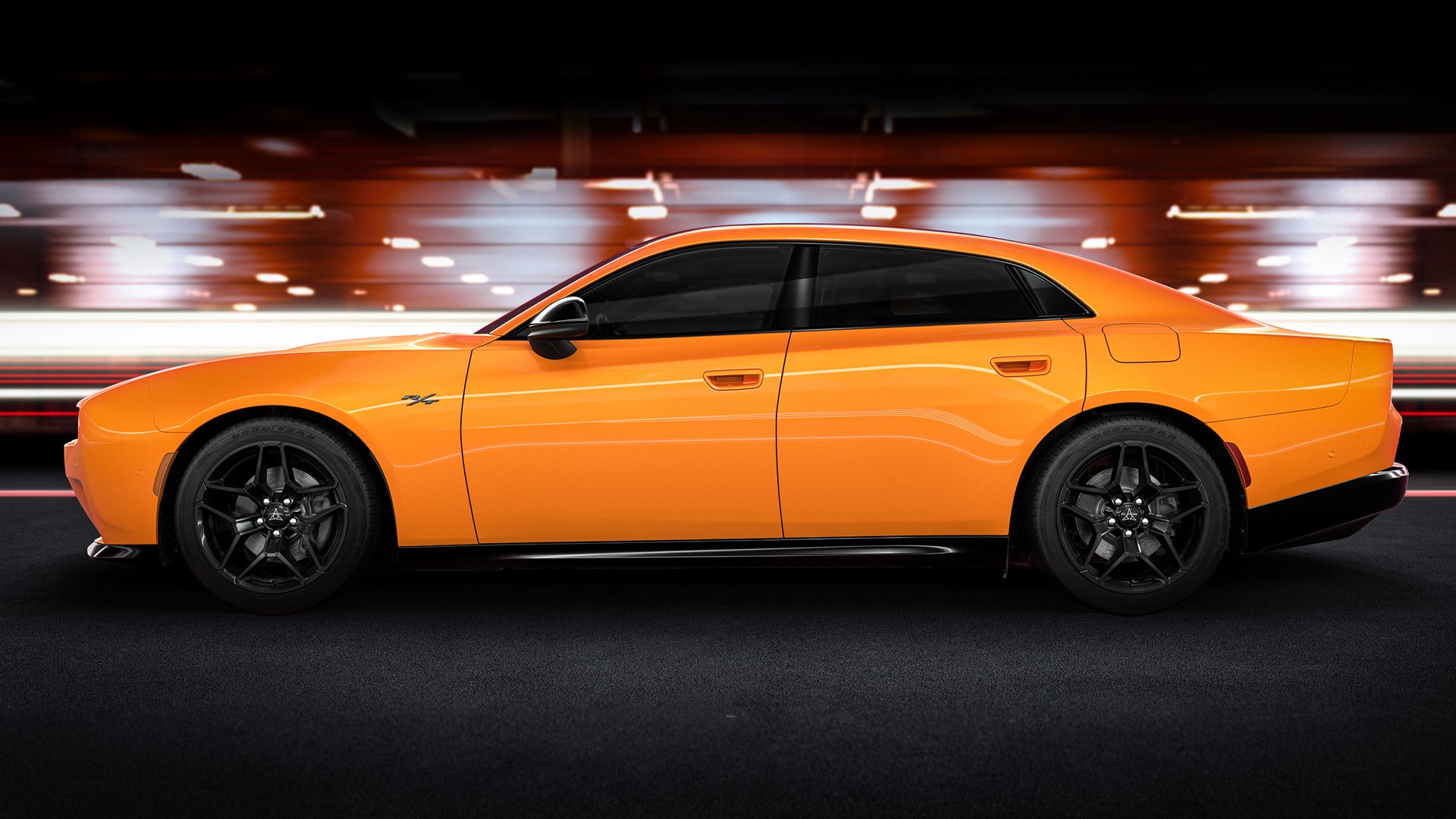
Pick from coupe or sedan designs
© StellantisIn a break with recent tradition, Dodge will sell the all-new Charger with a choice of two-door coupe or four-door sedan body styles. Both share the same wheelbase, and come with a gloss-black roof as standard.
Using the modular ‘STLA Large’ platform, set to be shared with other models in the Stellantis family, will certainly aid such flexibility.
Two-door coupe versions will enter production first in 2024, with Dodge adding the four-door sedan to the Charger range in 2025.
-
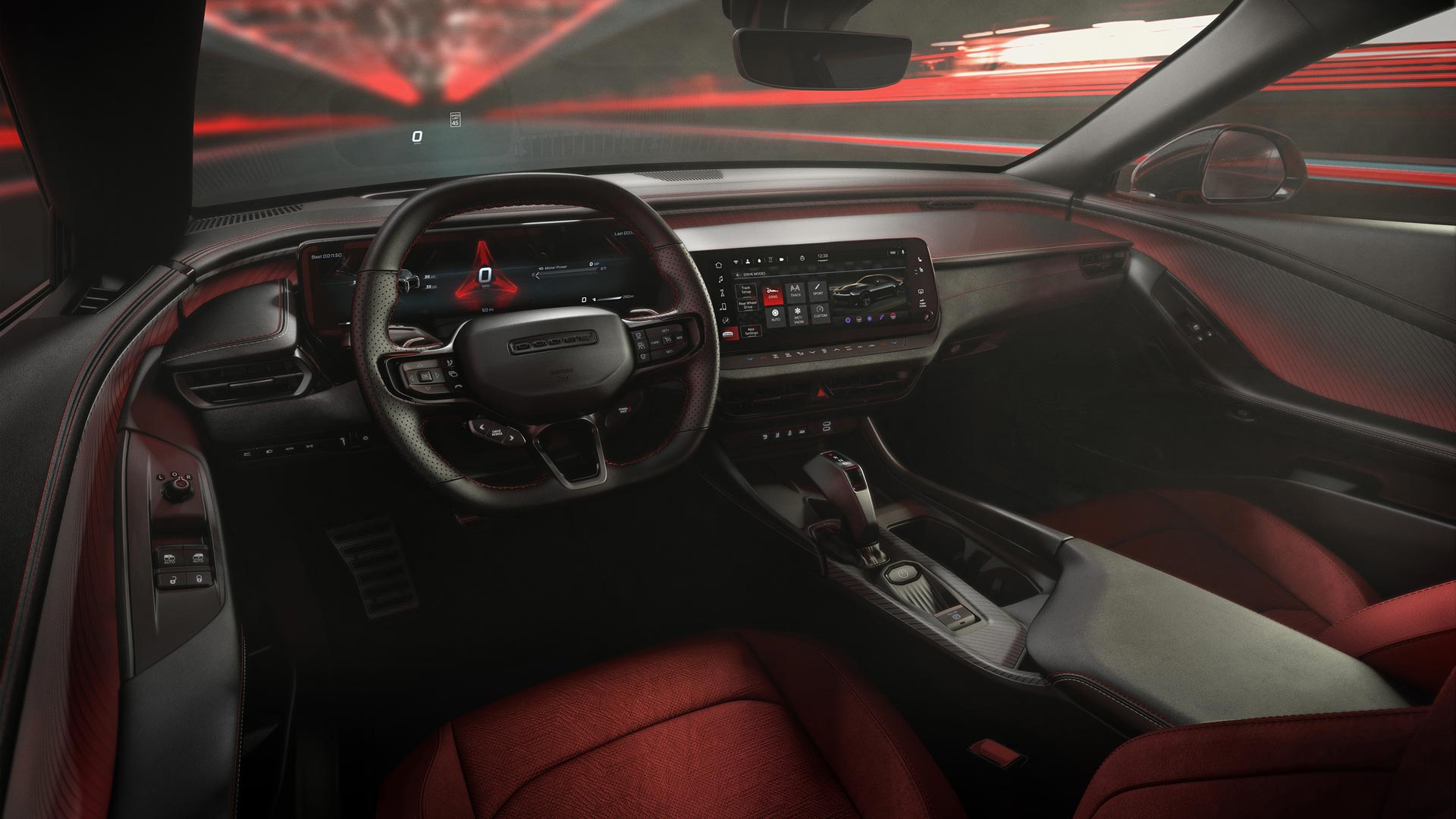
An interior built with attitude
© StellantisInterior design is lower down the list of priorities for many muscle car enthusiasts, but this has not stopped Dodge from making the new Charger a comprehensive tech-fest inside.
A free-floating central touchscreen, offered in two sizes, will be combined with a 12.3-inch digital instrument panel. A ‘One Button Press Experience’ allows drivers to instantly change the driving mode and digital gauge layout. Interior ambient lighting in 64 colors will be included, too.
An optional Track Package will allow Charger Daytona drivers to record their circuit exploits using an integrated and forward-facing 1080p, 60-frames-per-second camera.
Also, for those wondering, the EV model does come with a ‘frunk’ for extra storage space.
-
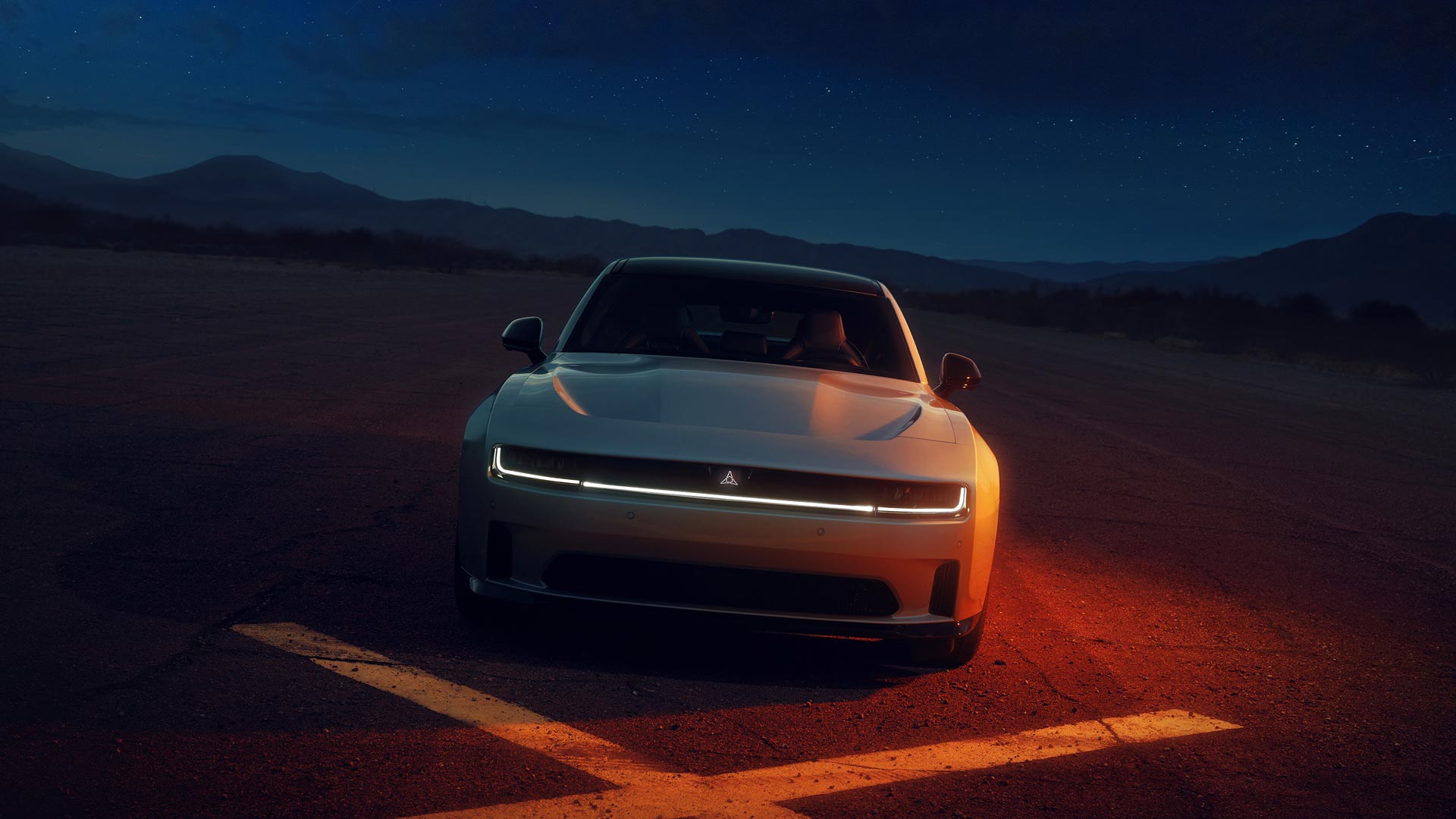
Gasoline power is not dead yet
© StellantisAlthough much of the focus at launch will be on the electric version of the new Charger, Dodge has kept something in reserve for those not ready to jump into an EV.
Starting in 2025, gasoline-powered versions of the Charger will be added to the range. The 3.0-liter twin-turbocharged straight-six ‘Hurricane’ engine will offer 420 or 550 horsepower outputs, meaning the electric version remains as top dog in the model lineup.
This shift away from V-8 power means Dodge will help parent company Stellantis to cut its global carbon footprint by 50 percent by 2030.
-
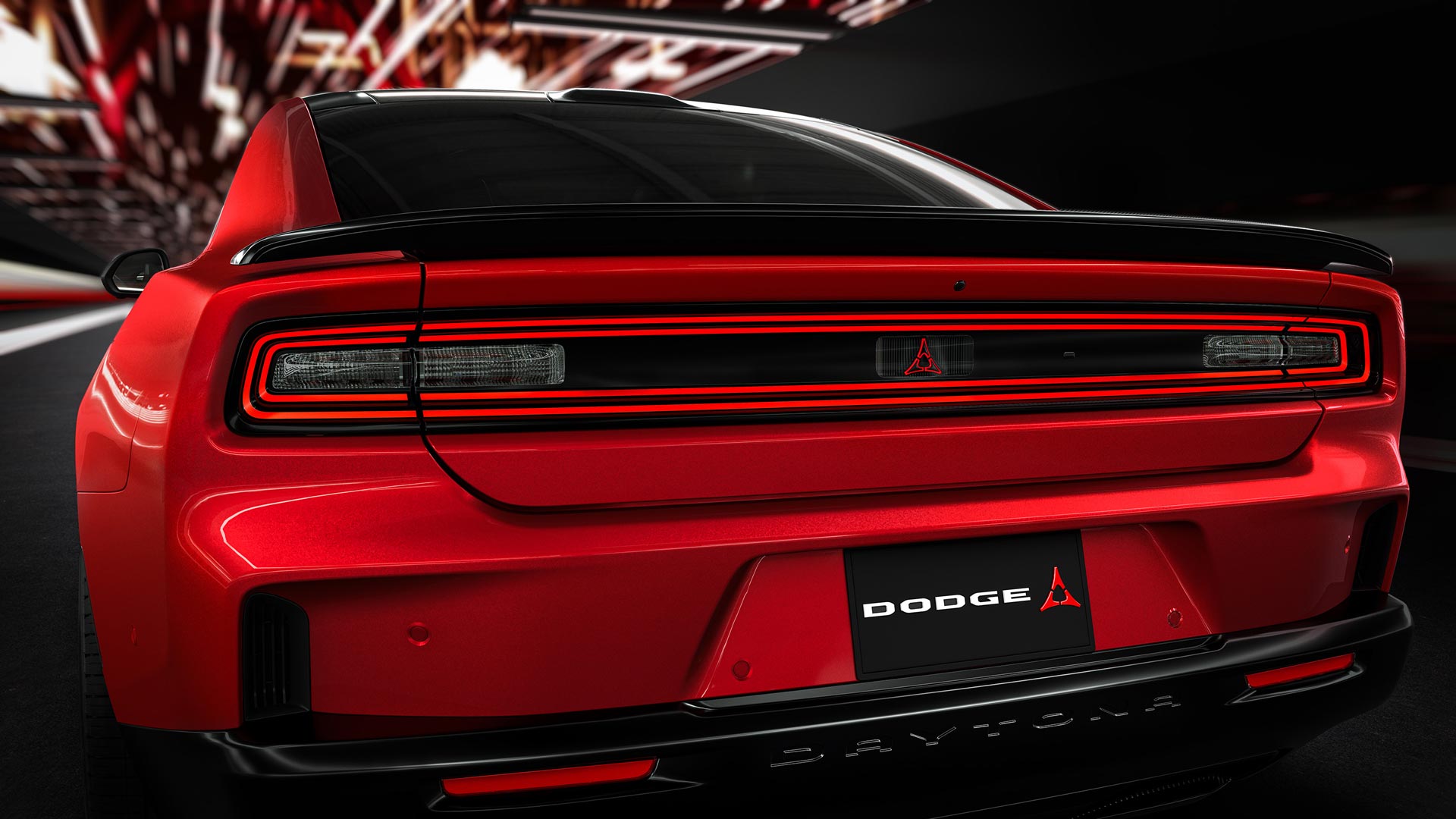
Dodge Charger: The legend continues
© StellantisGiven the Dodge brand’s reliance on its Charger (and Challenger) muscle car icons in recent years, the shift towards electrification could have presented a major hurdle for the American company.
However, the new Charger Daytona demonstrates that Dodge is not ready to let such a legendary name disappear quietly into the night. Not if the Fratzonic Chambered Exhaust has anything to say about it…
Early indications suggest Dodge will find ways to unlock even more power from its electric vehicle architecture, making the Charger Daytona just the first page of a new and exciting book.